
Year 26 ∙ number 166
may-june 2024
gamberorosso.it

WINE AT THE TIME OF INSTAGRAM
ULTRA PROCESSED FOODS 10 TRICKS TO SPOT THEM
MARETTIMO THE WILD SIDE OF THE EGADI ISLANDS
Are you ready to change wine?
New consumers, new technologies, new climate
The world is no longer the same, a change is needed. Now
Wine Travel Food


4 >Editorial
The food and wine traffic light has gone crazy, please call for help by Lorenzo Ruggeri
6 >Cover Story
Wine at the time of Instagram by Lorenzo Ruggeri
12. Bordeaux boredom “Nobody drinks it in Paris anymore” by Lorenzo Ruggeri
38. Tre Bicchieri in Vancouver: An Italian spring celebration by Marco Sabellico
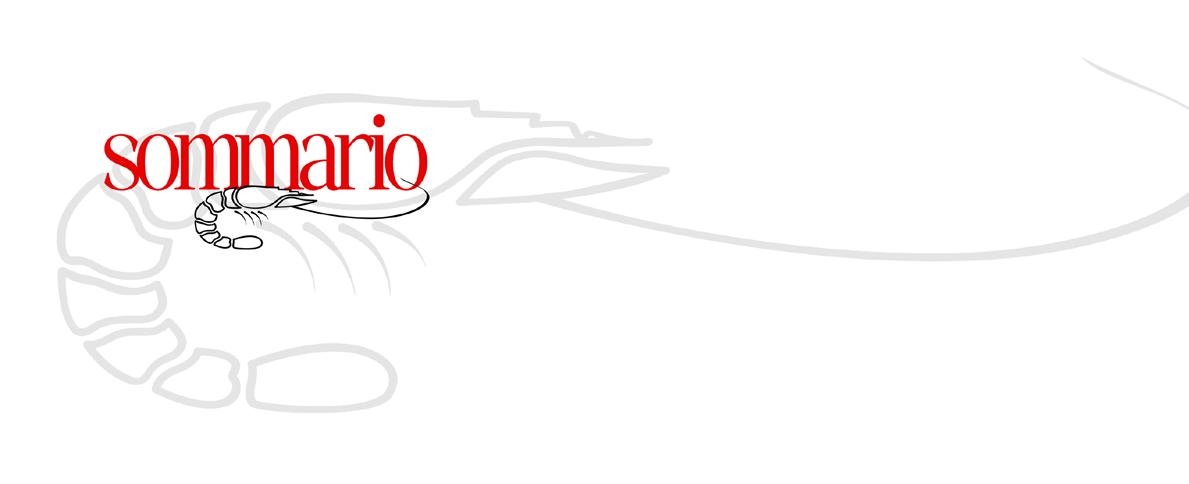
18 >Wine
“Green manure, milk and trees, this is how I care for my Trebbiano" by Marzio Taccetti
26. War doesn’t stop Ukraine’s wine by Lorenzo Ruggeri
30. Tre bicchieri in London by Giuseppe Carrus
34. Mexico City, Dallas, Miami
The Roadshow of the best Italian wines returns to the Americas by Giuseppe Carrus
40. The Tre Bicchieri in Toronto and Ottawa by Marco Sabellico
44. World Tour Africa. Almaty by Marco Sabellico
46 >Food
Confessions of a Matriciano “From Agnelli to Alberto Sordi That’s how I served Rome” by Stefano Polacchi
54. Ultra Processed foods 10 tricks to spot them by Michela Becchi
60. Recipes from emerging chefs: Gloria Cama by Clara Barra
58 >Travel
Marettimo
The wild side of the Egadi Islands by Alessio Turazza
Year 26 number 166 may-june 2024 gamberorosso.it
wine? WINE AT THE TIME OF INSTAGRAM ULTRA PROCESSED FOODS 10 TRICKS TO SPOT THEM MARETTIMO THE WILD SIDE OF THE EGADI ISLANDS New consumers, new technologies, new climate The world is no longer the same, a change is needed. Now Wine Travel Food
Are you ready to change

Editor Gambero Rosso S.p.A.
via Ottavio Gasparri, 13/17 - 00152 Roma +3906551121 - fax 0655112260 gambero@gamberorosso.it
Director Lorenzo Ruggeri
Translation Eleonora Baldwin
Graphic Project Tina Berenato - TB design
Layout Maria Victoria Santiago, Chiara Buosi
Contributors
Clara Barra, Michela Becchi, Antonio Boco, Giuseppe Carrus, Stefano Polacchi, Sonia Ricci, Marco Sabellico, Marzio Taccetti, Alessio Turazza
Photos and drawings
Copertina rawpixel and Zaira Pastorino Alberto Blasetti, G.Michelini/LuckyDesign, AdobeStock
Copyright © 2024 Gambero Rosso S.p.A. All rights reserved.
Administration via Ottavio Gasparri, 13/17 - 00152 Roma
Advertising Class Pubblicità S.p.A. via Marco Burigozzo, 5 - 20122 Milano +390258219522 - e-mail: kanchieri@class.it
Gambero Rosso is a Registered Trademark Copyright by GAMBERO ROSSO S.P.A. 2024
How to find us via Ottavio Gasparri, 13/17 00152 Roma +3906551121 gambero@gamberorosso.it www.gamberorosso.it filgamberorosso $gambero_rosso

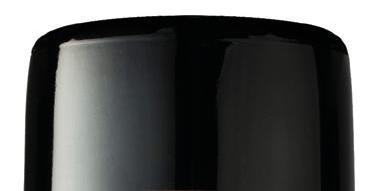
AUTHENTIC EXPRESSION OF A UNIQUE TERRITORY. sanfelice.com

The food and wine traffic light has gone crazy, please call for help
Lorenzo Ruggeri
«A bruschetta with lardo di Colonnata and one with butter and anchovies,» we hear the order from the next table. «Do you have non-alcoholic wines?» The waiter replies no; he proposes a Coke as an alternative; readily accepted by the couple. The tanks deployed against alcohol, without distinction of any kind, lead to splendid acts of surrealism like this one. Chips are fine, a Brunello di Montalcino is not. Green light for a salty cacio e pepe, it is also vegetarian among other things, a bottle of Grignolino is evil. We ask, perhaps because we have heard of it, for grape-must fermented with zero alcohol without worrying that we are swallowing the same sugar content as profiteroles. We don’t even want to know. We go out to dinner at restaurants that use butter and lard to polish dishes, loading up on flavours and registers, but the guilt only falls on what we drink. As if everything we eat ends up in another channel of the universe. We drink strictly natural, we X-ray everything that was used to produce it: whether the grapes were harvested on a fruit or leaf day, whether chamomile compress was used in the vineyard, we investigate the origin of the yeasts (Bolzano or Pordenone?), we identify the split number of sulphites added and those naturally produced during vinification. And then we pair it with a packet of Marlboro cigarettes - the most virtuous will go for vapes - or a handful of peanuts where salt counts for 60 per cent and sulphites the remaining 40 per cent. If wine is a red light, what should we say about the processed foods we eat without a thought? And of the glittering offer in aperitifs washed down with spritzes and top-notch spirits? And let’s not take it out on all those all-you-can-eat places, beloved by the young for price reasons, where intensely farmed fish is celebrated daily. Does a properly whipped saffron risotto hurt more or a glass of red? Shall we say a few words about the 99% of pastries eaten by Italians in coffee bars in the morning, alongside a burnt espresso? Are they perhaps healthier than a glass of Etna Bianco? We are in front of a traffic light gone mad, mixing up red for green. We only wake up from our torpor when we read a zero on the label. First we love Gewürtztraminer, then suddenly we only drink Metodo Classico Dosaggio Zero. We take a flight just to eat in a restaurant, a fermented onion is enough to make us feel like better people. We are what we eat and drink. With very few ideas and also quite confusing.
5
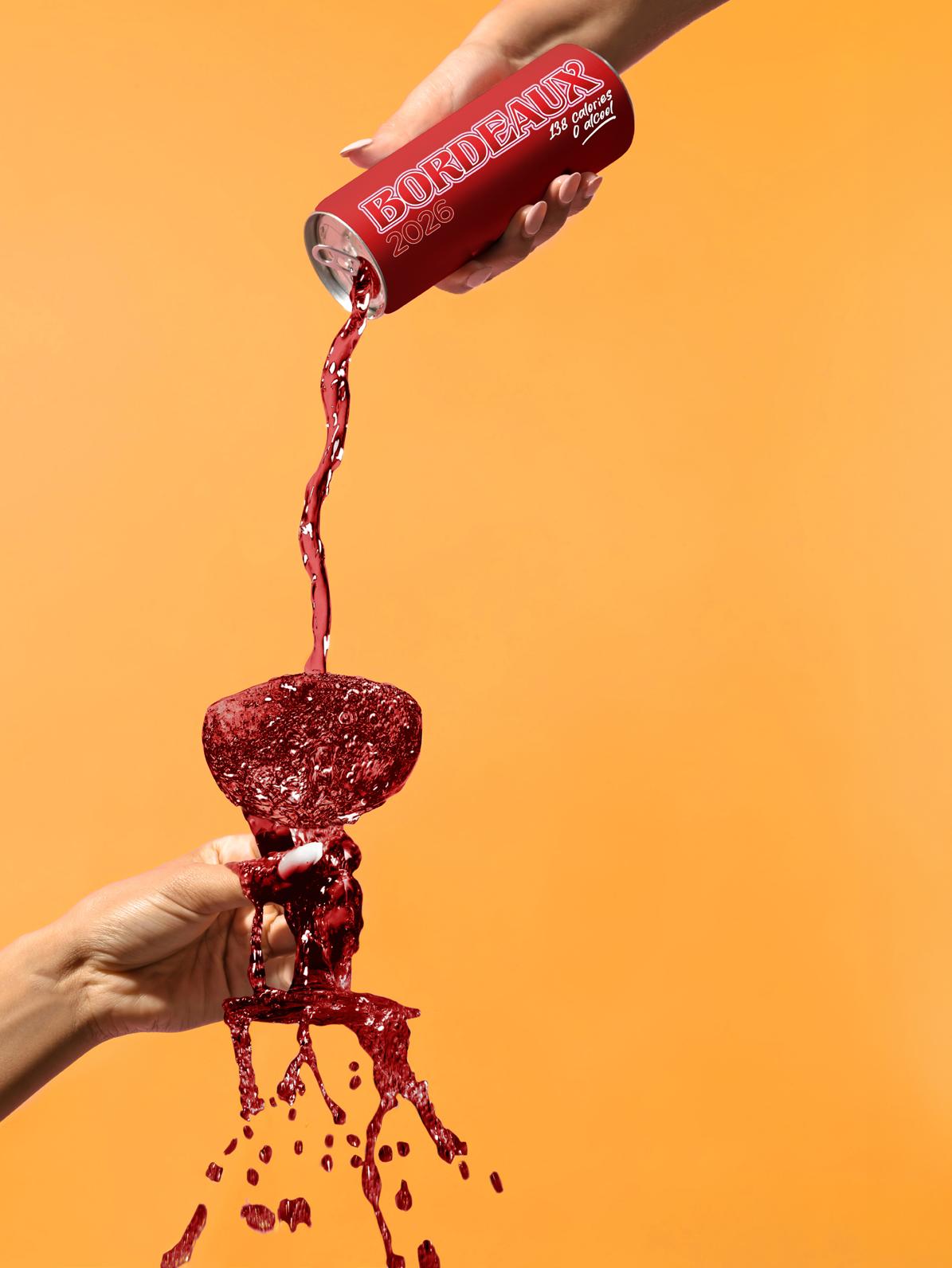
W ine at the time
The culture of the instant has also taken to the wine glass And that’s why red wine sales are dropping While whites, bubbles and macerated wines are living a new (very social) life
by Lorenzo Ruggeri
of Instagram
Fifteen seconds and sometimes not even that. To understand the life, death, and miracles of a wine today we devote the time of a story on Instagram. We focus on the attack, the title, the first impression, then we “shake it off” and take our precarious attention elsewhere. It’s a matter of concentration, and willpower: we no longer have the inclination to listen to an album from beginning to end, it doesn’t cross our minds to follow the evolution of an entire bottle as the minutes go by. Wine turns quickly, by the glass and in the cellar, often being of the current vintage because few have patience and storage capacity. The culture of the instant has also taken our wine: we want it now and we want it ready. At issue are not only shifts in consumption but the identity of wine as a cultural product.
The social effect
What is the effect of social media on the taste of wine? We asked Cristina Mercuri , Master of Wine candidate and founder of Mercuri Wine Club, between training and consulting. «The reasoning is complex. The style of wine, the concept of contemporary has changed: wines are unloaded of color and alcohol, they are more and more sleek and linear. And it is connected to the concept of consumer awareness, health aspect
first and foremost: young people are fitnessconscious, they are concerned about climate change, and they think lighter wines are also more sustainable. Social is a consequence of what is the dominant style.» Cristina, the first Italian woman to make it to the bottom of the Master of Wine exam, has no qualms about denouncing how macho the wine world is. Just look at the noise generated by an interview with Il Giornale when she declared that she is a crazy taster when she has her period: «If we are scandalized by human nature then we are still a long way off... and still I have to listen to a Franciacorta producer who at the table declares that women cannot be good winemakers because at a certain point they get pregnant and leave. And they cannot work in the winery because it is too tiring.»
On social media, he explains, there are two types of approaches to wine: one that is very vertical and specialized by type, for example on Champagne or major labels; or one goes through a more transversal profile, such as his, where educational topics and topical issues are addressed. «Talking about influencers in the wine world is complicated. There is an audience of micro-creators who have no influence whatsoever. The influencer cannot be defined so much by his number of followers but by how much authority he
7

conveys.” The language, including that of social, needs to conform to international standards and get closer to the consumer, who is increasingly dynamic, curious. And they never want to feel at fault or distant. “It is necessary to understand the needs and speak the language of the listener. The job of a master of wine, an expert, is to translate complex concepts into simple terms. There you can see his skill,» nails it perfectly, Cristina.
Wine in the time of Instagram no longer has absolute references, labels capable of bringing everyone together, in an ultras polarization favored by the medium. “Instagram, but in general all social media have fragmented wine enthusiasts into groups, contiguous but almost impermeable tribes. Those who follow certain followers, who others, always tend to refer to those who think and drink like them. There are increasingly pronounced segmentations, we tend to talk about wine more and more by breaking up the experience, we focus on details. And you lose the big picture, the fact that wine is the fruit of a vintage, a vineyard, a producer. Wine as a cultural product is increasingly the stuff of old men,” comments Paolo Trimani , owner of Rome’s oldest wine shop, which also runs a wine bar as well as a wine distribution business. On
the white wine front, demand for mature labels is slowly growing, despite still very competitive prices. “The restaurant industry already has so many problems and has little interest in doing specific work on wine. Wine is a component of the budget, you want to maximize revenue but without investing too much. There are still many who don’t want the old vintage even if it was a surplus. Yet, they don’t understand that by doing so, they are missing out on so many opportunities because there are so many customers who won’t want to spend more just because they haven’t found something that really satisfies them. It’s called lost revenue,” he adds. On the wine shop’s annual sales, the weight between whites and reds is equal, 40 percent and 40 percent, but the average price of a generic red is more than one and a half times that of a white, Paul points out.
A white turn
Compulsive cell phone use produces an attention deficit, quick reasoning, from the gut rather than the head. And an underlying hyperactivity in the glass results in a real turn to white and a substantial escape from density in red. The phenomenon is worldwide in scope. "In the U.S., red wine sales in 2023 are down 9%. A decline that affects all the main varieties: from Cabernet
8
Sauvignon (-7%) to Merlot (-12%), to -16% for Syrah. And for the future it is especially worrying that wine is the least present drink among young consumers with a share of 13% compared to 30% for spirits and beer," explains Carlo Flamini, head of the Wine Observatory of the Italian Wine Union. Similar data are recorded in Canada, and the trend also affects Northern Europe, a solid reference for the type: here, too, consumption is increasingly shifting to whites and bubbles. We touched on this during the Tre Bicchieri world tour. The music is not changing even within our borders: between 2000 and 2021, in Italy consumption of whites grew by 10 percent, rosés by 15.4 percent, while red consumption plummeted by 30.6 percent, according to a recent OIV study. Twenty years ago one in two wines consumed in our restaurants was a red, now the average is one in three (36% the national average). Take large-scale distribution as a reference, nearly 800 thousand hectoliters of reds are missing from sales in the last five years. Influences in the kitchen are pushing in this direction: meat consumption is decliningestimates are for a much steeper descent in the coming years-dishes are getting leaner and less fatty, a freshly picked mesclun has the same appeal as a rare steak 10 years ago. People want to stay light and are looking for cleanliness and finesse on the plate and in the glass. Add to that a certain unaccustomedness to the pressure of tannins, which go out the front door on reds to timidly re-enter through the window on macerated whites, often worked in the amphora: wine's most social container.
Bubbles in growth
«The shift is there, whites and bubbles finish in a couple of months, reds take much longer on average. In our list we notice a strong demand for Chenin Blanc, just as Gamay is on the rise. At last, consumption has turned to reds that are drinkable, not those bricks and mortar of a few years ago,» says Piero Guido of Le Caves de Pyrene distribution, which is very oriented toward artisanal wines. «I operate mainly in Rome. Let's face it, it has become a city of whites; if it weren't for tourists so many reds would just gather dust. Then again, with this climate so mild even in the middle of winter, what should one drink?" wonders a seasoned wine agent like Andrea Cozzini of Sadawine. He works a more generalist portfolio, full of celebrated and structured wineries. And even in the most important appellations for reds in Italy, something is moving. Sergio Germano , owner of the Ettore

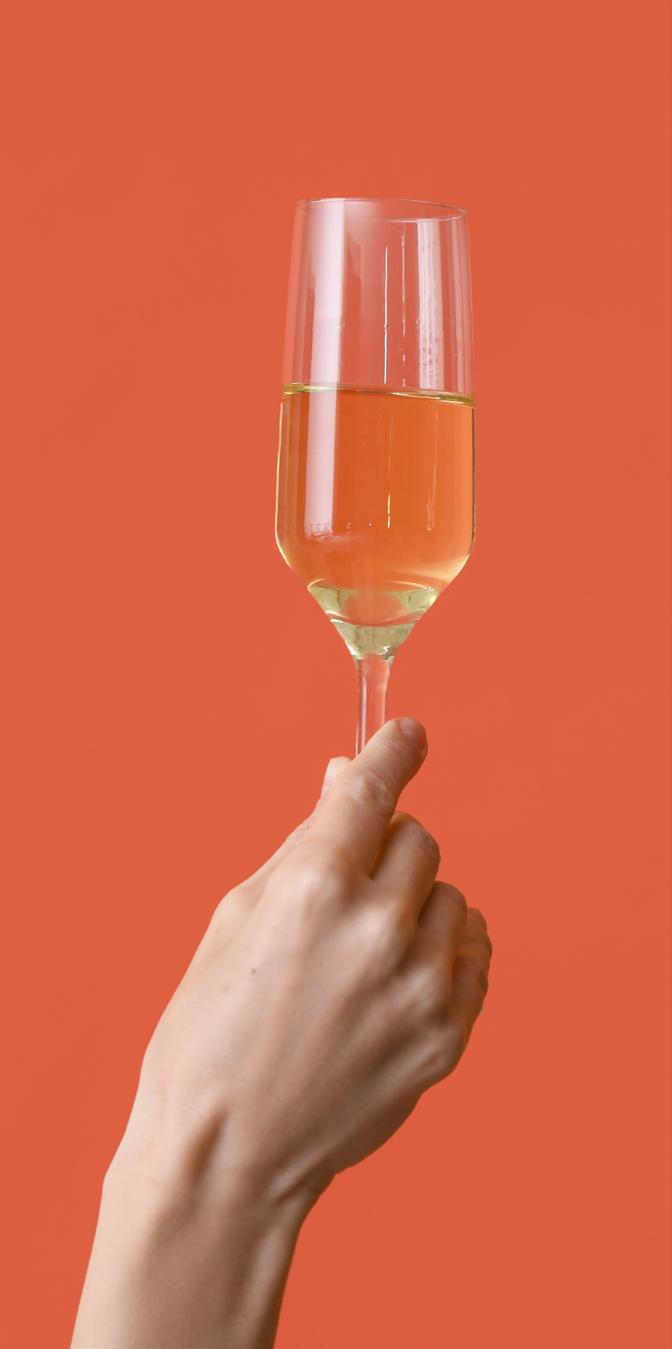
Germano winery in Serralunga d'Alba, was among the forerunners in the Langa to focus on Riesling and then Alta Langa, which account for two-thirds of production, although he signs some of the finest and deepest Barolo in the area. «The consumption of sparkling wines and whites is expanding both because of the weather contingency and because of our lifestyle. We are increasingly going out to dinner, to the wine bar, looking for quick drinks, the glass on the fly after work, a glass away from meals, before or after dinner. Wines of light carat,» he tells us.
The example of vermouth
Sergio started producing whites in the area 35 years ago, "When I planted, the local gentlemen laughed. I believed in it, but it could have been a flop because I was going against the trend. Today there is so much interest and I am happy because there is a team and no longer an individual with his experiments." When we talk about social, Sergio reminds us how much these tools have helped to enhance other types of wine. "In the last few years there is also interest in rosé, again the heat has something to do with it, but I believe in the ebb and flow of history: 15 years ago vermouths were extinct, when I was a kid they were a grandparent's stuff; today, however, they are cool and are widely used both in purity and in blending," he smiles. And if Barolo proves to be a happy island in the red wine scene, the favorite "vice" of Langa producers is to buy a few rows of Timorasso in the Alessandria area, to enrich the offer. If we go down the cypress trees of Bolgheri, we witness a similar phenomenon. Here the Bolgheri Bianco doc is experiencing a second youth, with major labels such as Ornellaia and Paleo sporting their flagship white label in recent years. And, hear hear, even a couple of interesting cuvées are making room among the sparkling wines.
Competition wines
«The territories that represented the stereotype of "competition wines" in the late 1990s and early 2000s have understood the need to aim for a different balance, without distorting their identity - says Francesco Saverio Russo , who thanks to his Wine Blog Roll and social media (100 thousand followers on instagram) has built a successful career - I think a fundamental semantic distinction between lightness and elegance, between slenderness and finesse, is necessary. We are convincing ourselves that consumers and practitioners are veering toward wines that are only more "drinkable," but this is
10
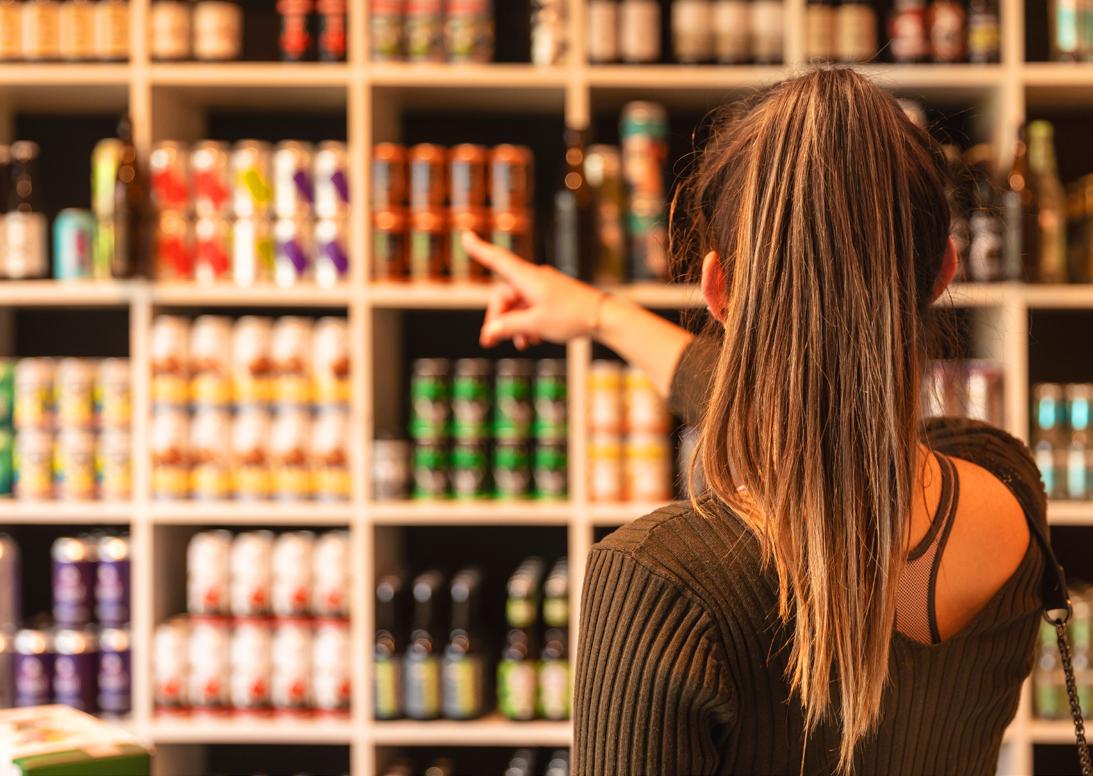
not the case or, at least, only partially so. What I am observing is an increased focus on what I like to call "drinking agility," which is not necessarily related to a wine's mere analytical values of acidity and alcohol, but rather to a wine's ability to fulfill its primary task, which is to be drunk without too much».
Echo Chamber effect
The search for more dynamic and versatile wines starts from the top (haute cuisine sommeliers, wine merchants and the media), but without relegating structured reds to a marginal role. On their crisis, however, Russo urges to tread lightly: «The wine world suffers from a complex that is defined as 'Eco Chamber,' that is, a situation in which information, ideas and beliefs/beliefs, are often amplified by their repetition within a closed and defined system.» This is a phenomenon that leads one to overestimate the extent of some phenomena, amplified by social media. «I believe,» Russo explains, «that in recent years, precisely because of the advent of hundreds of improvised communicators and petty marketing poorly disguised as popularization, everyone is learning to discern and use social as a cue to then delve elsewhere, satisfying their curiosity through more classic channels. In the meantime,
many Italian wineries still show little knowledge of the means, as well as a reticence with respect to various media starting with TikTok. «A common mistake is the lack of authenticity. What I regret is seeing the cancellation of the personality of the producer and the direct, real and passionate interaction of the producers themselves with the public. I believe that socials can no longer be seen as a mere showcase and that it needs more involvement and exposure of those who make wine, because they are the real influencers.» Among the appellations that will benefit from today's influences, Francis Xavier cites Mandrolisai in Sardinia, Lamole in Chianti Classico, and Rufina in Chianti. In the background discourses, then, there is always Etna, which constantly returns in our interviews, a perfect synthesis of the change taking place: in 2024, for the first time, Etna Bianco will equalize the bottles of Etna Rosso. The gap was stark just a few vintages ago. Before closing this piece, we uncork an important 30-year-old red, a Bordeaux from 1994, a tragic vintage by the way. A film from that era passes us by: the taste rhythm is very slow, punctuated by pauses, the editing is analog. It sounds like wine from another galaxy. Yes, the speed of our times has pierced the cork and entered the bottle overbearingly.
11
Bordeaux boredom “Nobody drinks it in Paris anymore”
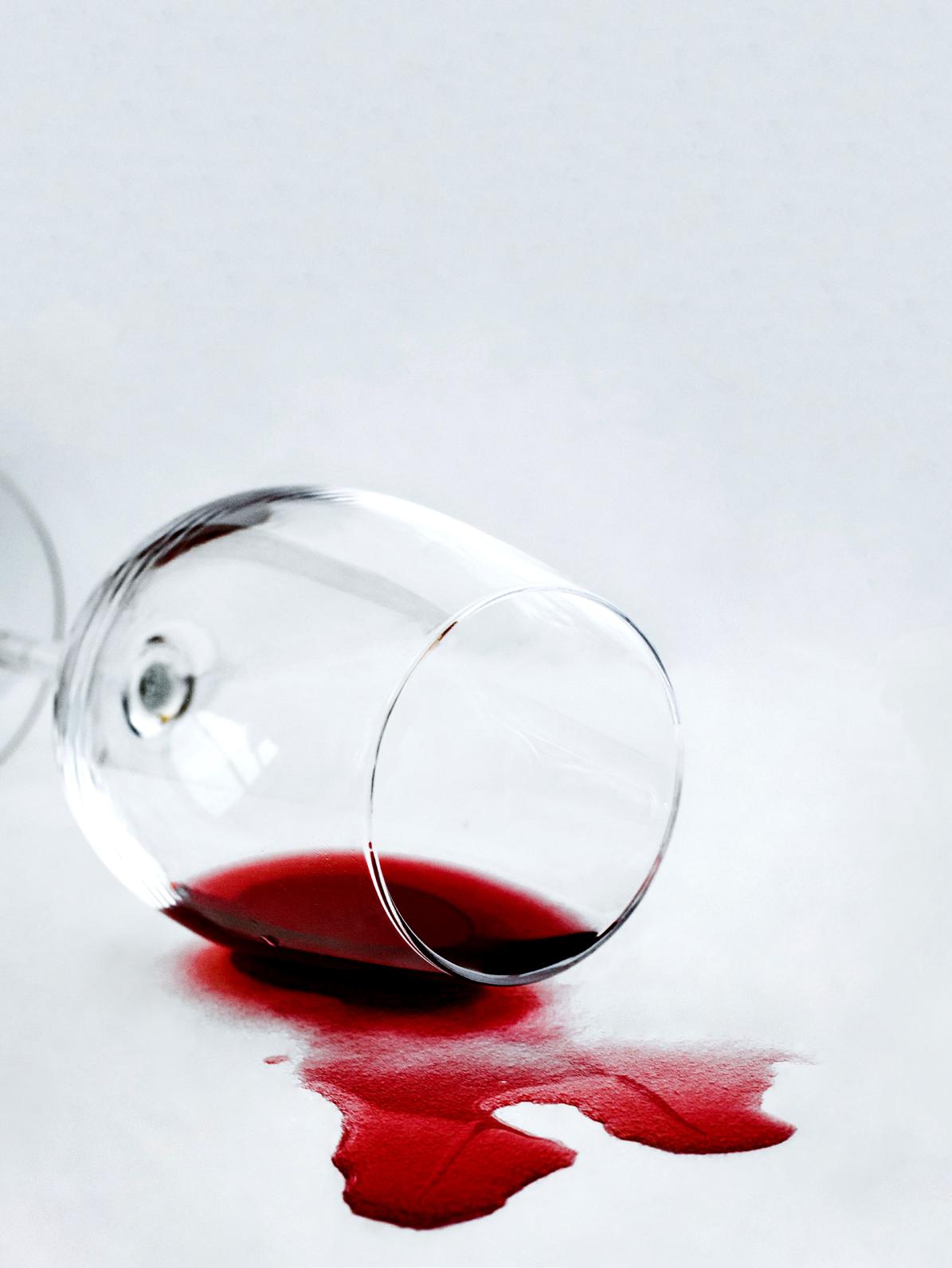
A ghost lurks in French restaurants
Sad story of a crisis that comes from afar (and affects everyone, including Italy)
by Lorenzo Ruggeri
A beautiful zinc shelf. We are seated at the counter of a Paris bistro, the wine list is very deep, so is the taproom, wide and well layered. Between the tables hovers an innkeeper, a guy in his 30s, more asshole than gruff: not even a condition of the contract. In a couple of hours we watch him uncork an unheard of amount of bottles, lots of labels from Beaujolais, Loire, Rhone, lesser-known Burgundy and a good percentage of Champagne. We also recognize cult Nebbiolos and a few local refermented wines. Bordeaux? Simply not forthcoming. In four days in Paris, we try several major restaurants and four bars à vin - we find one on every street corner, all-French civilization - the percentage of bottles consumed of Bordeaux is negligible. In the offerings by the glass it is never present, yet of important bottles in the pour we find plenty. We do not throw down our spirits and show up loaded for the tasting of Bordeaux Grand Crus within Wine Paris & Vinexpo Paris. The turnout is incredibly low compared to past editions. There is also the hand of a perhaps unfortunate room namely in the spirits pavilion, between an avocado vodka and a truffle gin. Only a few years ago the event was stormed to taste Bordeaux tears in preview, after long waits at the banquet. The negative load also comes from the insidious vintage being presented, 2021, if you know it you probably avoid it. Half of the samples in the tasting are complicated, the harvest was not exactly generous to vintners along the Garonne between two major frosts, while heavier than usual rains brought mold and serious problems with millerandage-that is, uneven development of the berries in the bunch. The result? In tastings the ups and downs are definitely more numerous than usual. «The 2021 vintage has the misfortune of coming after a wonderful triptych: 2018, 2019 and 2020. And before a 2022 vintage that we think is stellar. We really had everything in the vineyard between frost and disease, the wines are on average leaner and more vertical, less opulent and round. I am especially pleased with the cabernet sauvignon», Jean Pierre Foubet, owner of Château Camensac, tells us. In any case, Camensac’s 2021, after two icons like Pichon Baron and Brane-Cantenac, is among the most interesting tastings of the day. Given the ratings, the vintage’s prices are even on a downward trend; if we analyze the charts of many Château, prices are basically stationary or slightly down over the past 5 years, when almost all European appellations, even the most unlikely ones, have risen in double digits. True, prices had gone up so much previously, but the spell seems to have been broken.
The myth that shaped a generation
Those who grew up between the 1990s and 2010 grew up with a well-defined myth: Bordeaux. Prices
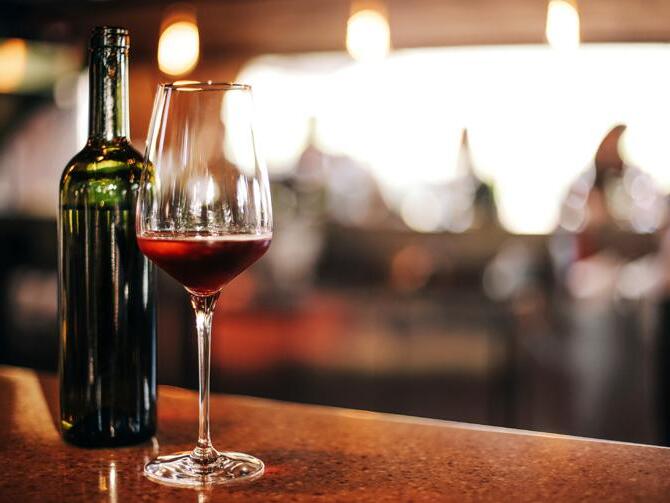
were quite different from those of today, saving here and there one could buy a couple of bottles to uncork in religious silence with friends. To hold those same dinners today we would have to shell out 6-7 times as much. Those wines shaped the parameters of producers, tasters, set shared values. Think of glorious vintages like 1982, 1989 or the more generous 1990. Pure magic. The Bordeaux model was the reference to imitate, its varieties planted everywhere in the world to flaunt tannic concentration, intensity, power. Today the emulation effect has lost force, the context, the approach to wine, the palates of wine lovers have changed. The competition of models is enormous, more and more autochthonous wines are sought, a historical identity, reds are sought that can be nimbly sloshed. And even in China, the first outlet market for France’s greats, Bordeaux sales are down by more than 10 percent in 2022, the latest figure released by the China Association for Imports and Exports of Wine and Spirits.
From primacy to boredom
«The real problem is that in Bordeaux there is nothing left to discover. A sommelier or wine expert wants to present something personal, but about Bordeaux you cannot say anything. At most, if you are good at buying, you will be able to say you are selling it for 20 euros less than your colleagues. We have fallen into a consumption by monotony that has led to a real crisis. Too much perfection today alienates; the model has not failed, but a new generational approach is lacking», says Costantino Gabardi, consultant for many wineries between Italy and France. “There is a French term that perfectly encapsulates this feeling: emmerde, meaning
13

“it bores me”, with a not uncouth meaning. A few days ago I was sitting at the table with two owners of Chateau grand cru in Margaux and Sauternes.In tasting were two monsters: Chateau Montrose (100/100 RP - Robert Parker’s rating) and Lafite 2005.Both find the former too technical, not very sinuous, while on Lafite they say it represents aesthetic perfection but does not smile, fails to engage. We tasted two monsters: Chateau Montrose (100/100 RP - Robert Parker’s rating) and Lafite 2005. Both find the former too technical, not very sinuous, while on Lafite they say it represents aesthetic perfection but does not smile, fails to engage. The more perfect a wine is, the less easy it is to understand the key: the result is boredom. Paradoxically, the famous Bordeaux grading system of 1855 was indeed the reason for success, but now it is one of the factors in the crisis because it is a system that cannot be revisited. Quality is already defined and structured upstream. It is never a discovery.” Stars can no longer drive the image of the whole area. “In Bordeaux there are problems. The ‘haute de gamme’ wines don’t have difficulties, on the contrary. Then there is more mass production, and here we are talking about 6 million hectoliters.Today for medium and low-medium range wines, there is not a big clientele because the Bordeaux commercial marketplace is not interested in them: no margins are made on these wines.And the competition has incredibly grown on a global scale: these wines no longer benefit from the image of Bordeaux,” lucidly analyzes Bordeaux’s most loved and hated winemaker: Michelle Rolland. Retailers prefer to work labels such as Masseto (about 20,000 bottles are turned over each year) than to work on mid-range wines-the segment in the greatest decline-or to play on volume. The result is an increasingly clear groove between the mass-market wines and the peaks.
The crisis in numbers
Several producers are suffering, in some cases having been forced to sell off their wine. Emblematic is what happened last February 25 when the Société Civile Fermière Rémi Lacombe (over 130 hectares in the Médoc) won its lawsuit against wine merchants Ginestet (owned by the Merlaut family) and Excell (a subsidiary of Cordier, part of the Invivo group) guilty of buying bulk wines between 2021 and 2022 at an average price per liter of around 1.30 euros. Thanks to the application of EGALIM (Etats Généraux de l’Alimentation) legislation, which regulates relations between traders and suppliers of agricultural products, the judges agreed with the producer. But it is only a small hint; Mèdoc is among the most afflicted areas. In Bordeaux, reds account for 85 percent of production, but also suffering is Sauternes: sweet wines today are not even drunk when offered. The French government moved swiftly: it focused first on crisis distillation, then on a vineyard explantation plan to recalibrate supply
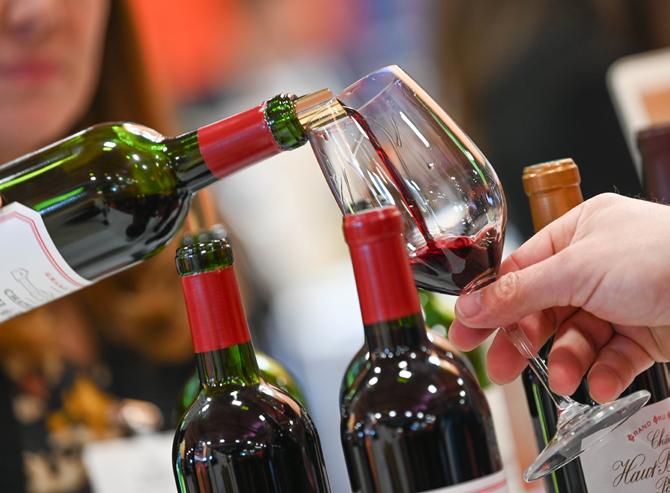
and demand. Vineyard acreage numbers speak for themselves: in 2023 Bordeaux claimed 103,210 hectares AOC (the equivalent of our Doc), which according to Civb marks a 4 percent drop over 2022. The loss is concentrated in the Bordeaux Rouge Aoc, down to 28,335 hectares (-12% on 2022 and even -22% on 2017). In 2024, the government plans to grub up about 8,000 hectares: thus the landscape of Bordeaux is likely to change drastically. The plan of French institutions sounds like a preview of what could happen in many other countries forced to significantly reduce the area under vines if today’s influences are confirmed in the medium term. And overbearingly entering the table is the no-alcohol issue. «The wine world is a conservative, closed-minded, traditionalist, self-referential world. But if wine wants to save its life, it has to create for itself an internal competitor that today is not called wine: the non-alcohol kind. The future is also here. In the next ten years people will choose by alcohol: we will be able to choose to have a zero-alcohol, mid-alcohol or full-alcohol evening. In fact, it is already happening,» Gabardi comments.
The image of Bordeaux is that of the entire industry: stopped at a traffic circle waiting to know which way to go. «Think of the Arc de Triomphe in Paris: there are eight exits and we don’t know which one to take. Thisalong with shrinking consumption-creates uncertainty and fear. But there are also opportunities for Bordeaux and the whole industry. For example, no one can see the possibility of reaching markets that do not consume alcohol, as well as the possibility of introducing taste education in schools from the age of 13. We will have new generations who will become adults by following a proper educational path and will have all the tools to rediscover the beauty of the world’s great terroirs.»
15

Competitiveness, innovation, sustainability Intesa Sanpaolo invests 120 billion for the future of Italian agrifood

Competitiveness, innovation and sustainability. These are the three pillars of Intesa Sanpaolo’s new plan for the growth of Made in Italy companies, which makes available a ceiling of 120 billion Euro for companies until 2026. The credit institution’s objective, with the programme called ‘Your future is our business’, is to accelerate the transformation processes required for industrial renewal, energy and digital transition, facilitating access to the new PNRR measures. The initiative is aimed at all product sectors and moves along three lines: transition 5.0 and energy, growth in foreign markets (particularly emerging ones such as Eastern Europe, India and the United Arab Emirates), digital development and cybersecurity.
INVESTMENTS FOR ITALIAN AGRIBUSINESS
The agrifood sector, in particular, is among those identified by Intesa Sanpaolo as strategic. The bank has, in fact, launched a new Agribusiness Programme, part of the broader ‘Your future is our business’ plan, aimed at the various territorial supply chains, including the wine sector. From 2021, Intesa Sanpaolo’s Agribusiness Department, a national network entirely dedicated to the agri-food sector, made up of over a thousand professionals and with more than 230 operating points across the country, has been active, having so far disbursed around EUR 9 billion in support of more than 180 supply chains. For this 2024, and until 2026, the commitment is further consolidated.
THE NEW AGRIBUSINESS PROGRAMME
The ‘Agribusiness Programme’, in addition to supporting companies in their daily lives, was created to promote their evolution, accompanying them in the sustainable and innovative development of the business, supporting both new businesses in the start-up phase and structured and consolidated companies in the most delicate moments of their life, such as the generational transition. Together with ‘Crescita Agri’, a loan of up to 30 years intended to support development programmes, we find products to cover business-related risks and commodity risk coverage, to protect against fluctuations in commodity prices, and, in the foreign and internationalisation sphere, structured support for companies wishing to expand their market beyond national borders.
But there are many measures taken by the Agribusiness Department, from its Pavia office, to boost the development of the agri-food sector: the ‘Supply Chain Development Programme’, which in the sector has 170 supply chain contracts to date, with the aim of strengthening ‘Made in Italy’ and facilitating access to credit; a solution that is complemented by ‘Confirming’, a Supply Chain Finance programme aimed at both the supply chain leader and suppliers, of which around 150 contracts have been signed at national level; ‘S-Loan Financing Green Projects’, for companies committed to the ecological transition and investing in projects aimed at achieving agricultural business models that are sustainable from an environmental, social and governance point of view.
In addition: the ‘Revolving pledge’ on PDO agri-food products, including wines, which has so far disbursed more than EUR 63 million in relation to financial services dedicated to the clearance of stocks of products for ageing (ham, cheese, balsamic vinegar, oil, wine).
WINE ON THE UPSWING
Wine is the first item in the foreign turnover of Italian agribusiness. Massimiliano Cattozzi, head of Intesa Sanpaolo’s Agribusiness Department, despite some difficulties in 2023, due to changes in consumption styles and warehouses still full on some international markets after the post-pandemic period, sees good
16

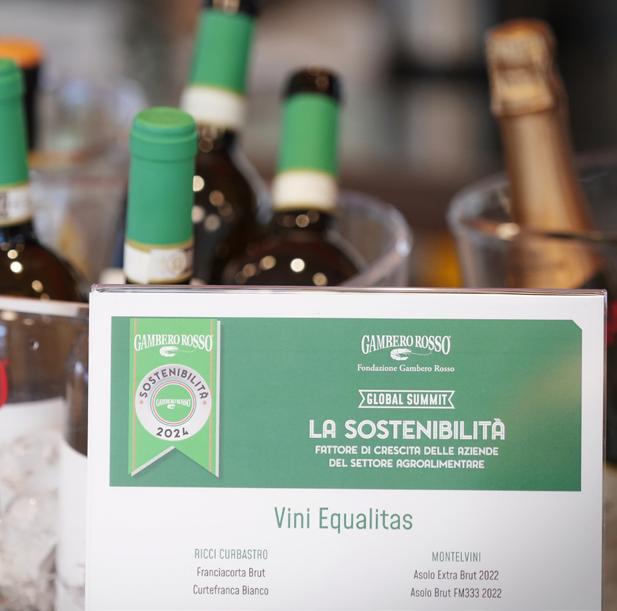
prospects for the sector between now and December: “We are looking very positively at the second half of the year. As a bank, with the launch of the ‘Your Future is Our Business’ programme, we will play our part in accompanying the planning of SMEs and encouraging new investments by implementing sustainable long-term strategies, including access to foreign markets. The context foreshadows for Italy a further recovery of consumer purchasing power and on international markets an increase in market shares, we therefore believe that demand in the wine sector can pick up again in 2024 in an important way, as it did in 2022 and 2021”.
A driving force that also involves internationalisation, as Cattozzi comments, who continues: “We considered it fundamental to reflect during a conference at Vinitaly on how to offer entrepreneurs in the agrofood world ideas, analyses, tools and strategies to increase competitiveness beyond the confines of the domestic market, aware that we can support companies in choosing the most suitable channels and give them the means to help them discover their potential abroad. An opportunity offered through the professionals of the Agribusiness Department in synergy with the approximately 300 specialists dedicated abroad and a dense international network made up of Foreign Branches, Corporate Banks and the Banks of the International Subsidiary Banks Division
Enter the QR code to access the AgriBusiness programme

Alongside, the Global Summit in January
 Massimiliano Cattozzi, head of Intesa Sanpaolo’s Agribusiness department.
Massimiliano Cattozzi, head of Intesa Sanpaolo’s Agribusiness department.
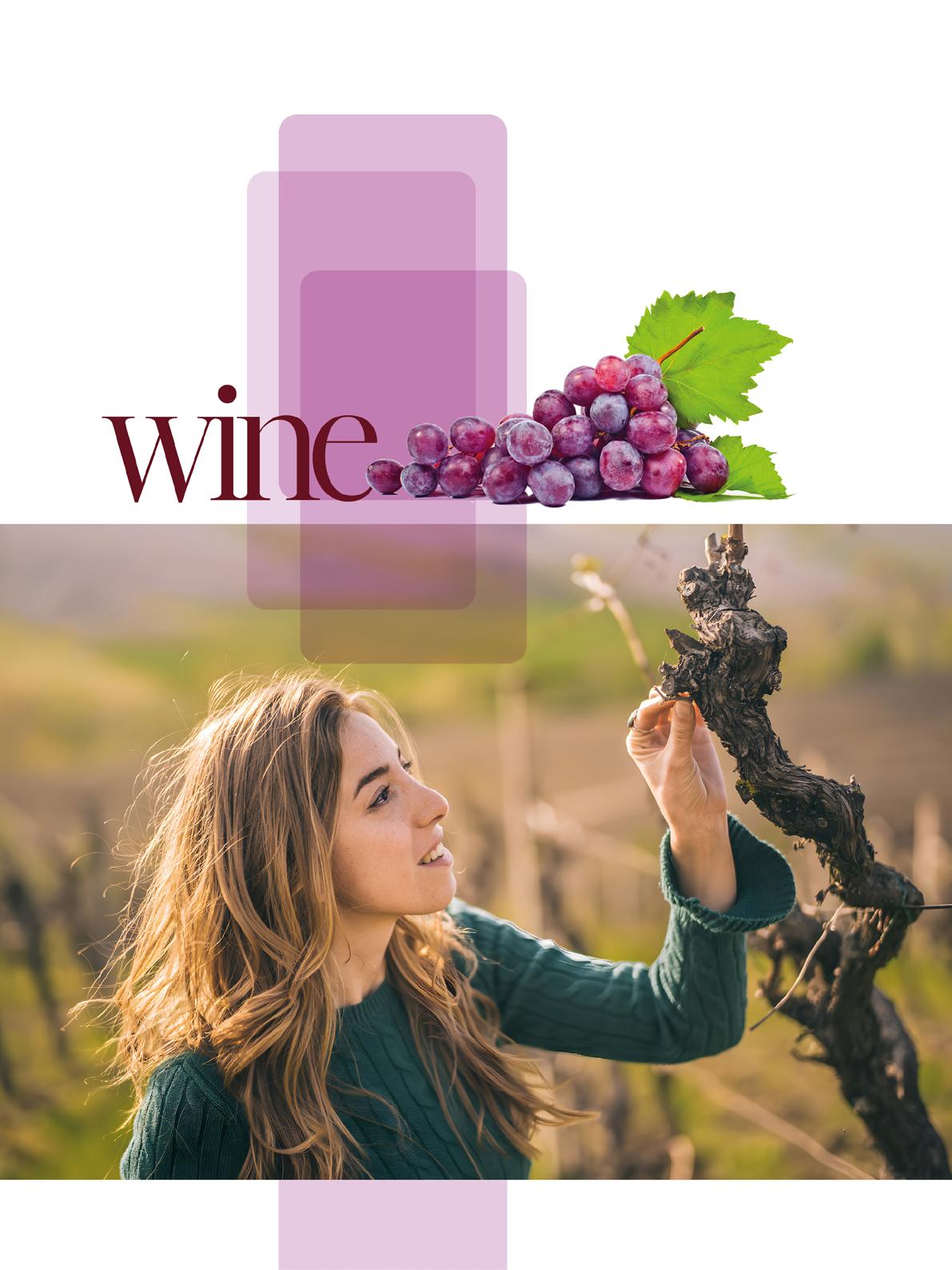
“Green
manure, milk
and trees, this is how I care for my
Trebbiano”
Chiara Pepe: “I follow in the footsteps of my grandfather Emidio. More than ever before, science and discussion can save us.”
by Marzio Taccetti
The future of Italian winemaking is gradually passing into the hands of new generations who are not only taking the reins of the winery, but are helping to breathe new life into the world of wine at a time that is by no means easy. Between climate change and declining consumption, there are several challenges facing young winemakers. There are those who are moving on a change of pace from the past and those, like Chiara De Iulis Pepe, are embracing the vision of those who came before her. Emidio Pepe, founded the company in 1964, and his granddaughter inherited both passion and enthusiasm from him. Viticulture has been a part of his life almost from the beginning, but his first vintage is that of 2020. A step into the future for this Abruzzo winery, but one made with a clear goal in mind: «To carry on my grandfather’s thinking, going to try to refine where possible some details,» making denominations such as Montepulciano d’Abruzzo, Trebbiano d’Abruzzo and Cerasuolo d’Abruzzo known as much as possible.
What was your first contact with wine?
I grew up on the estate. The boundary between home, winery, family and work has always been
very blurred. There has always been a virtuous intermingling between the different parts that has become ingrained in my daily life, but which I have experienced quite naturally.
What is the most important lesson that Emidio Pepe left you with?
My grandfather passed on to me a passion for wine that has taken on a special appeal. I don’t see it as a job, but a way of life that I live viscerally. This love related to wine and viticulture came not only from the wines I tasted at the table, but also from meetings with other producers. With them there was a confrontation in which I was able to enrich myself with their experience and thoughts about wine.
When did you decide to get involved in production?
At first I had no technical training. I studied economics at the Sorbonne in Paris. When I decided to start winemaking, I moved to Burgundy where I worked in a winery, learning a lot of the technical side in the field while studying at the University of Dijon. It was an unordinary path, but in that time I traveled and toured the world, first with my grandfather and then independently, to make our wines known.

>Energy
«Just like my grandfather did, no filtering, no oak, foot-pressing, spontaneous fermentation: the wines have more energy»
What direction are you giving the company?
The winery has not changed course. Like him, I don’t use filtration, I don’t use wood, in the cellar I press with my feet, only spontaneous fermentation... all things that I share deeply. I follow what are the founding pillars of his philosophy with the intention of trying to perfect them to raise the bar higher and higher and have more energetic wines that express the terroir even more crystal clear.
My idea is to carry on the thought that originated 60 years ago by my grandfather. A continuity in which I put my whole self and of which the roots, education and teachings I received are part. However, there is enormous freedom in the company.
My grandfather never imposed anything. The biggest responsibilities are about the decisions that are made at the winemaking level.
19
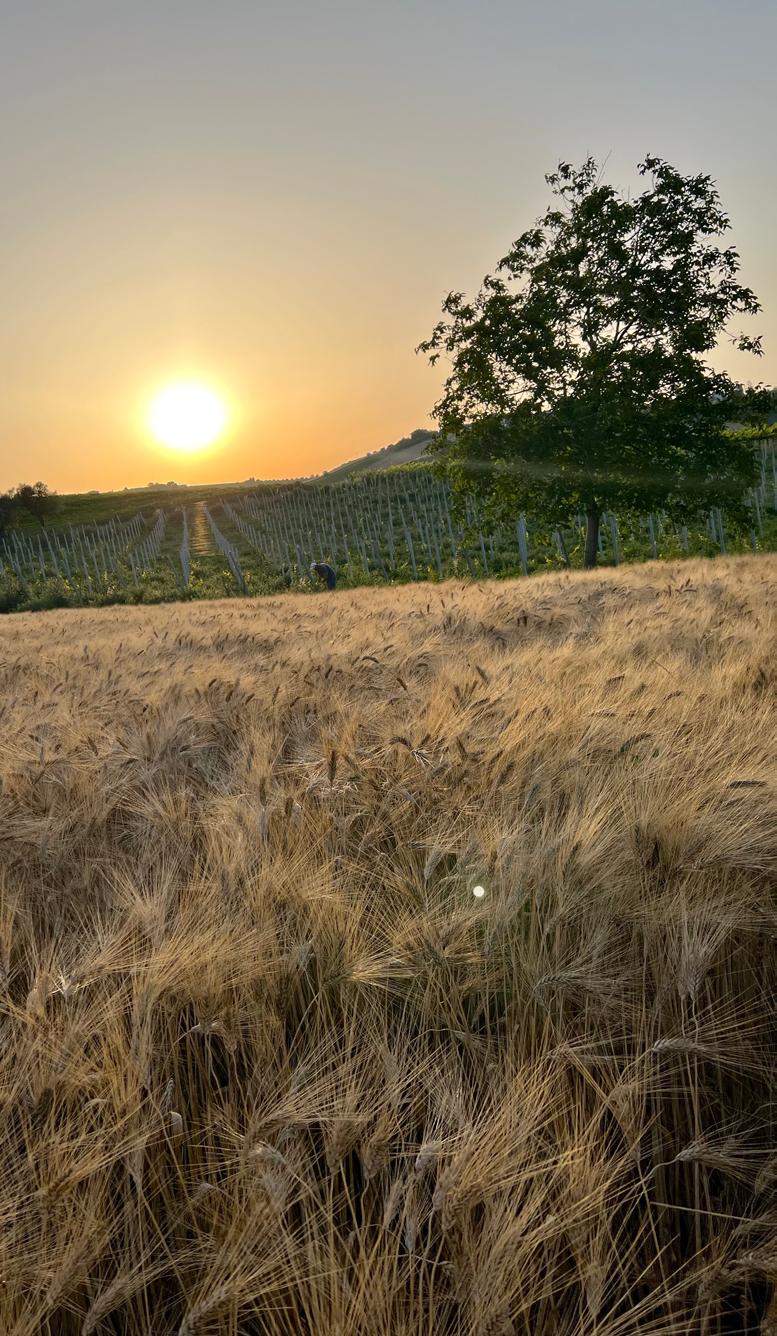
How do you experience being a woman in a predominantly male world?
I feel pretty calm about it. Today, in this world, skills count more than anything else, so I have never had any problems. A lot of men work there, it is true, but women with solid training can have great space and potential. This is something I particularly care about because, in addition to working and finding really skilled and prepared women, I find there is an equality of thought when you allow men and women to work well together.
Is the wine world constantly improving then?
There has never been so much discussion and opportunity for collective reflection. There has never been so much technical knowledge and awareness. There is a continuous sharing, dense and lively, that allows us to explore and achieve important results. A condition that gives us the possibility to grow faster. In my work, I keep comparing myself with so many people, and together we provide our experience so that we can succeed in achieving important results. I feel very purposeful because of this collectivity.
And regarding climate change?
I don’t live them with tension, but with the awareness that I have to adapt to a changing climate that has led us to an experimentation that we are putting in place. I can’t keep everything the same, but we have to strive to maintain the consistency with which our wines are produced.
For example, what practices do you have in mind?
We are putting in place constant and permanent soil coverage. The main idea is to keep them green with green manure. We don’t do a total invasive mowing, but we only lower the green so that all the botanical species that live on that soil have had at least one flowering cycle so that we also have sprouting. It is a mode that allows me to prepare the soils for extreme heat and heavy
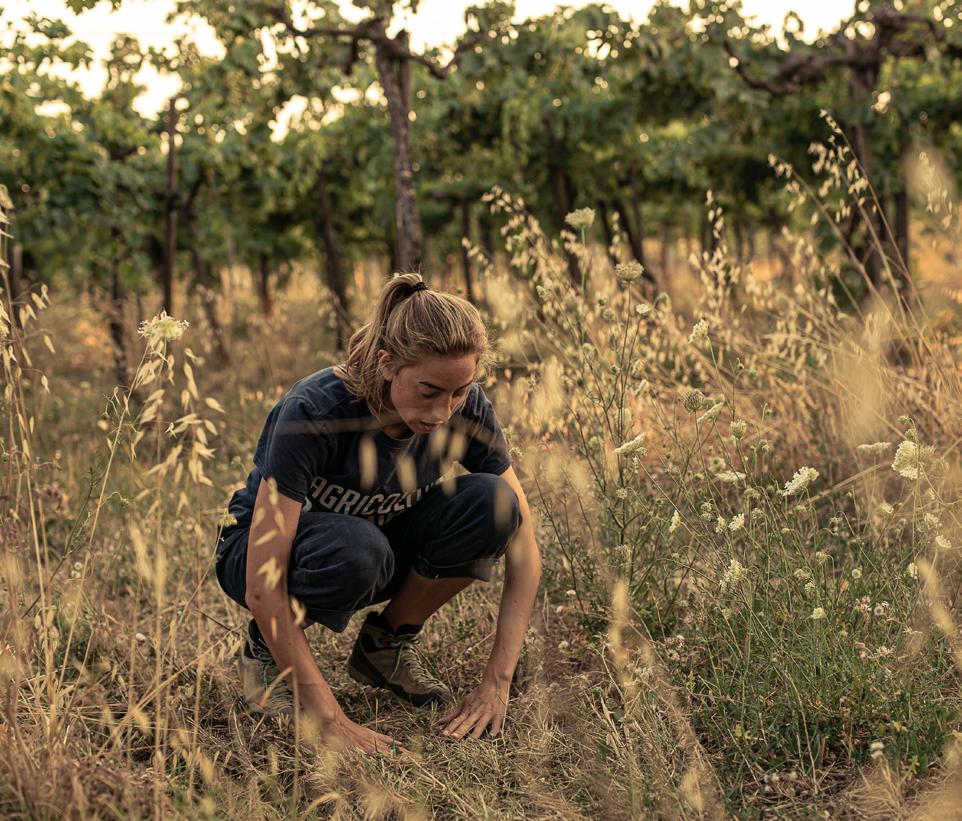
rain, as in the cases of the ‘21 and ‘23 harvests. The soils, thus completely covered, reflect sunlight and retain moisture, while the roots keep the soil cohesive. Another initiative I pursue is cow’s milk treatments and planting trees around each vineyard. The hope is to be making wine for the next 3 decades.
Eric Asimov of the New York Times called Trebbiano d’Abruzzo one of the great Italian whites… I really enjoy raising awareness of Trebbiano d’Abruzzo. I find it has incredible potential and there are several great performers within my region. In blind tastings, in batteries with wines from France, Spain and different origins it manages to amaze.
Amaze, how?
Because it has a strong identity and great expressive potential. Trebbiano d’Abruzzo has enormous versatility and great aging potential with the makings of a great white. I think there are still people who have to make this pleasant discovery, and it’s up to us to get it out there in the right places to make it appreciated. I do a lot of work in telling about it and making it known to more people. It is still a surprise to so many, but I foresee it becoming more and more part of an enthusiast’s collection.
How are you telling the story?
The company is about to celebrate 60 years since the first vintage
not just vines: Chiara Pepe practices polyculture, follows the green manure technique and leaves the land grassed (photo by Alberto Blasetti)
in 1964, and we are organizing dedicated days with our importers in Tokyo, Seoul, Montreal, London, Paris and New York. There will be in-depth master classes where we will also talk about geology with geologist Brenna J. Quigley. It’s a way to tell about the soils of our plots, but also a space where we will tell about the winery’s history. These tastings of older vintages serve to provide continuity for a future vision of the winery. In addition, the tastings
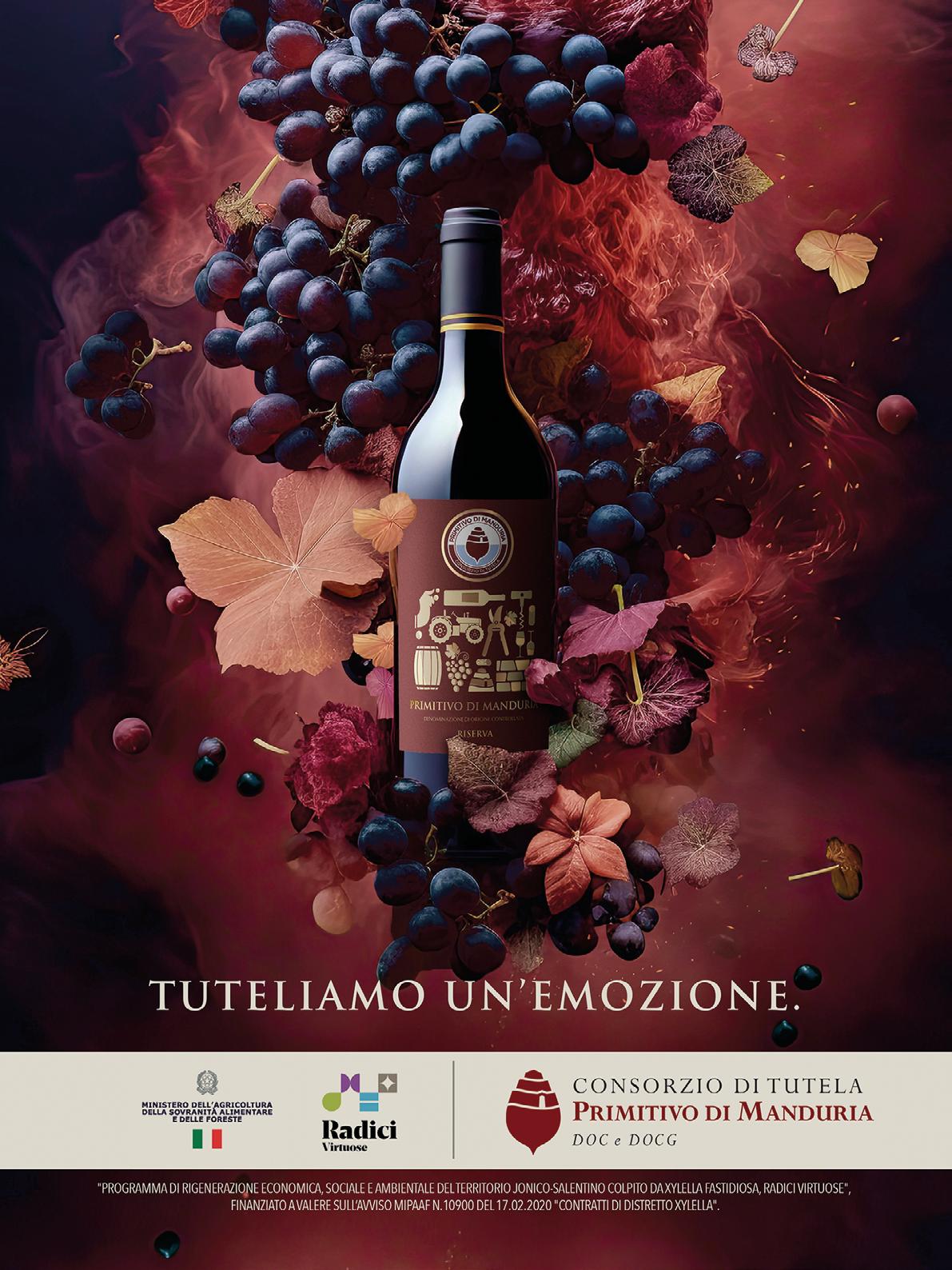
will be followed by a dinner with our farm staff where we will serve our products following the “from farm to table” philosophy. In fact, we have set up a project: growing ancient grains, chickpeas, lentils... Tastings that we will also take to big Italian cities.
Let’s talk about Vinitaly. Any news in store?
We will not be at Vinitaly. The mode of communication we have chosen has changed, and we find it relevant to bring buyers and importers to us, offering them the chance to walk among the vineyards and taste wines. Grandpa has always loved and participated in Vinitaly for many years, but it seemed a bit strange to us to talk about nature, territory, in an environ-
ment far away from the winery.
So what is the pattern followed now? We now bring our importers to the farm to let them touch and experience the farm in its entirety. We perceive a need to communicate what we do as close to the land, to the origin of our products. Narrow communication to a smaller niche of people. I don’t know if this will be the case all the time, but for now it is a choice that we feel is consonant with what we want to do.
“I
don’t experience climate change with tension, but I have the awareness that I have to adapt to changes.”
Native grapes for 4 labels
A range restricted to four labels of this historic Abruzzo winery, all geared toward giving voice to the potential of indigenous grape varieties. Emidio Pepe since the company’s founding has always believed in the potential of indigenous varieties. Montepulciano is declined in a red of character and in its rosé counterpart, Cerasuolo d’Abruzzo. The other side of the production is bianchista and sees the longevity of Trebbiano d’Abruzzo along with the generous freshness of Pecorino.
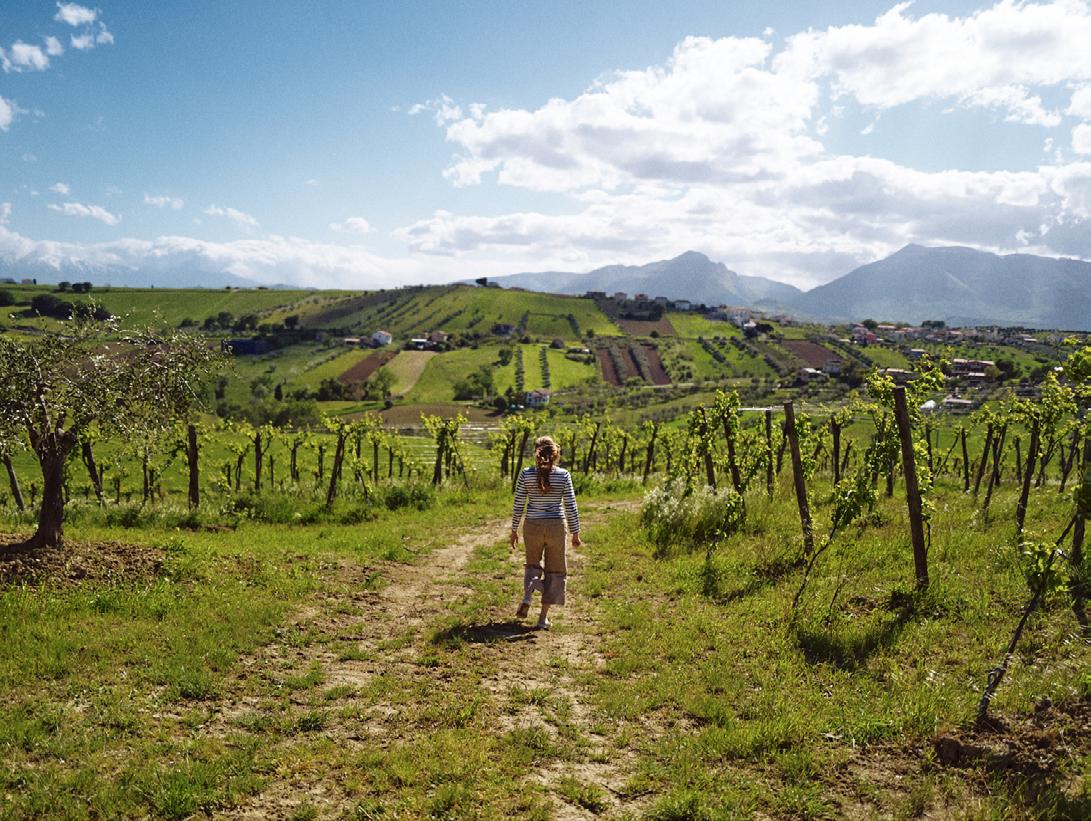

Barbera, the queen of the Asti and Monferrato landscape
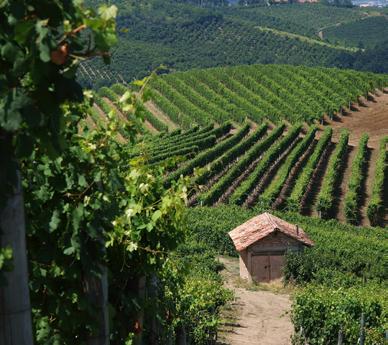
History, art, nature, food and, more than ever, wine. And what wines. Monferrato, a Piedmontese landscape jewel nestled between the Langhe, Roero and Lomellina, is one of Italy’s characteristic wine tourism areas, and the Consorzio Barbera d’Asti e Vini del Monferrato is the beating heart of this land that has been declared a Unesco World Heritage Site, representing an essential point of reference for a wine production chain that expresses, through its products, the history and value of an unparalleled territory. “Recognition by Unesco is certainly an important added value that in recent years has allowed us to take the knowledge of our wines even further around the world,” says Vitaliano Maccario, President of the Consortium. “We must remember, however, that this uniqueness is the fruit of the work carried out for hundreds of years by our men and women who have been able to maintain and interpret, according to the times, the winemaking tradition while respecting history and the landscape. Respecting the traditions that enrich Monferrato means, in fact, focusing on the preservation of historical and natural beauty, but also on working conditions. This is the vision that animates and guides the Barbera d’Asti e Vini del Monferrato Consortium, an approach that combines vision and practicality in projects and activities that contribute to making the wine-growing area increasingly recognisable and distinctive in Italy and around the world. The Consortium today protects and promotes 13 prestigious appellations (4 DOCG and 9 DOC).
These include the DOCs Albugnano, Monferrato, Dolcetto d’Asti, Cortese, Freisa d’Asti, Grignolino
In this World Heritage-listed part of Piedmont, wine plays a central role along with gastronomy
d’Asti, Loazzolo, Malvasia di Castelnuovo Don Bosco, Monferrato and Piedmont; the DOCGs are Barbera d’Asti, Nizza, Ruchè di Castagnole Monferrato and Terre Alfieri. A role, therefore, that of the Consortium, which is not only that of careful guardian of winemaking traditions, but of active promoter of innovation, sustainability and excellence to preserve and celebrate the uniqueness of this territory and its inestimable denominations.
ARNEIS TERRE ALFIERI DOCG: A WHITE JEWEL IN THE LAND OF REDS
Grown in a corner of Piedmont famous for its undulating landscapes, rich culinary traditions and, of course, excellence in wine production, Arneis is a unique expression of Italy’s wine heritage. The name of this grape variety well defines its identity: Arneis in Piedmontese literally means ‘little difficult one’. It is no coincidence that the white Terre Alfieri Arneis wines were awarded DOC status in 2009 and DOCG status in 2020, a denomination that includes Terre Alfieri Nebbiolo and Terre Alfieri Arneis, two different declinations that see the use of black grapes for one and white grapes for the other. Arneis are wines known for their delicate aromatic profile ranging from wild flowers and white-fleshed fruit to more complex notes of almonds and spices, with a distinct minerality and lively acidity that enhances their freshness and promotes longevity. The Arneis of Terre Alfieri, in fact, benefit from a unique microclimate influenced by the proximity of both the Alps and the Ligurian Sea: a peculiarity that ensures a slow and gradual ripening of the grapes, fundamental for the development of the wine’s aromatic bouquet and balance. Terre Alfieri Docg Arneis whites, in short, represent a hidden gem in the Italian wine scene: they offer a unique combination of elegance, freshness and aromatic complexity. Characteristics that have quickly brought international fame and esteem to this denomination
24

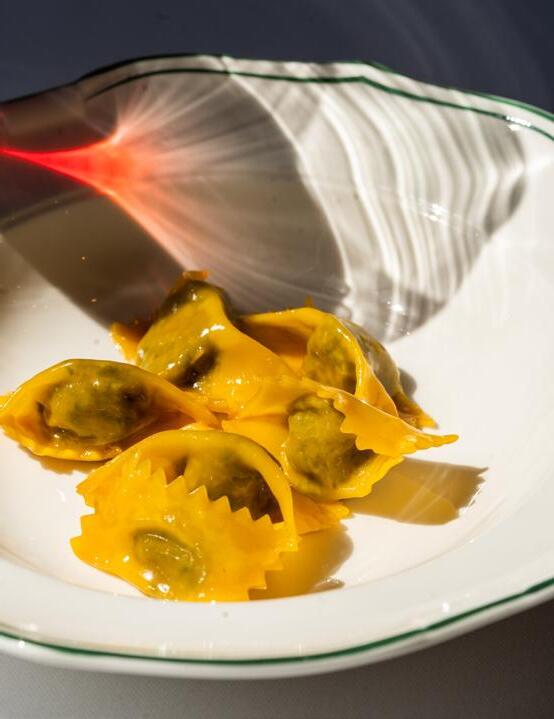
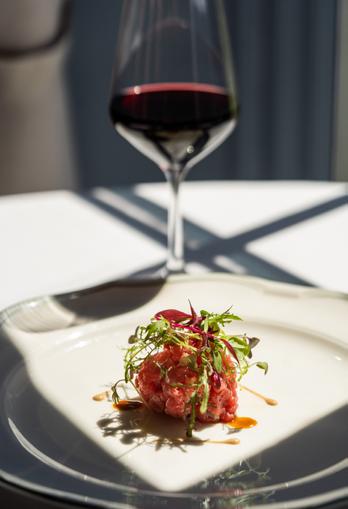
Consorzio Barbera d’Asti e Vini del Monferrato
piazza Vittorio Emanuele II, 10 0141 324368 viniastimonferrato.it fbarberadastidocg $barberadasti
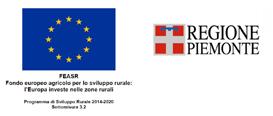
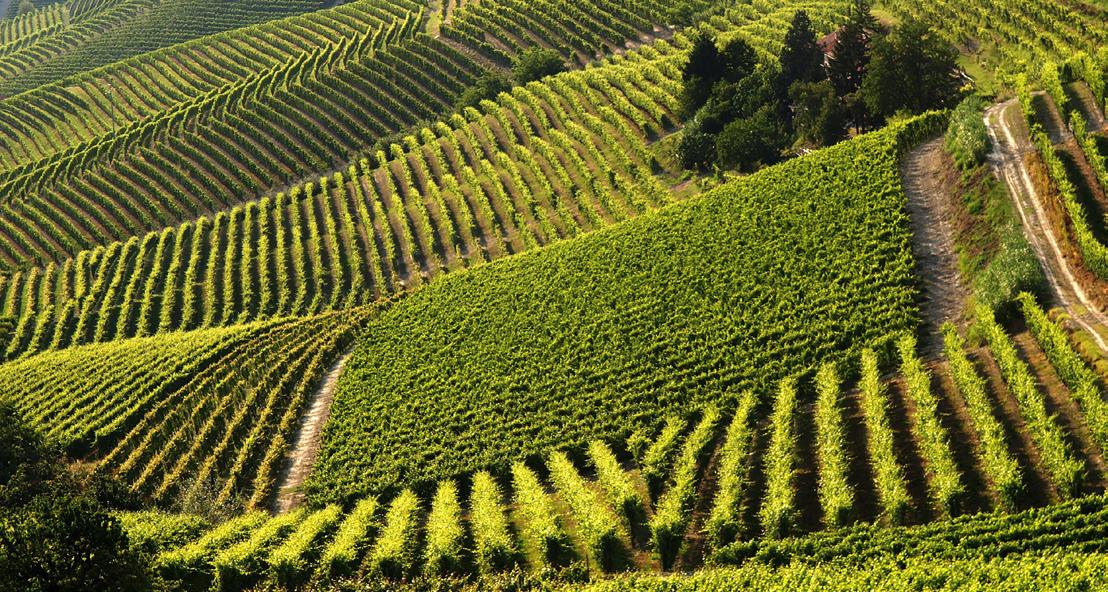
War doesn’t stop Ukraine’s wine
Here’s how winemakers got back on their feet and their wines reach around the world
by Lorenzo Ruggeri
The first smile is bitter. «This war is a tragedy in all respects, at least it has increased international attention to our wine heritage. Little is known, the Ukraine of wine has a history of thousands of years,» says Victoria Agromakova, representative of the Wines of Ukraine Association and CEO of Wine & Spirits Ukraine, the most important wine trade fair in the country, as we taste some Ukrainian bottles. It is very difficult to think about wine, to care about viticulture and its rituals, while the country has been at war for more than two years and the Ukrainian army is struggling to resist Russian attacks.
Still, many winemakers continue to produce their bottles under the constant threat of shelling, beginning to sell them around the world as never before. «We lost so many sommeliers and friends who died as soldiers. It is not easy to carry on the work when missiles are flying over your vineyards, but we are very determined to show all our potential,» Agromakova says.
Under bombs
Svitlana Tsybak, managing director of Beykush winery and president of the Ukrainian Winegrowers’ Association, a trade group that brings together
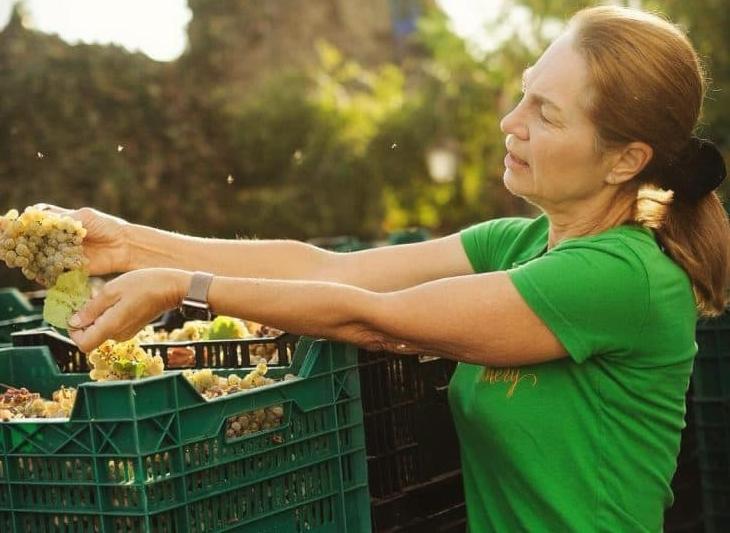
many Ukrainian wineries, focused her work on expanding domestic sales before the war began. Then came 2022, and with the war not only did companies have to drastically scale back sales in the Kharkiv and Odessa markets, but they also suffered heavy war attacks. «Many vineyards and wineries have been occupied,» Tsybak told the New York Times. In the Kherson region, for example, vineyards were mined shortly after the outbreak of war, as Andrij Strelez, manager of the Knyaz Trubeckoj winery, explained to Forbes, «They stole five million dollars worth of wine stocks from us. And we lost 32 thousand bottles in the destruction of the Hostomel warehouse.» Odessa, Mykolaiv, and Kherson, the three leading wine-producing regions in Ukraine, have been hit hardest. A market-according to Pro-Consulting data cited by Forbes in 2022-which was worth 11 billion hryvnias in 2021 (corresponding to about 355 million euros), and which had been booming in recent years.
The brunt of the war also affected wine bars and wine shops. One example of this was the closure decided in 2022 by Like a Local’s Wine Bar in Kiev, the first establishment on the entire Ukrainian territory that sold exclusively wines produced in the country. «We opened in 2016, we were three partners. Our formula was successful, before 2020 we had three bars in Kiev. Two we were forced to close because of Covid, because they were very small and so it was

impossible to maintain a distance. Then came the war and, therefore, the decision to lower the shutters of the last bar we had as well,» Evgenia Nikolaychuk, one of the founders of Like a Local’s Wine Bar, told Tomorrow’s newspaper. After two years, the partners are planning to reopen the bar with a selection of 300 labels
Resistance in the vineyard
«We have saved many vineyards. We want to show that we are brave people and keep working, and we want to present the taste of Ukraine to the world,» Tsybak adds. Many winemakers, in fact, continued to produce wine despite the bombing. According to Wine Spectator, 35 new wineries have sprung up since the Russian invasion (some have moved out of conflict zones), with a total of 160 producers across the country. In order to survive economically, Ukrainian producers looked outside their borders and over time became increasingly dependent on international markets. Stakhovsky
Wines, along with two other major wineries, Beykush Winery and Château Chizay, are now available in the United States with the launch of a new importer, Vyno Ukrainy. «I am amazed by the courage
and determination of Ukrainian producers,» said founder Bruce Schneider, a wine industry veteran living in New York City.
The European market
Signs of openness toward Ukrainian wines were also seen in Europe, as early as 2023. As domestic demand in Ukraine continued to plummet due to the war, Brian Karstens, then beverage manager at Coop Denmark, a major Danish food retailer, decided to import their bottles, effectively opening the European market to Ukrainian brands. Kiev Independent, an up-and-coming news outlet that became known outside its borders with the outbreak of the conflict, reported that after as many as 32 meetings, Coop concluded contracts with several companies and began importing wine, beer, vodka, sunflower oil, frozen berries, cheese and other Ukrainian products to Denmark
A part of history
The fact that wine production continued even during the war testifies to its cultural and economic
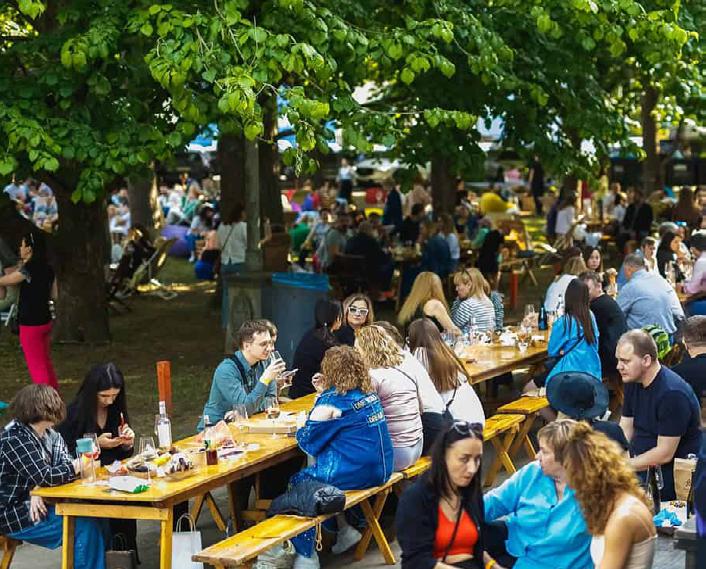
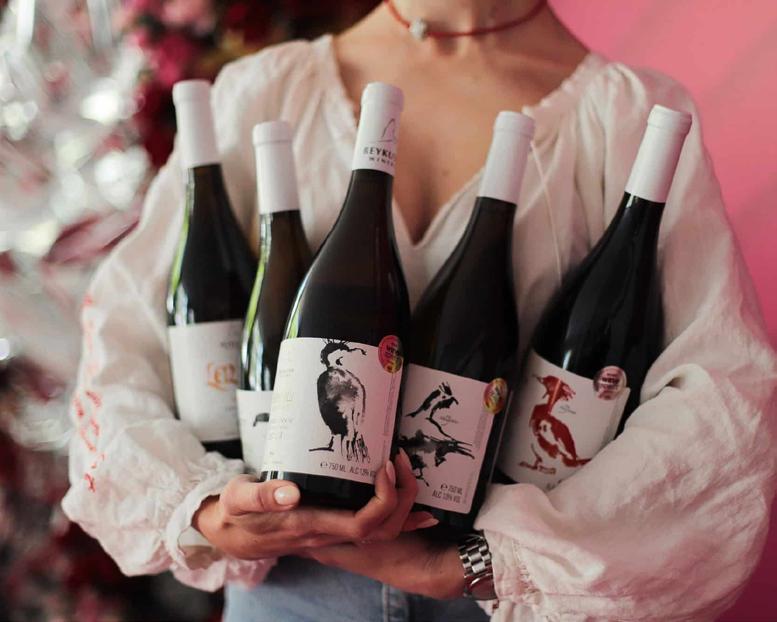
importance, and especially to the strength of local producers. During World War II, wine production in France and other countries, including Italy, did not stop despite the German occupation. More recently, wine production in Lebanon continued during the 15-year civil war. Ukraine has a very strong and ancient wine history, with findings related to wine production dating back more than 11,000 years. But the redemption of its wines came only after the end of the long autocracy experienced during the Soviet Union. “That was a period of quantity, not quality,” Sergiy Klimov, Ukrainian wine ambassador and one of the organizers of the Kyiv Wine and Food Festival, an event that has been a great success in the country, told the New York Times. «The wines were very poor. Those who grew the most were rewarded.» In 1991 independence came, wine went from government monopoly to the monopoly of the rich oligarchs. No quality, only quantity in order
to sell as much as possible. As of 2016, once Soviet-era laws were left behind, Ukrainian wine took a more virtuous path. At the time, much of the production was concentrated in Crimea, but after Putin’s occupation in 2014, a vacuum was created in Ukrainian viticulture that gave
many young winemakers scattered throughout the rest of the country the opportunity to grow and make their wines known. According to Klimov, it is from this time that the prominence of small artisanal wineries began.
Ukrainian wine in figures
In 2023, Ukrainian wine exports totaled $9 million, a surprising number considering what is happening. Ukraine’s vineyard area covers 30,200 hectares of vines, with a total of 160 wineries and about 200 varieties used. Yes, at the level of biodiversity it is one of the nations with the greatest potential, a legacy of different cultures that have dominated the area, from the Greeks to the Turks to Russian influence. Production is concentrated in the southern regions of the country, but not only that, among the most vocated areas we note Transcarpathia, bordering Hungary and Slovakia, Crimea and the Odessa area overlooking the Black Sea.
Ukrainian winemakers, convinced that they want to make their wines increasingly known abroad, also presented themselves at ProWein, the international trade fair in Düsseldorf, Germany. There, together with Victoria Agromakova, we tasted

28

several bottles. Some wines with great character, others with a slightly too “international” style, with generous contributions of wood; there was no lack of even very original expressions. The first discovery is called TeltiKuruk, a native white grape variety: the translation is foxtail. Will it be a distant relative of the codadivolpe (foxtail in italian) we find in Campania? «The name comes from the shape of the cluster, which resembles precisely that of a fox’s tail (in Turkish teltikuruk); it is part of a group of grape varieties typical of the Black Sea and was brought to Ukraine by the Turks about 500 years ago. Today, however, it no longer exists in Turkey and is found only here,» Agromakova adds.
The best tasted wines
We taste the Telti-Kuruk 2023 produced by Beykush, one of Ukraine’s up-and-coming, familyrun wineries, founded in 2010 in the Mykolaiv region, close to the Black Sea. Aromas of almond and hazelnut, the mouth is rich, played more on pulp than acidity, with a hint of sweetness, nuances of candied citrus give roundness to a dry and delicately savory finish. Contained aromaticity and a measured register that grows after about ten minutes in the glass. There is also room in Beykush’s range, for a white from Timorasso. The wines, like those from Chateau Chizay, have recently been imported to Italy as well. «In
Soviet times Ukraine was a reservoir of wine for the Russians, very high yields and endless expanses of vines just to create quantity, often to then produce something else. Now the mentality, thanks also to the new generations, has completely changed,» Agromakova explains. Moving on to reds, the scene is taken by another native variety: Odesa Black. «We are more and more convinced that it will be the flagship grape variety of Ukraine, wineries are betting a lot on it.»
Odesa Black is a hybrid grape variety created in 1948 in Tairovo from a cross of Alicante Bouschet and Cabernet Sauvignon. That is why it is also called Alibernet. It gives rise to wines that are dark and impenetrable in color with a very special spicy complement. We taste three versions of it. Odesa Black Big Wines Big Art 2020 Vinos de La Luz, we are south of the city of Odessa, has an important concentration, with distinct aromas of licorice, cocoa and plum. The barrel is still in evidence, but it has juice and manages to stretch out despite a mighty structure. Particularly creamy, with a clean pepper finish. This is a production drawn in only 1,000 bottles.
From the same line, the Odesa Big Wines Big Art 2023, processed in steel, shows pronounced acidity and very particular notes of sumac, eggplant and beet on the nose. The palate is a bit harsh, with herbaceous and spicy notes that intersect in a long, bittersweet sensation that disorients and surprises. We close the trio with the Odesa Black 2020 Villa Tinta, in this case we are in the southern Bolhrad region of Odessa Oblast. We put our noses into it 4-5 times: intense and curious nose. There is the trait of rose and geranium, then pepper and cumin. The mouth has a well-delineated aromatic touch, notes of blueberry and a coriander finish. «A Borsch wine, we like to think of Odesa Black as a natural extension of our classic beet soup.»
29
Tre Bicchieri in London
The future of Italian wine is defending itself against Brexit and the export crisis
by Giuseppe Carrus
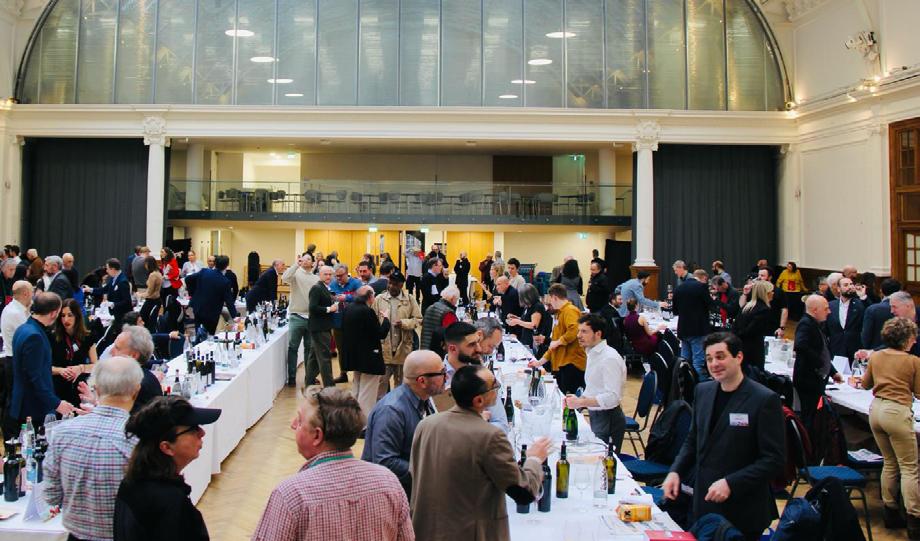
On Thursday 21 March, more than fifty wineries presented their wines in London, led by the Tre Bicchieri awarded in the latest edition of the Guida Vini d'Italia. From early afternoon, many professionals of the sector walked through the doors of the Royal Horticultural Halls, the event space where Gambero Rosso has been organising wine tastings in the British capital for several years. Euphoria and positivity were not lacking among the guests and so the producers present returned home with a certain optimism, which in these times is no bad thing.
The calendar says that spring has only just begun and, even in London,
we certainly don't have to wait until April or even May to feel the first warmth of fine weather. London welcomes us with beautiful sunshine, but above all, we find the great capital full of enthusiasm, with clubs and restaurants grappling with overflowing waiting lists and with Italian wines as the protagonists, not only in the signs dedicated to the cuisine of our country, but also in restaurants with an international flair, in bistros run by the new generation of British chefs, but also in gastropubs, increasingly trendy in London and throughout the United Kingdom. All this certainly does not counteract the negative export figures for Italian wine for 2023 (in the United
Kingdom they speak of -9%) but it does give hope for a recovery to be implemented thanks to the growing culture of wine across the Channel and an increasingly strong knowledge of Italian wine. Certainly the Gambero Rosso event is one of the litmus tests for Italian wine in the UK and to hear the producers present at the event there is hope for a plus sign in the next three years.
As many as 36 wineries are present individually, in addition to the Consorzio dei Vini del Piemonte (present in the main hall with a dedicated corner) and the 'Resistenti Nicola Biasi' business network, present with all the companies of the network
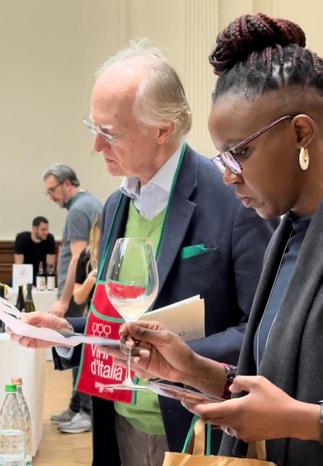
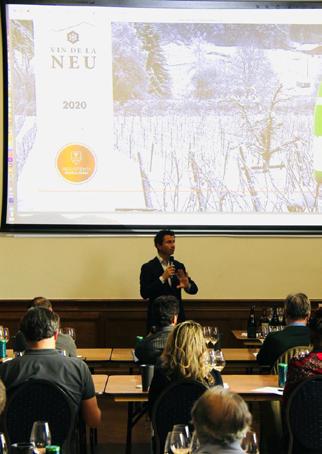
dedicated to wineries that have bet on resistant varieties and protagonist of a masterclass dedicated precisely to resistant varieties.
For some companies it was the first time with Gambero Rosso in London. Alessandro Perini, oenologist and director of the Romagnoli winery, did not hide his satisfaction: "I met a public that was knowledgeable about the world of wine and very curious about new realities like the one I represent. We are located in Piacenza and produce Metodo Classico from Chardonnay and Pinot Noir, outside the most renowned areas for great bubbles, but the British public in Italy is looking for lesser known territories, still to
The
best restaurants in London
As many as 12 establishments (including restaurants, pizzerias and wine bars) were awarded this year in London. At the top was Enoteca Turi, which won the Three Bottles as best wine bar, followed by Passione Vino, Satyrio and Tozi. Among pizzerias, 50 Kalò remains firmly in the lead, but Napoli on The Road’s results were excellent. Among the restaurants, the real novelty comes from chef Emanuele Pollini (already awarded by the Guide as Chef of the Year in 2020). Pollini now leads the restaurant Pollini at Ladbroke Hall, a very beautiful space that is also an Art Gallery, Auditorium and Garden. His cuisine is 100 per cent Italian, made of the highest quality raw materials and traditional recipes. To him go without a shadow of a doubt the Three Forks. He is followed by two other valuable establishments in the capital, Luca and Macellaio.

be explored. We know that in the UK the world of bubbles is on the rise, now we are trying to follow up on the requests of all the professionals we met today." Ivan Giuliani, Terenzuola winery, is also positively surprised by the curiosity shown by some sommeliers and importers about Italian indigenous wines. "We produce both Vermentino and Vermentino Nero, straddling Tuscany and Liguria, and our wines mirror that strip of land between the two regions. It is very rewarding to be able to talk about biodiversity to the London public who appreciate the unique characteristics of Italian wine.
Speaking of unique characteristics. We have already mentioned something about the masterclass on
resistant vines, it is worth saying a few more words. The class was an unprecedented success: there were forty places available, but 160 people registered for the event. In almost two hours, oenologist Nicola Biasi, flanked by Giuseppe Carrus, editor of the Guida Vini d'Italia, explained what resistant vines are, how they come into being, how they behave and above all what the benefits are, in terms of environmental sustainability, of an agriculture based on grapes that resist fungal diseases. In addition, there was a tasting of a wine from each winery belonging to the “Resistenti Nicola Biasi” network. There were many questions from the audience and the tasting desk was stormed after the masterclass. Truly a great success.
31

The convergence of sea and vineyards in glasses of Brindisi Doc

A rich, sun-kissed land that knows how to produce great wines, that of Brindisi. Its mild climate makes this area one of the Italian places with a great wine-growing vocation, a very ancient tradition, whose first production dates back to the Mycenaean civilisation, handed down over the centuries until arriving at today’s quality productions, obtained thanks to attentive, prepared and innovative producers who are now part of the Brindisi Doc Consortium.
Producers who can benefit from an area where sea and vineyards have met for thousands of years in order to tell the story of the indissoluble bond with wine. In Brindisi, after all, the Via Appia, now a candidate for UNESCO World Heritage status, came directly from Rome, and it was from here that the precious nectar left for the East.
Remains of amphorae have also been found in the cellars of the Royal Palace of Herod the Great in Masada, in present-day Israel. These amphorae still bore the seal of the kilns from which they came: Apani, Giancola, Marmorelle, once the names of localities and now also the names of the Negroamaro and Susumaniello crus: the grape varieties that characterise today’s Brindisi DOC wine, a designation obtained in 1980. Then, in 2003, the Consorzio Brindisi Doc was established to protect this marvellous heritage of vines that lies close to the Adriatic Sea, along that stretch of Apulia that runs from the Torre Guaceto Nature Reserve to the south of the city, on soils of both calcareous origin with a sandy component that allows the vines to grow luxuriantly, as well
A rich, sun-kissed land is one of the Italian terroirs with a great wine vocation between the Adriatic Sea and the Torre Guaceto nature reserve
as on the deeper, clayey and iron-rich soils found inland towards Mesagne, the Baroque city, with its alleys and churches made of carparo (the typical local stone) worn away by the sun and time.
THE REBIRTH OF SUSUMANIELLO
Negroamaro, Malvasia Nera di Brindisi or di Lecce: these are the evergreens. But the Nineties also saw the start of the innovation that has breathed new life into Susumaniello, the most distinctive grape variety of the Brindisi area of Salento, the autochthonous variety par excellence, from which Susumaniello Brindisi Doc is obtained, a deep ruby red wine that reveals a broad bouquet of scents reminiscent of plums, sour cherries and blackberry jam, and is dense and rich, savoury, round and structured on the palate, with a long, enveloping finish. And it is thanks to this wonder and to Negroamaro and its siblings that the consortium has been able to win the place it deserves in the world, where every day the wines become more recognised and recognisable.
32


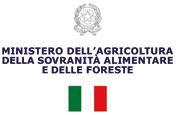


Consorzio Tutela Vini Doc Brindisi e Doc Squinzano
Brindisi
0831 652749 vinibrindisisquinzanodoc.it
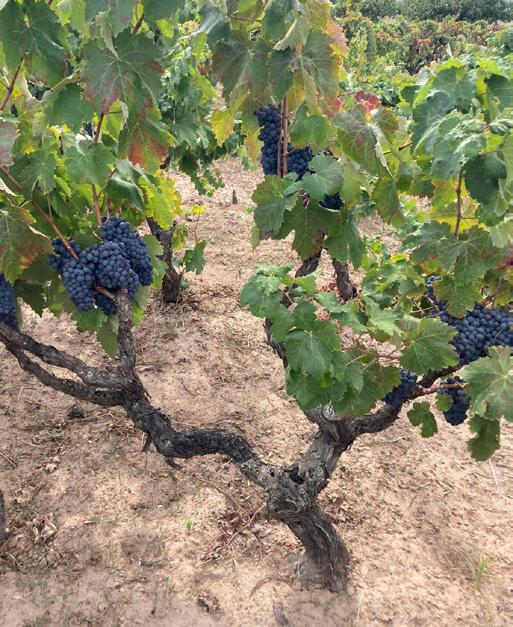

INIZIATIVA REALIZZATA NELL’AMBITO DEL “PROGRAMMA DI RIGENERAZIONE ECONOMICA, SOCIALE E AMBIENTALE DEL TERRITORIO JONICO-SALENTINO COLPITO DA XYLELLA FASTIDIOSA, RADICI VIRTUOSE”, FINANZIATA A VALERE SULL’AVVISO MIPAAF N.10900 DEL 17.02.2020 “CONTRATTI DI DISTRETTO XYLELLA”. 33
Mexico City, Dallas, Miami
The Roadshow of the best Italian wines returns to the Americas
by Giuseppe Carrus
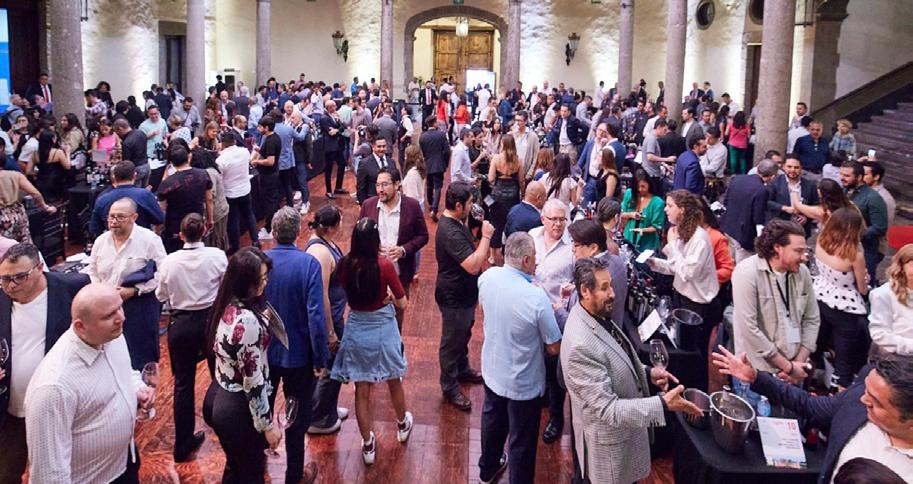
After the U.S. stages in February, Gambero Rosso returns to Central and North America and does so through the Top Italian Wines Road Show, the international tour that takes several wineries around the world with the desire to target emerging or nontraditional markets. The first stop on this latest pan-American tour is Mexico City, a city where Gambero Rosso has been going for several years now. Mexico is a great country to invest in, and the data of the last few years confirms what we perceived at the event held on April 25 exactly 10 years after the first time Gambero Rosso visited Mexico. Back then it was April 23, 2014. From the first hours, the halls were packed with industry professionals and, we state without fear of contradiction,
knowledge about Italian wine has grown enormously in recent years. Jose Ramirez, a young Mexican sommelier, says: ‘Italian wine has always attracted wine enthusiasts and professionals here in Mexico, but whereas previously only the historic Denominations such as Montalcino, Barolo or Chianti were known, now there is interest and curiosity for small undiscovered territories and indigenous grape varieties. There was also incredible interest in the masterclasses, four of which were organised. Starting with the one dedicated to Prosecco Doc, organised in collaboration with the Prosecco Consortium (more on this later in the piece), we continue with the three dedicated to a wine from each company taking part
in the event. After Mexico City it is the turn of Dallas. In this city the Gambero lands for the first time, while the Texan experiences already speak of tours in Houston and Austin. Perfect from the onset, given the influx of spectators both in the main hall and in the area dedicated to masterclasses (this time Montepulciano d'Abruzzo was on stage). James Sotheby, master sommelier with great knowledge of Italian wine, tells us: «By now Texas is mature about wine in general and Italian wine. We like these events because we can taste both some great wines that we already know, but also make many discoveries. The Montepulciano d'Abruzzo masterclass was really interesting, both for the
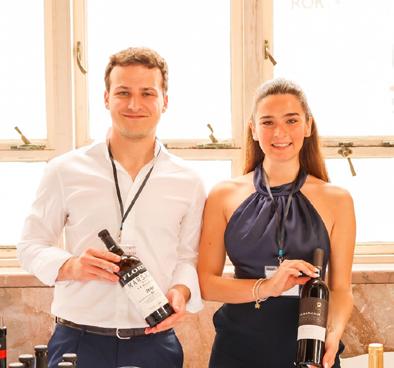
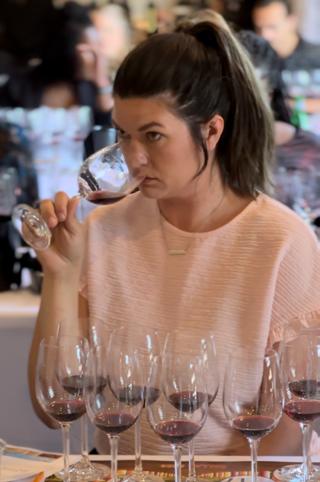
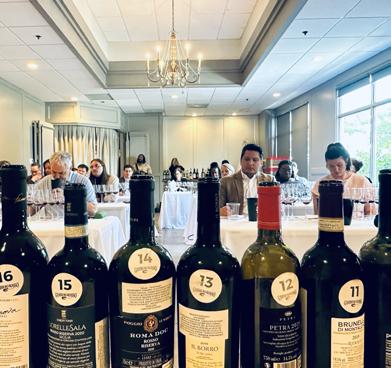
On the left, the tasting in Mexico City. On top, producers in the Miami venue. Below, the Masterclass in Dallas
Prosecco protagonist in Mexico City
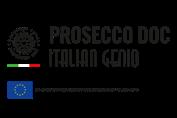
Prosecco really has no boundaries, neither geographical nor gastronomic. This is demonstrated very well when it arrived in Mexico City, for the first time with Gambero Rosso, and became the protagonist of a masterclass organised in close collaboration with the Prosecco Doc consortium and conducted by Tanja Barattin (head of the consortium's promotion and valorisation area) and Giuseppe Carrus (editor of the Gambero Rosso Vini d'Italia guide) who said, «Long gone are the days when in Mexico only the most famous Italian Denominations for red wines were known. The knowledge of our national territory is growing by leaps and bounds, and bubbles seem to be the most appreciated. Among these, Prosecco plays a leading role for its immediacy, drinkability and pairing ability. It is no coincidence that in recent years export figures for this wine have shown significant increases and a trend that, for the reasons mentioned, will continue to grow». Several labels were tasted - representing the companies Bortolomiol, De Stefani, Le Contesse, Le Rughe, Ruggeri and Villa Sandi - in front of an attentive audience of sommeliers, restaurateurs, importers and journalists, each of which represented very well certain characteristics of the vivacious wine known around the world. Behind the world of Prosecco there are different areas of production (in addition to the inter-regional area of Friuli and Veneto, there are two sub-areas Trieste and Treviso), different dosages starting from very low sugar residues, up to Extra Dry whose production reaches 70% of the total; and Dry, but also different typologies. The classic version is produced from the white grape Glera for a minimum of 85% and other white varieties authorised by the regulations, while the Rosé version is produced with between 10 and 15% Pinot Noir. But, as we said at the beginning, the real success of Prosecco here in Mexico City lies in the versatility of its gastronomic pairings: the recommendations are many and all hit the mark. From Tacos to Enchilada, from Fajitas to Quesadilla, you are spoilt for choice: bubbles always help, especially with the fattier and most unctuous dishes, but they also tone down the spiciness that often doesn't go so well with wine, but in this case pleasantness is guaranteed. The acidic freshness also plays a fundamental role, especially with meat and cheese dishes, while the more dosed Proseccos (starting with the Extra Dry types) are ideal for the more savoury and succulent Mexican dishes. Prosecco Rosé deserves a separate chapter: that extra touch of body makes it a friend of the most structured and full-bodied dishes, proving that it certainly does not stop at the aperitif. One recommendation above all: Barbacoa, a tortilla stuffed with mutton and guacamole.
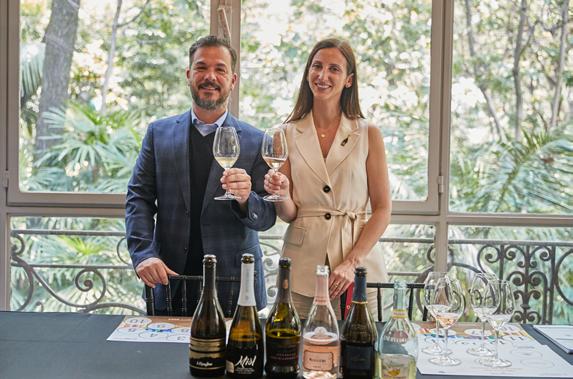
Abruzzo wine on stage in Dallas and Miami
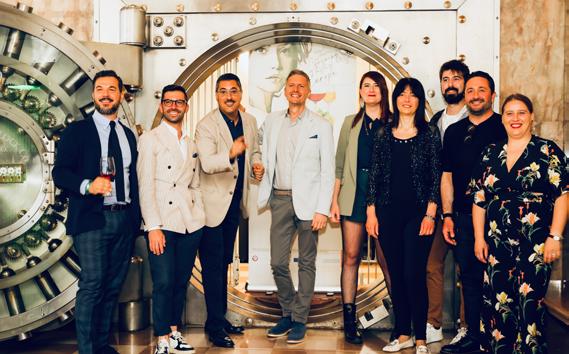
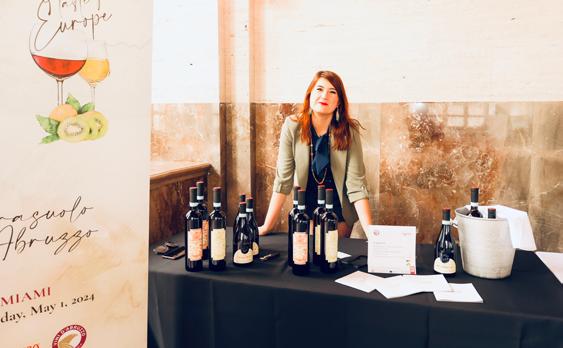
Double appointment for Abruzzo wine in the States, first in Dallas, then in Miami. In the Texan city, the star was Montepulciano d'Abruzzo, through a masterclass that kicked off the event, but also through a corner dedicated to Montepulciano producers located in the main hall where the tasting took place. The masterclass was led by Giuseppe Carrus, editor of the Vini d'Italia guide, assisted by Davide Acerra, communication manager of the Consorzio Vini d'Abruzzo. In addition, the well-known and esteemed American critic Jeremy Parzen gave a wonderful introduction to the region, the various soils, climate and the behaviour of Montepulciano according to the areas where it is grown. Many wines were tasted, from the younger ones, fresh and joyful in their fruity notes, to the Reserves to drink with a few years on their shoulders. Same region, same grape variety, but different colour instead in Florida. In Miami, Cerasuolo d'Abruzzo was on stage. Here, too, masterclasses and producers' corners. A lot of curiosity and questions were asked about a wine that it is wrong to label only as rosé. Cerasuolo has its own colour (we would say more dark pink or light red), its own olfactory sensations and its own unique taste, which makes it identity and great character. Another added value for Cerasuolo in these parts? Its behaviour at the table, not only with typical Abruzzi foods, but with many foods from around the world, and the Tex-Mex cuisine tried in Miami is proof of this.
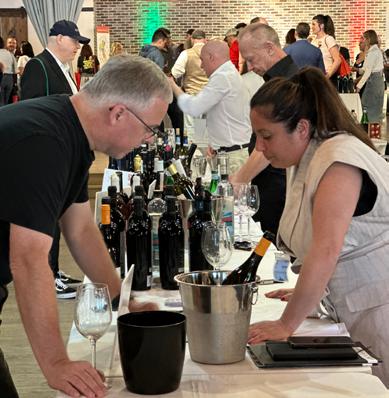
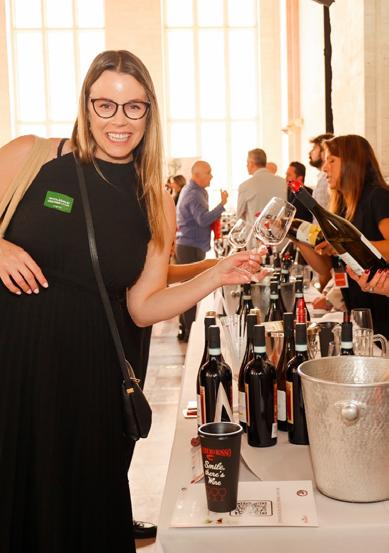
various tastings, but especially for the introduction by Jeremy Panzer (an esteemed American winewriter, with a strong knowledge of Italian wine), who explained the general characteristics of the grape variety and the territories where Montepulciano grows». The last stop of the 2023/2024 US Road Show took place in Miami City. Within the walls of a former historic bank in downtown, guests sampled the wines from the early hours of the event. Catering has its importance here, both in terms of quality and quantity with many signs of kitchens of all kinds offering wines from

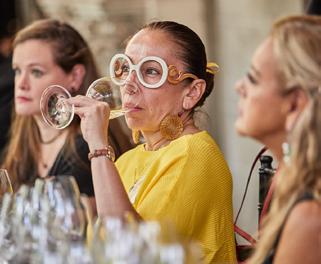
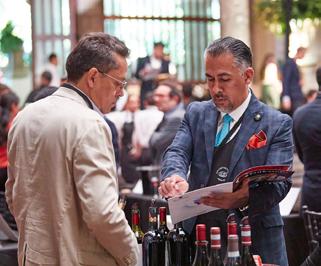
around the world, including Italy. Here too, knowledge is growing year after year, thanks also to the contribution of the Gambero events, and the masterclasses organised offer a cross-section of local wine culture: we start with Abruzzo, this time the protagonist is Cerasuolo. Questions, curiosity, lots of interest in the pink version of Montepulciano. The conclusion of the event is well attended and very heartfelt, especially by restaurateurs, maître, sommeliers: many restaurants were awarded in the Top Italian Restaurant (see paragraph below) in Miami and throughout Florida, confirming the liveliness of the sector in these parts.
Not just wine. the best Italian restaurants awarded in Mexico City and Miami
The stops in Mexico City and Miami offered an opportunity to reward the best restaurants in the city, thanks to the Top Italian Restaurants online guide, which since 2015 has rewarded establishments around the world that offer authentic Italian cuisine, made up of regional recipes and ingredients from our country. Both cities are buzzing with activity and offer top-notch places ferried by some great pioneers of Italian haute cuisine. In Mexico City, our compliments go to no less than 14 establishments reviewed, led by Cantinetta and Sartoria (awarded the Due Forchette), Forneria del Becco and Pizzeria della Madonna (which won the Due Spicchi) and Alfredo di Roma which was awarded the Due Bottiglie recognition for its wine list. On the top step of the podium is Osteria del Becco, a fantastic Italian restaurant founded and run by Rolly Pavia, an institution in the city. In Miami and Florida, the number of establishments is as high as 18: among these are Ferraro's Kitchen, awarded Tre Bottiglie and the Villa Sandi Contemporary Wine List award, the Tre Forchette at Casa Tua, but above all the city's novelty: Tre Forchette at Lido Restaurant, a restaurant within the Four Seasons and special award as chef of the year to its chef Marco Calenzo, who brings authentic Italian cuisine to Miami, made up of excellent raw materials and recipes that continually refer to the truest Italian tradition.
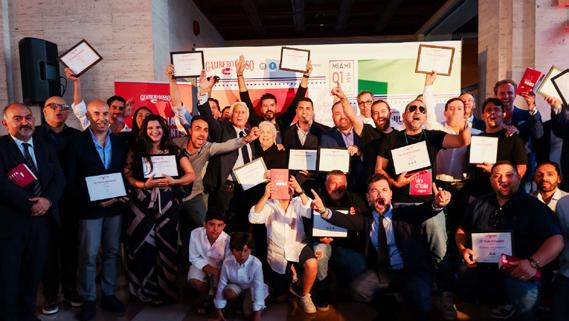

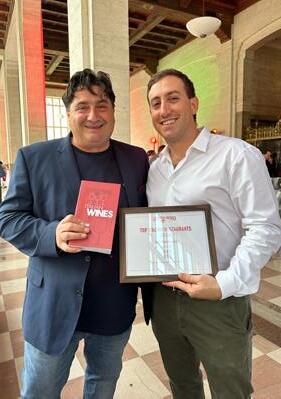
Tre Bicchieri in Vancouver: An Italian spring celebration
by Marco Sabellico

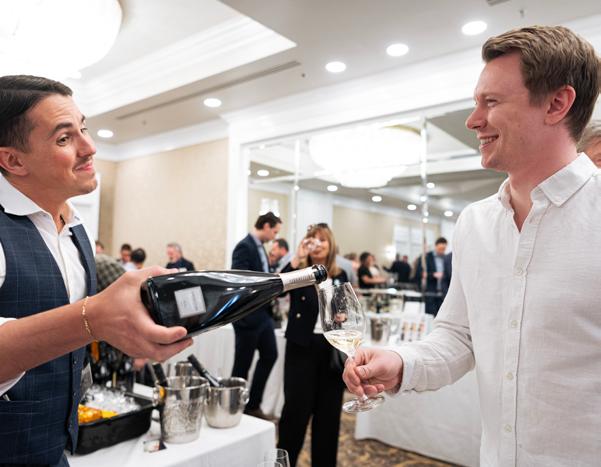
The spring wind brought to Vancouver many Italian aromas and flavours. Setting: the exclusive Sutton place Hotel in the city centre. On May 3rd, from 12pm to 1pm, the event, which saw the participation of 34 prestigious Italian wine companies with their top wines, was reserved for media operators and special guests. From 1 pm to 5 pm it was a great walkaround tasting, which saw a crowd of wine enthusiasts flock to the producers' stalls to meet the protagonists of the Italian wine scene up close. After a short break, from 6.30 pm to 9.30 am it was a true Italian celebration dedicated to fans of the Italian food and wine scene, of whom there are so many

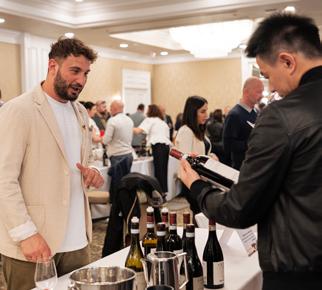
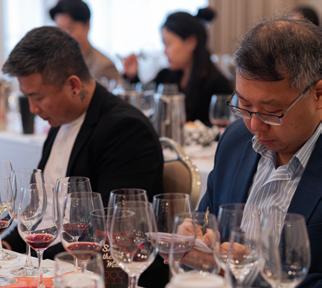
in the capital of British Columbia. Music, excellent food and great wines but also fundraising for humanitarian purposes. The Italian Chamber of Commerce Canada West and LCBO, the British Columbia monopoly, collaborated with Gambero Rosso for this success.
12 Special Wines
The highlights of the day were two. First the masterclass, which at 11.30 am featured the Special Awards of the Vini d'Italia 2024 guide. These 12 great wines were served by Marco Sabellico, curator of the Guide, to illustrate the contemporary Italian wine scene, and the philosophy that is at the core of the most famous guide of Italian wines in the world. The tasting was sold out and ended with thunderous applause for the producers of the award-winning wines.
Awarding the excellence
Another event within the event attracted the best Italian restaurateurs in the region for the Award Ceremony of the Top Italian Restaurants in the World guide, which for seven years has rewarded the best of Italian cuisine in the world. No fewer than nine restaurants were awarded, in a city that demonstrates its ever-increasing love for Made in Italy food and wine. Among the pizzerias, the famous 3 Spicchi recognition crowned Spacca Napoli by Davide Di Giovanni and Danny Pero, among the best in Canada, while talking about the restaurants, the absolute excellence is confirmed - worthy of 3 Forchette – to the historic Cioppino, Mediterranean Grill and Enoteca, which this year celebrates 25 years of business! A place with refined and authentic cuisine, with one of the most prestigious wine cellars in North America, animated by the creative passion of a great chef like Pino Posteraro. The thunderous applause that greeted his award confirms that once again Gambero Rosso has hit the mark again. Well done Pino, best wishes for your 60th birthday, too!!!

The Villa Sandi Contemporary Wine List Award this year went to La Quercia, a delightful Trentino-style restaurant run with passion by Adam Pegg, an authentic Canadian but with prestigious experiences in Italy, and his wife Karin Lazaris, born in Trentino, heir to a family with a long tradition in dining and hospitality. Their wine list perfectly accompanies Adam’s delicious hearty cuisine, based on fresh pasta and excellent Italian ingredients with great classic labels but also everyday wines. Bravo!

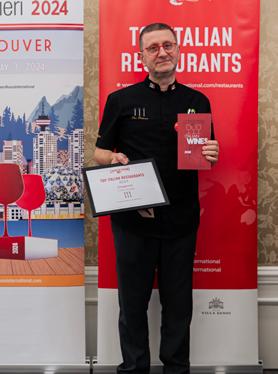
The Tre Bicchieri in Toronto and Ottawa
by Marco Sabellico
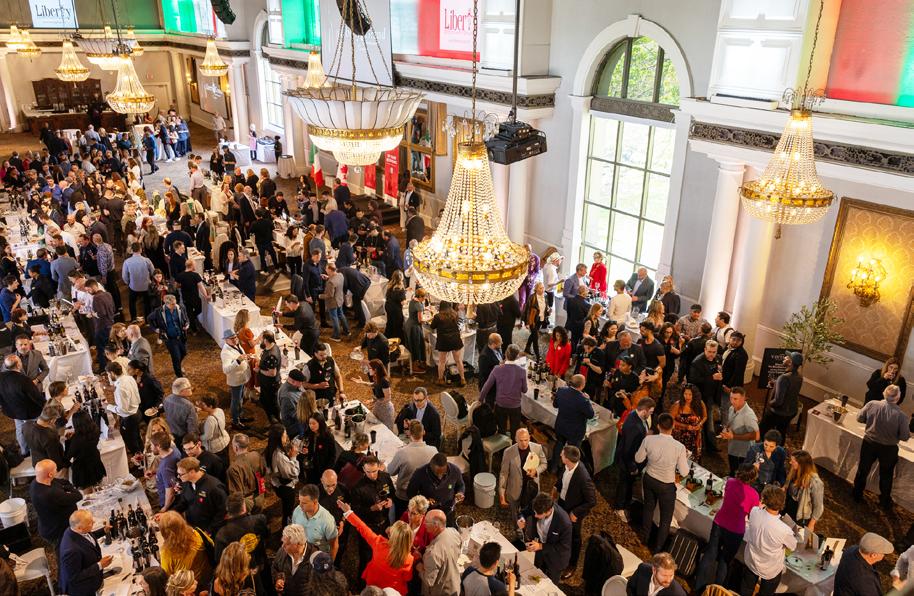
We are Leaders and… we will stay there!
The two events organised in Ontario, Toronto and Ottawa were again a great success. The Canadian wine market for Italy is a fundamental outlet, the value of which is around 650 million Canadian dollars (2022 data), which places us in first place among the supplier countries, with a share of 19.9%. Behind us are Australia and France (both at 15.8%) and the USA with 14.4. The data is provided by Ice-Ita for 2022, but 2023 should even improve these figures according to forecasts. «The
scenario sees a slight slowdown in consumption from the end of 2023 and for the first months of 2024 –says Greg McDonald, LCBO category manager for Italian and European wines – but Italy is bucking the trend. Prices are holding up, and so are sales. People like Italian wine!». And Toronto likes it as much as Ottawa.
A new format
In Toronto, on May 6th, it was the usual happy crowd. The event took place in the historic monumental complex of the Liberty Grand, in the Governor's Room, where sixty
award-winning producers offered visitors the best of their production. This edition of the Tre Bicchieri which took place in the two cities, the capital of Ontario, Toronto, and the state capital Ottawa - touched for the first time by a Gambero Rosso event - boasts an innovative formula, which achieved great success. The initiative was born in close collaboration with LCBO, the Liquor Control Board of Ontario, the monopoly government body that controls the import and distribution of wine, beer, spirits and alcoholic beverages. All the wines of the
companies interested in Gambero Rosso events were imported for the occasion with a special tender, and during the events the visitors - private and trade - having tasted the wines could order them directly through the LCBO official desk..
Men in Black
A new procedure that has eased the import and caused sales of the brands in question to soar. LCBO is among the largest purchasers of alcohol in the world. It has a direct network of 685 stores throughout the state, 8,000 employees, and supplies wholesale through 5 large centres to 18,000 restaurants and bars, 450 grocery stores, and 389 outlets. Its staff is highly specialised, and we had proof of this in the two events, where operators attended in large numbers, immediately recognizable by their black outfit with the LCBO logo. «Professional training is fundamental - reiterates McDonald –and events like this are an excellent opportunity to get to know the realities that we then offer to our customers on a daily basis». Even in the very crowded masterclass held by Marco Sabellico in Toronto, dedicated to the 12 Special Awards of the 2024 Guide, the participation of the "men in black" was massive. «It was a beautiful tasting, 12 extraordinary wines – comments Gwen Patrolli, wine enthusiast and aspiring sommelier – a beautiful picture of Italian wine that we love so much, a way to enter the philosophy of Gambero Rosso, which for us has always been inspirational».
Wine and Charity
An aspect to underline was, at the closing of the Tre Bicchieri Toronto - like it was in Vancouver a few days before - the fundraiser event for charity. The sum raised with "The best of Italy" evening which lasted for a few hours offering excellent traditional Italian dishes paired with award-winning wines, has been destined to the Humber River Hospital.
Top Italian restaurants in Toronto
The restaurant scene in Toronto speaks more and more Italian. We noticed this on our last visit, and the result was a shower of awards, as many as 15. Our guide, now in its seventh year of life, collects over 900 addresses including restaurants, wine bars and pizzerias in over 50 cities in the world. And Toronto has proven it has a lot to offer. Among the pizzerias, 1 Spicchio was awarded to: Venga Cucina, Pizza e Pazzi and SIP Wine Bar & Pizza. 3 Bottiglie instead goes to Bar Centrale, which is at street level of Terroni Price, on Yonge Street, and offers an extraordinary selection of Italian wines by the glass and by the bottle as well as delicious, proudly Italian food as is the tradition of the Mammoliti family. There are also seven 1 Forchetta addresses, many of which are new to the guide. These are Stelvio Toronto, Giulietta, Enoteca Sociale, Ardo, Buca Yorkville and L’Antipasto. 2 Forchette go to Sotto Sotto Toronto (also replicated with class in Yorkville), which offers refined versions of classic Roman cuisine and beyond, and to Osteria Giulia by chef Rob Rossi which offers sophisticated reinterpretations of Ligurian cuisine. And finally, two places deserve our top rating, 3 Forchette. DaNico, where in the elegant setting of an historic building (that once housed a bank) chef Daniele Corona offers a tasteful, authentic and evocative fine dining experience, accompanied by a great cellar with the best Italian labels which also earned him the Villa Sandi Best Contemporary Wine list Award. We end with a great classic: Don Alfonso 1890 hits the mark also in Toronto with a venue of evocative beauty: a breathtaking panoramic view of the lake and Mediterranean cuisine masterfully interpreted by chef Davide Ciavattella will give you unforgettable emotions.
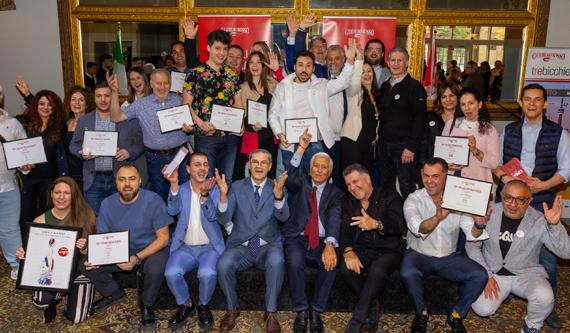
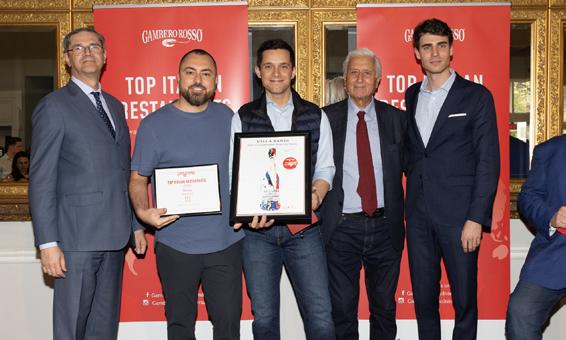




Worldtour CALENDAR 2024/2025
Worldtour
CALENDAR 2024/2025
CALENDAR 2024/2025
2024
2024
2024
JUNE
JUNE
JUNE
03 HO CHI MINH - Vietnam
STOCKHOLM - Sweden
07 STOCKHOLM - Sweden
10 COPENHAGEN - Denmark
- Sweden 10 COPENHAGEN - Denmark 12 OSLO - Norway Vini d'Italia 2024 trebicchieri 2024
OCTOBER
OCTOBER
OCTOBER
29 TOKYO - Japan trebicchieri 2025
29 TOKYO - Japan trebicchieri 2025
29 TOKYO - Japan trebicchieri 2025
trebicchieri 2024
trebicchieri 2024
COPENHAGEN - Denmark 12 OSLO - Norway Vini d'Italia 2024
03 HO CHI MINH - Vietnam trebicchieri 2024
trebicchieri 2024
12 OSLO - Norway Vini d'Italia 2024
14 PRAGUE - Czech Republic Vini d'Italia 2024
14 PRAGUE - Czech Republic Vini d'Italia 2024
YOUR PASSION IS OUR INSPIRATION www.gamberorossointernational.com Top Italian Wines Roadshow
GamberoRossoInternational
JANUARY
JANUARY
NOVEMBER
NOVEMBER
NOVEMBER
01 SEOUL - Korea trebicchieri 2025
SHANGHAI - China
01 SEOUL - Korea trebicchieri 2025 04 SHANGHAI - China trebicchieri 2025
01 SEOUL - Korea trebicchieri 2025 04 SHANGHAI - China trebicchieri 2025
06 SHENZHEN - China
06 SHENZHEN - China Top Italian Wines Roadshow
06 SHENZHEN - China Top Italian Wines Roadshow
DUBAI - U.A.E.
20 DUBAI - U.A.E. Notte Italiana

GamberoRossoInternational
JANUARY
ZURICH - Switzerland
ZURICH - Switzerland
ZURICH - Switzerland
MUNICH - Germany
MUNICH - Germany
BRUXELLES - Belgium
MUNICH - Germany BRUXELLES - Belgium



Italiana 26 SAO PAULO - Brazil
20 DUBAI - U.A.E. Notte Italiana 26 SAO PAULO - Brazil Top Italian Wines Roadshow
Italian Wines Roadshow
2025
2025
2025
APRIL
APRIL
APRIL
Vini d'Italia 2025
d'Italia 2025
Vini d'Italia 2025
MEXICO CITY - Mexico
MEXICO CITY - Mexico
MEXICO CITY - Mexico
BRUXELLES - Belgium Vini d'Italia 2025
d'Italia 2025
Vini d'Italia 2025
Vini d'Italia 2025
26 SAO PAULO - Brazil Top Italian Wines Roadshow Vini d'Italia 2025
Vini d'Italia 2025
MIAMI - USA trebicchieri 2025 trebicchieri 2025
MIAMI - USA
MIAMI - USA
TORONTO - Canada
trebicchieri 2025 trebicchieri 2025
trebicchieri 2025
trebicchieri 2025
TORONTO - Canada trebicchieri 2025
TORONTO - Canada trebicchieri 2025
2025
30 NAIROBI - Kenya Top Italian Wines Roadshow
30 NAIROBI - Kenya
30 NAIROBI - Kenya Top Italian Wines Roadshow
FEBRUARY
FEBRUARY
FEBRUARY
10-12 PARIS - France
10-12 PARIS - France
10-12 PARIS - France
LAS VEGAS - USA
24 LAS VEGAS - USA
24 LAS VEGAS - USA
LOS ANGELES - USA
25 LOS ANGELES - USA
27 SAN FRANCISCO - USA
Italian Wines Roadshow
trebicchieri
2025 - Vinexpo Special
Italian Wines Roadshow
trebicchieri 2025 - Vinexpo Special Top Italian Wines Roadshow
trebicchieri 2025
27 SAN FRANCISCO - USA trebicchieri 2025
MARCH
MARCH
MARCH
2025
MAY
MAY
MAY
04 NEW YORK - USA
06 CHICAGO - USA
DUSSELDORF- Germany
15 DUSSELDORF- Germany
31 LONDON - U.K.
trebicchieri 2025
trebicchieri 2025
OTTAWA - Canada trebicchieri 2025
TASHKENT - Uzbekistan
02 BANGKOK - Thailand OTTAWA - Canada trebicchieri 2025 COPENHAGEN - Denmark Vini d'Italia 2025 STOCKHOLM - Sweden trebicchieri 2025
6 ALMATY - Kazakhstan Top Italian Wines Roadshow
6 ALMATY - Kazakhstan Top Italian Wines Roadshow
MUMBAI - India
Italian Wines Roadshow
8 TASHKENT - Uzbekistan Top Italian Wines Roadshow
23 MUMBAI - India Top Italian Wines Roadshow
Italian Wines Roadshow
27 SAN FRANCISCO - USA trebicchieri 2025 Top Italian Wines Roadshow
2025 - Prowein Special
trebicchieri 2025 - Prowein Special
trebicchieri 2025
JUNE
JUNE
JUNE
02 BANGKOK - Thailand
BANGKOK - Thailand OTTAWA - Canada trebicchieri 2025
27-29 SINGAPORE trebicchieri 2025 - Vinexpo Special
SINGAPORE trebicchieri 2025 - Vinexpo Special
Italian Wines Roadshow
Top Italian Wines Roadshow
STOCKHOLM - Sweden trebicchieri 2025
COPENHAGEN - Denmark Vini d'Italia 2025
COPENHAGEN - Denmark Vini d'Italia 2025 STOCKHOLM - Sweden trebicchieri 2025 31 LONDON - U.K. trebicchieri 2025
OSLO - Norway
OSLO - Norway
trebicchieri 2025
Worldtour
trebicchieri 2025 8
Top Italian
Roadshow 23
Top Italian
Roadshow 27-29
trebicchieri 2025
Special
TASHKENT - Uzbekistan
Wines
MUMBAI - India
Wines
SINGAPORE
- Vinexpo
02
YOUR PASSION IS OUR INSPIRATION www.gamberorossointernational.com Top Italian Wines Roadshow 14 PRAGUE - Czech Republic Vini d'Italia 2024
03 HO CHI
trebicchieri 2024 07 STOCKHOLM
MINH - Vietnam
trebicchieri
04
2025
24
trebicchieri
Top
trebicchieri
25
2025
04 NEW YORK
06 CHICAGO
trebicchieri 2025 trebicchieri 2025 15 DUSSELDORF-
trebicchieri 2025
Prowein Special
Top
20
Notte
Top
- USA
- USA
Germany
-
Italian Wines Roadshow
trebicchieri
Top
trebicchieri
6
Top
OSLO
trebicchieri 2025 8
Top
23
Top
ALMATY - Kazakhstan
Italian Wines Roadshow
- Norway
27-29
31 LONDON - U.K. trebicchieri 2025
GamberoRossoInternational
Top
YOUR PASSION IS OUR INSPIRATION www.gamberorossointernational.com
Italian Wines Roadshow
07
10
Top Italian
25
trebicchieri
2025 - Vinexpo Special
Wines Roadshow
LOS ANGELES - USA
2025
04 NEW YORK
06 CHICAGO
trebicchieri
trebicchieri 2025 15
trebicchieri
- USA
- USA
2025
Vini
Vini
Top


Debut in the Capital
Two days later, on May the 8th, Gambero Rosso organised for the first time an event in Ottawa, again in partnership with LCBO. The venue was the Canada Museum of Nature. An “exploratory” Tre Bicchieri, with around twenty companies that wanted to break the ice with the refined public of the Canadian capital. «Arriving among the first in person on this market and under the flag of Gambero Rosso was rewarding – Simone Nalesso, export manager of Villa Sandi and Borgo Conventi tells us – and this tour in Canada served to understand market trends and develop contacts. Whites are growing rapidly, almost 4%

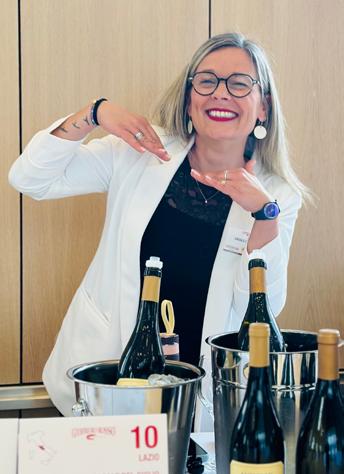
more than last year, and this rewards us with Prosecco Doc and Docg and with whites from Collio...» «But our Amarone is not slowing down, on the contrary... - echoes Antonio Cesari of Brigaldara – Canada confirms itself as a fundamental market for us». And if younger consumers are looking for slim, fresh, easy-drinking wines... possibly from typical grapes, that’s fine for Italy, which has an extraordinarily differentiated range of offerings. Finally, we are sure that the success of the event will act as a driving force for the next editions of the Tre Bicchieri and the Road Show. Ottawa loves wine, and Italian wine in a special way.
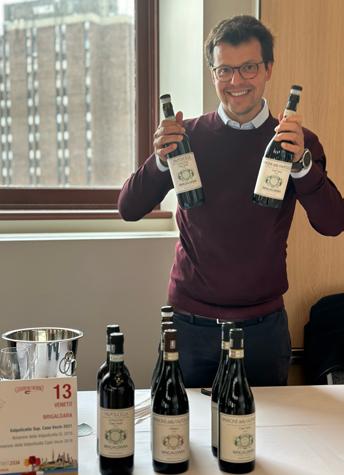
On top, some monents of the Masterclass and Tasting in Toronto.
Below, Marco Sabellico and wine producers at the tasting in Ottawa
43
World Tour. Almaty
The Roadshow stops in Almaty: Italian wine enchants Kazakhstan
by Marco Sabellico
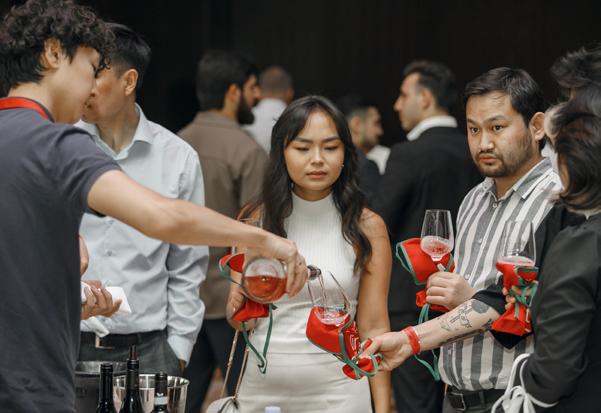
Kazakhstan is rapidly becoming an important country for the export of Italian wine. This is confirmed by the great success of the Top Italian Wines Roadshow which for the first time touched the former capital (Alma Ata in the Soviet era) of this young republic.
On May 15th the Gambero Rosso team organized an event that enthusiasts and operators defined in no uncertain terms as "extraordinary". In the elegant setting of the halls of the Ritz Carlton Hotel, in the futuristic Esentai Tower, the sixty producers participating in the most important international event dedicated to Italian wine uncorked their best bottles from 12pm to 6pm for a large audience of wine enthusiasts, professionals, restaurateurs and sommeliers. The three Masterclasses, held by Marco Sabellico, curator of Vini d'Italia, assisted by Zulfiya Ibragimova, young and brilliant president of the
Kazakhstan Sommelier Association, were an absolute success. And from the very attentive participation of over 150 operators, sommeliers, restaurateurs and influencers we were able to evaluate the impact of the great Italian wines on this young but burgeoning market. “In the last 10 years, wine has entered our daily lives – Zulfiya tells us – the openings of new restaurants here in the city and in Astana are continuous, and it goes without saying that many are those dedicated to Italian gastronomy. But also with our traditional cuisine, with our meats and traditional dishes, Italian wine goes very well. We learned one thing about Italy: it is the country of food and wine biodiversity, its wines are the result of native grapes, different from international standards. And this exerts an extraordinary fascination." Prosecco Docg and Doc, Chianti
Classico, Brunello di Montalcino, Amarone and Primitivo are names that have become familiar on this market, which is now growing at a rate of 20% on an annual basis. “Kazakhstan imports wine worth around 50 million euros – Martino Castellani, head of the ITA office in Almaty, tells us, and wines from France, Spain and Italy represent around 50% of imports, and Italy accounts for almost 30% of volumes, for a turnover of approximately 15 million euros in 2023. In 2022, Italian still wines grew by over 50%, sparkling wines doubled in imported quantities. It is an extraordinarily dynamic market, which is taking off, in which we need to invest". The new generations have cosmopolitan lifestyles and tend to consume more and more wine compared to traditional consumers who remain linked to local production and especially to spirits, of which there is abundant production in Kazakhstan. “International catering is growing in the two main cities – Almaty and


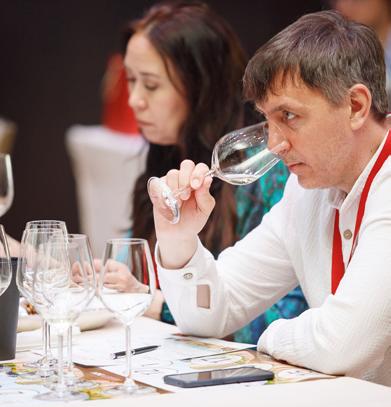
Astana – at a very fast pace, and Italian restaurants are leading the way – tells us Anastassya Naumetskaya, chef sommelier at La Prima, a sort of sophisticated Made in Italy hub that ranges from design forniture to the Adagio delicatessen & wine shop and to the Prosecco Bar restaurant - Italy is a wonderful country that everyone wants to visit, and which we are getting to know through its great wines and extraordinary gastronomic offer. And we're just getting started...".
We leave Almaty with the amazed awareness that Kazakhstan could become, with its strategic location on the Silk Road, between Russia, the Caspian Sea, China, Uzbekistan, Kyrgyzstan and Turkmenistan, as well as a tourist destination for its natural beauty, a business destination for the economy among the brightest in this
The best restaurants in Almaty
The highlight of the day was the award ceremony for the best Italian restaurants according to the Top Italian Restaurants in the World Guide. Among the pizzerias, two segments went to Honey-Honey and Percorso, while for the wine bars Nova 1 and Fellini won a bottle each, while two awarded the nice assortment of La Barca labels. Confirming the success of the Italian gastronomic scene, there are four new entries in the guide: if Amici and Capriccio deserved a fork, two went to the excellent Parmigiano (which opened its doors among the first in 2011) and to elegant Villa dei Fiori, which tastefully revisits the classics of Mediterranean cuisine, and thanks to a wide and deep wine list and a spectacular cellar - where there is a lot of Italy - it also wins the prestigious Top Contemporary Wine List Award of Villa Sandi.
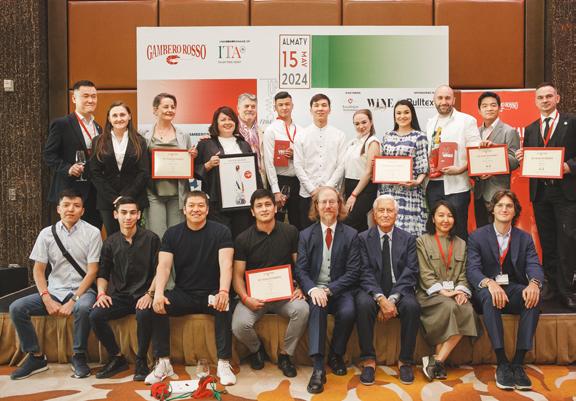
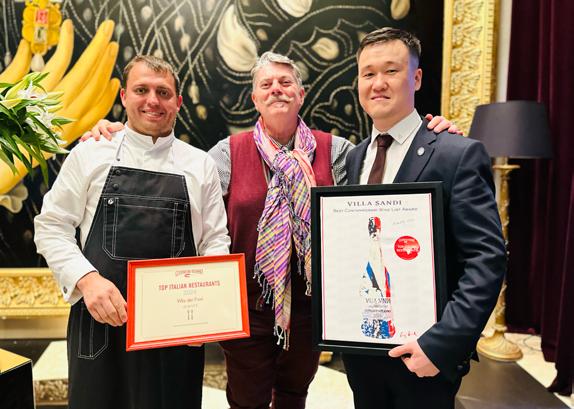
quadrant of the world, also a gourmet destination. A hyperbole? Definitely no.
Here a new generation of young chefs is absorbing influences and products
from many countries, Italy first and foremost. But they have made them their own and rework them with technique, taste and sensitivity. Sälem Almaty! Next stop? Singapore…
45
food


Confessions of a Matriciano “From Agnelli to Alberto Sordi That’s how I served Rome”
Stories of actors, politicians and cardinals over the course of a century at the tables of the capital’s most iconic restaurant
by Stefano Polacchi
In Rome, food is sacred. So is wine. And the table celebrates its ritual. So it is clear that there is a lot of food and wine-as well as sex and eros, of course-in the docufilm that Mr. Dagospia (worldwide Roberto D’Agostino) together with Marco Giusti (critic and director) have made directed by Daniele Ciprì with the collaboration of Paolo Sorrentino (creative producer): Holy and Damned Rome.
Dribbling with Chinaglia and Celentano
Thus we start precisely from the film to describe that holy and damned Rome and the characters that revolve around (and within) it. In particular, let’s rewind the tape to Enrico Vanzina’s account of the Gianni Agnelli’s appearance to the owner of Il Matriciano, a historic restaurant in Via dei Gracchi (Prati district) that together with Il Bolognese is and has been one of the names around which the parallel and converging worlds of cinema, art and politics have orbited and still orbit. Alberto Colasanti - third generation at the helm of Il Matriciano along with his sister Rosa - had liquidated, with the promise to find him a table for two, Luca Cordero

di Montezemolo, who was a regular at the restaurant. Alberto remembers, «I had warned him, “Tonight there’s a big crowd, I’ll find you a table, but you have to wait,” I told him. But he showed up at the most obvious time for dinner and it was really crowded. Then I turn around, look toward the entrance and see Montezemolo with another gentleman. I didn’t want to believe it, it was him, the “Avvocato”, Gianni Agnelli (the founder of FIAT), in
my restaurant. I lost it: I ran among the tables, chased away about ten customers waiting to sit down, split two tables, and rushed to Montezemolo planting the table in the middle of the room. I looked up, smiled, lowered my head a little, “Avvocato, this is Il Matriciano”.
Alberto Colasanti. He greeted Gianni Agnelli for the first time in his restaurant: “Avvocato, this is Il Matriciano!”


CAMPAIGN FINANCED ACCORDING TO EU REG. NO. 2021/2115
International taste, Calabrian soul.
Those were the golden years, the fantastic Eighties.»
But why fantastic? It was the time of Reagan in the U.S., Italy ruled by a 5-pronged political leadership, the “camper pact” (aka CAF, Craxi-Andreotti-Forlani) lurking in Italy... «Fantastic because people were out and about and they were spending money. And they were coming to eat! We used to work double shifts. Today nobody comes in after 10:30 p.m. anymore.» The evening when Agnelli discovered Il Matriciano is still written in golden letters in Alberto’s heart. «At one point I approached their table and the Avvocato smiled at me: “They tell me you are a great friend of [soccer superstar, Ed] Chinaglia.” Of course, I replied. “But they tell me you are also a great AS Roma fan.” He touched a soft spot! I replied, “I am a great Roma supporter and I am Chinaglia’s friend. Such good friends that one morning they gave life to a tasty little scene, stuff that today would not be possible save for in a TV commercial. «But yes, it was some 40 years ago, I was still a young man, I was 44 or so. We met up outside with Giorgio Chinaglia, Massimo Ranieri and Adriano Celentano: we started dribbling in the middle of the street. Then it’s off to lunch. Celentano stopped me and said, “Alberto, I need a shave. Is there a barber nearby, by any chance?” So I sent him to mine back here. After a few days I see the barber at the restaurant asking me, “Alberto, who’s paying for Celentano’s shave?” Note to self: he never pays!»
That blondie Sergio Leone
Il Matriciano is a place where spacetime dilates over the course of a century through the memories and stories of Alberto Colasanti. He is the centre of this solar system around which the protagonists of Roman high society revolve. «Directors and actors felt at home here» Alberto recalls, «I remember Anthony Minhhella, a very pleasant person, the director of The English Patient. Then, Ridley Scott and Russel Crowe came, once there was
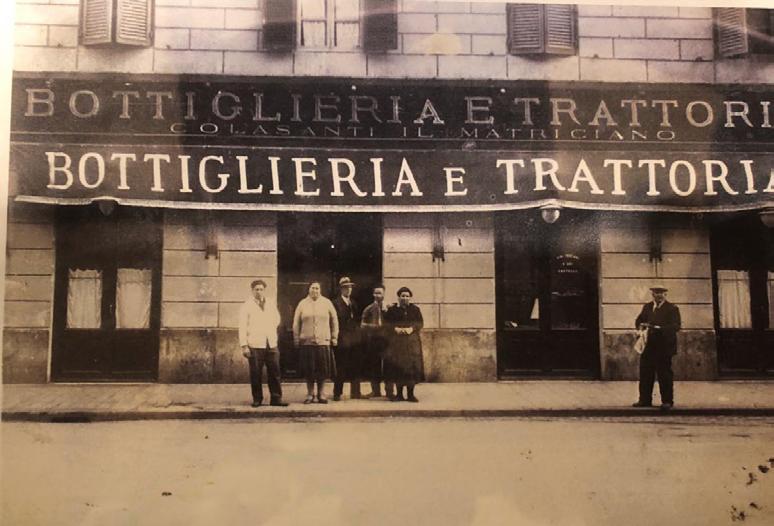
even Depardieu when he was filming Christopher Columbus. And then the “oldies”, from Robert Mitchum to Schwarzenegger, from Jaqueline Bisset to Hugh Grant with Sandra Bullock. Alberto Sordi often came with an old director, Mario Bonnard, who was always in the company of a blond boy, his assistant. One day Bonnard showed up with the blondie and asked me: «Have you seen the new film?» Which film, I ask. And they: «A Fistful of Dollars, it just came out». I didn’t understand, because the film was “directed” by Bob Robertson, which was Sergio Leone’s pseudonym: he was Bonnard’s assistant. It was 1964. At that time it was pleasant to go to the cinema, I was a big fan. But I can no longer go anymore, on Wednesdays [closing day, Ed] I can’t find anything that interests me. Nowadays actors and actresses also dine here, but I can’t tell them apart! It’s my daughters, Cristiana and Fiore, who tell me who they are. I used to recognise everyone. The paparazzi would arrive on Vespas and lurk around taking pictures of celebrities. Enrico Papi, who used to host Sarabanda, was a regular here with a cameraman and would take videos of socialites that he would then broadcast.
Historical photo of Il Matriciano in the early 1920s: on the right is Alberto’s grandfather, the first on the left is his grandmother
I remember that one evening Alba Parietti showed up dressed up in a suit, with an outrageous hat: she had heard that Christopher Lambert was coming to dinner and she wanted to meet him. Evidently, however, he also knew of the “ambush” and canceled the reservation, so she was left high and dry». In short, it was all a web of stories and entanglements....
Politicians, writers and thespians
The stage at 55 Via dei Gracchi was a veritable open-air theatre. Here the golden names of politics ate and performed. «Andreotti was a regular guest. He would arrive and always go to kiss my mother’s hand. All she had was a third grade degree, she was fascinated by this gallant homage and every time she’d say: “See how kind these Christian Democrats are,” she who had voted that conservative party all her life,» Alberto smiles. «Fassino
49
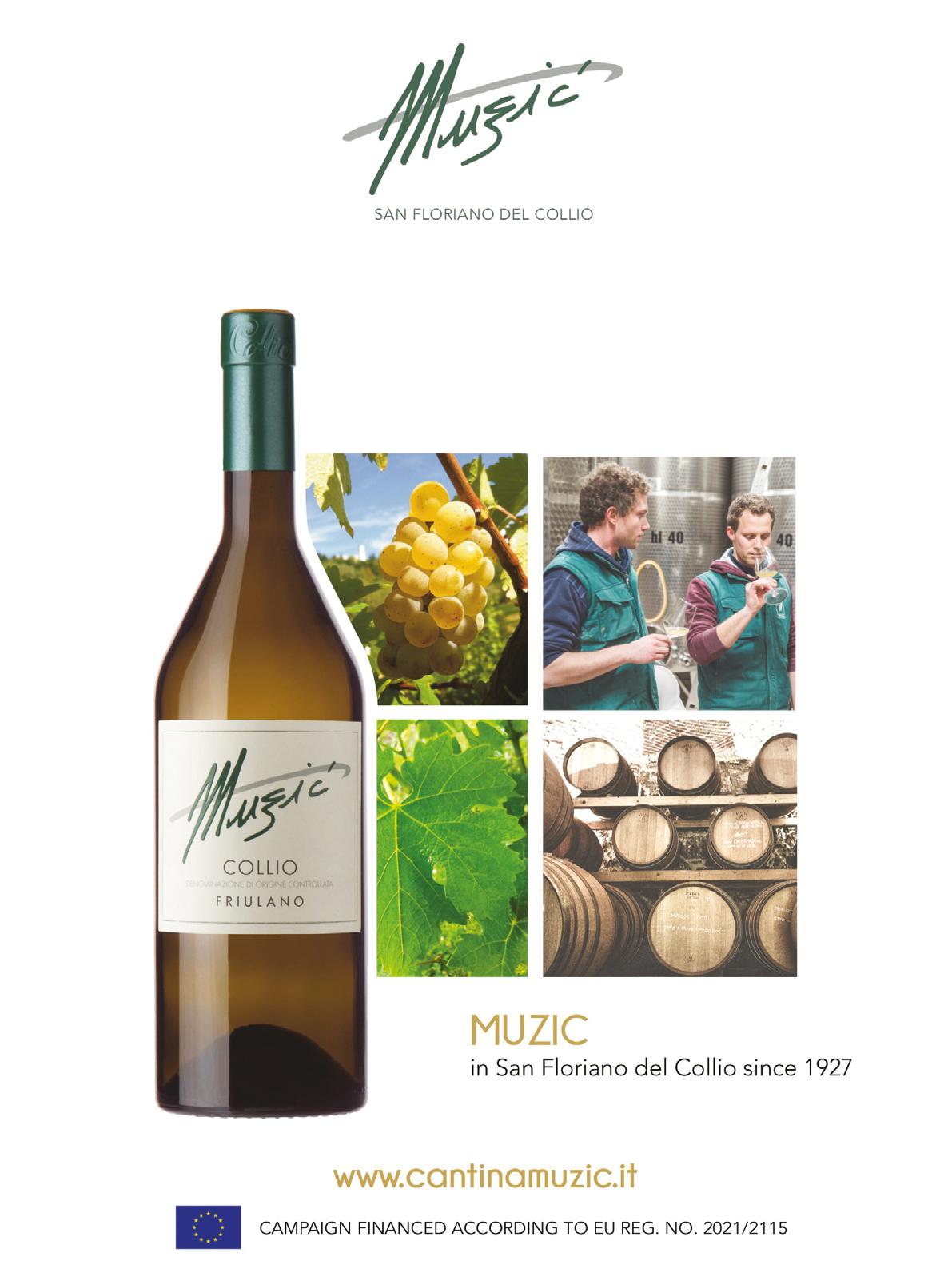
and Damiano, Fini and Fisichella, La Russa of course, used to come here for dinner. But the best period was when Il Matriciano became a meeting place for various writers. Elsa Morante and Alberto Moravia were always in the little room at the back with Pasolini who’d be with two young boys who never said a word, ate and then left with him. Moravia, however, was funny. He would order a sirloin of veal, but I would take two steps and wait because by then I knew: immediately he would call me over and change his order, “Alberto, no excuse me, bring me a quarter of a chicken”. And vice versa, other times he would order the chicken and block me to change the order to a sirloin, always like this». Then, the memory of Giorgio Manganelli: «He always came alone, he would arrive at a quarter to eight and leave before all the other guests arrived, at half past eight he was already out. One evening Vincenzo Cerami organised a dinner here with a few writer and director friends, but he had to arrive at half past seven because he knew Manganelli would be here early and he didn’t want to leave him alone! Pietro Germi also often came alone. Even, as soon as he returned from America, Bernardo Bertolucci brought back the Oscar statuette he had won for The Last Emperor. He was an atheist and when he died I was impressed by his coffin displayed in the Campidoglio: it was made of wooden planks from construction sites». If today paparazzi have lost their appeal, until a few years ago they were the order of the day. «Rosa Fumetto often came to dinner here with Antonella Steni and her husband Elio Pandolfi, they played in Il Gufo e la Gattina. One evening Rosa Fumetto and Steni’s husband show up alone. Suddenly the wife arrived, approached and slapped her husband twice. I was stunned and worried about a situation I thought might get out of hand. Instead, Steni approached me and confessed: “Don’t worry, Albe’, it’s all an act”. In short, they had orchestrated everything to

make people talk about them and the show! It really was a circus here, every day, every night».
Alberto Sordi and the cardinals
Alberto was born in Rome 84 years ago in Borgo Pio. «Just think that once, talking to Paolo Bonolis [TV presenter, Ed], he told me that Sordi was born in the flat opposite mine, on the same staircase!» Il Matriciano owner smiles. In the early 1920s, it was his grandfather Luigi who moved to Rome after the Great War. «He was a delivery boy, delivering olive oil,» Colasanti recalls. «He took the whole family to Rome: seven of them slept in a big room divided by a rope, three boys on one side and the two girls with dad and mum on the other side. My father used to come to wash up at the restaurant when my grandfather took over what had been an osteria since 1912: they sold wine and heated the food that the farmers brought for a small fee called “scomodo”».
A custom that was revived in the golden years of cinema with a great protagonist, none other than Marcello Mastroianni. «He showwd up here with a kind of aluminium pot, sits down and says to me: “Alberto, can
From the film “Ladro lui, ladra lei” by Luigi Zampa (1958). Alberto Sordi plays Cencio, a petty thief here disguised as a Monsignor
you warm up these meatballs with broccoletti that Sofia Loren brought me on the set? I couldn’t eat them, now I can enjoy them”. Those were the days.»
Cinema aside, the proximity to the Vatican is also not irrelevant in Il Matriciano’s story. “Here, in the golden days, before he was kicked out, Cardinal Paul Marcinkus, head of the IOR, used to come at least a couple of times a week to dine. He would arrive in a beat up car, always asking me to park it, sit down and always order the same things: vegetable soup and lamb accompanied by half a litre of the house wine». Unsuspected frugality on the part of one of the Church’s notorious potentates of yesteryear. «Then, when Marcinkus resigned, Monsignor Donato De Bonis [who was believed to be the real dominus at IOR, a great friend of Cossiga - who called him Dontinoand of Andreotti, to whom he left his money in his will for “works of charity and assistance” Ed] often came in the company of
51
Alberto Sordi. Because Albertone’s secret dream was to become a layman cardinal: he was obsessed with this desire, he was passionate about the Church».
Verdone the healer
The friendliest relations, however, were forged with the men of the cinema, a world of which he himself is a fan. Verdone - known for his hypochondria, which he has always denied, however, stating that it is only a passion for medicine inherited from his family - has treated Alberto for hernias. «One evening I called him, I was bent over with back pain, but he told me he was doing an interview and would call me back later. My phone rang after not even five minutes, it was him: he’s really passionate about diseases and cures, it’s his real mission,» Alberto smiles. «And in fact he led me to recovery: he told me to do diaphragmatic breathing and postural gymnas-
tics. I got over everything. He is funny on screen, but in reality he is much less so, he is a serious guy». The story then moves on to the relationship with someone who really is funny in life. «Roberto Benigni is hilarious, he practically grew up here. Just think that at the beginning of his career and he was looking for a house, I helped him find one on the Aventine. In fact, there were two for sale, attached, and I advised him to buy both, which was a bargain. But he said he didn’t have the money. «You will soon,» I reassured him. But he only bought one. And he regretted it, because after a few years he wanted to buy it, but they asked three times as much and he gave up». The beginning of Benigni’s career also marks another amusing episode centered on Il Matriciano. «He was a very nice and bright young man,» Colasanti remembers, «Once he was having lunch here and two tables over was Celentano. Roberto asked me to
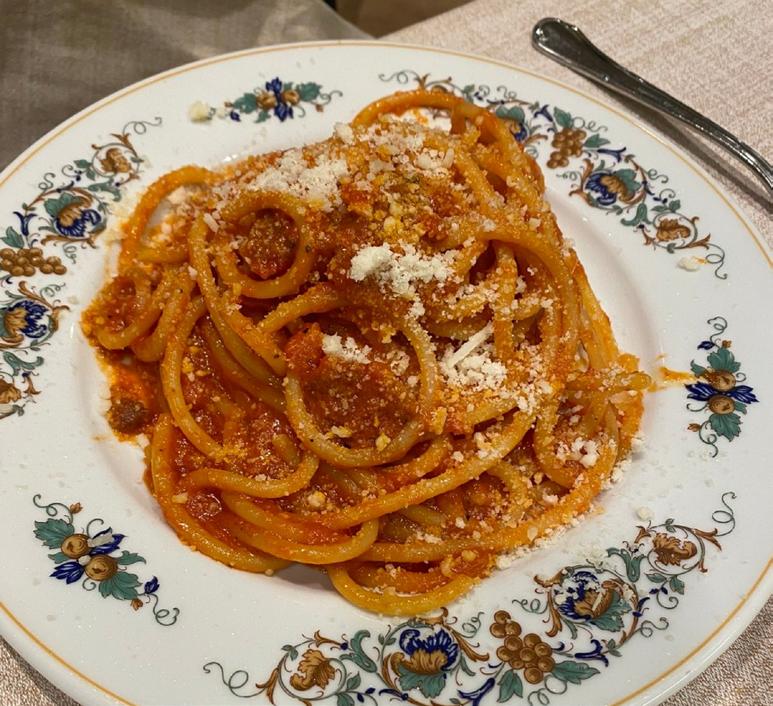
introduce him, who didn’t know him even though he was a lifelong fan. So I introduced them. After a while, Benigni was in Milan on business and received an invitation from Celentano to have dinner with him. “I didn’t know what to bring him as a gift,” he told me after a few weeks, when he came back to eat, “so I took two beautiful books for Adriano. I arrived at his house, but I was stunned: those were the only two books in the house,” he confessed. He couldn’t believe it!»
Agnelli and Marina Ripa di Meana
Many ‘myths’ have passed by the tables of 55 Via dei Gracchi. «Aldo Fabrizi always asked for potatoes in small chunks,» smiles Alberto at the memory. But have you never had the desire to change cuisine? To do something else? «No, the recipes are those of my father. I don’t really think about changing. The ingredients, however, are always first choice: I get the meat from Feroci, the tomatoes are Mutti, the pecorino comes from Fulvi’s dairy in Monterosi, which by the way was the son-in-law of Viperetta [nee Massimo Ferrero, who from being a driver became one of the big producers and was also the owner of Sampdoria football team. Ed] who, by the way, took the team not only without shelling out a penny but also got the former owner to give him a few million euros to get by. But, apart from that, the pecorino is excellent! The vegetables are also top quality and a wholesaler, also from Monterosi, brings them to me. The pasta has been De Cecco for a century, never changed. The guanciale, of course, comes from Amatrice». And the other ingredients? «Which? That’s enough, my cooking is made up of these few things,» he smiles. «Simple, good quality. Ah, yes, the olive oil: that comes from Canino».
A plate of bucatini all’amatriciana at Il Matriciano: iconic recipe of the Roman restaurant
The name of Il Matriciano travels around the city also because of this, it is a guarantee of standards and confidentiality despite being in the middle of the capital’s world that counts. «A little while ago I got a call from De Russie to book a table for two and a table for four for security on behalf of Mr Shepard. But who is this? I wonder, even with bodyguards! Mr. Shepard arrives and the dinner begins. My daughter comes up to me and says, “Do you see that guy? That’s Jeff Bezos, Mr. Amazon, not Shepard!” So I go over to the table and I say, “Mr Bezos, that’s no way to do it! At least we have to take a photo. Here’s the photo, it’s the only one of me here,» Alberto says, taking a large print from behind the till, the place where he and his daughters reign. There are no photos in the restaurant renovated by Studio Gemmetta in collaboration with celebrity architect Massimiliano Fuksas, another gourmet. «I like beauty,» explains Alberto. «Several painters also come and go here. I remember Gino De Dominicis: he used to eat at a table in the middle of the room and always wore a coat, he was always very cold». That De Dominiciseclectic and controversial protagonist of post-war Italian avant-garde art - brings us back to D’Agostino’s film, to that holy and damned Rome in which the leader of Dagospia himself tells of an Agnelli fascinated by the young Marina Ripa di Meana who manages to have an appointment at her home: when he goes upstairs and enters “full of testosterone”, however, he finds her in bed with two painters, Gino De Domicis and Eliseo Mattiacci. “It seems to me that we are a bit too many,” exclaimed the lawyer, who turned around and slammed the door. “That was his bad impact with Roma the pleasurable,” explains D’Agostino as he talks to Enrico Vanzina.
Villaggio and Berlusconi
In the story of this Rome where the sacred and profane happily coexist, one cannot miss an appearance by Silvio Berlusconi, who has been a protagonist of the capital’s political and social
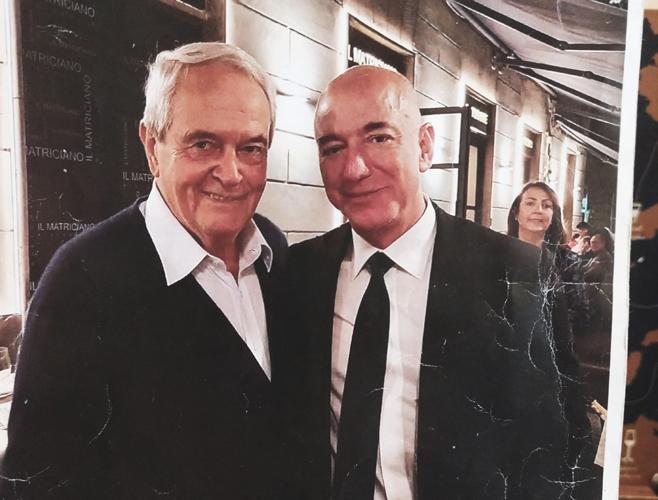
chronicles for twenty years. “Once, we were at a party at Sandra Carraro’s house,’ Roberto D’Agostino recounts, ‘Berlusconi took me aside: ‘I have to talk to you. What do you have to tell me?’ I asked. Listen, tell me the truth: are you also tattooed on your dick?’ he asked me. Nothing... he didn’t give a damn about what you wrote to him, what you could say to him, how you made fun of him... He didn’t give a damn, on the contrary, he won everyone over. He was obsessed with this idea of being loved by everyone...’. But one (maybe just one?) the Chevalier could not conquer. “Do you know how many times he came here to dine with Paolo Villaggio? How many times he tried to bring him into his TV sets... Paolo was really a character, very strange, he had his own world. Just think, three people used to come here, him, Federico Pantanella, the producer, and another friend of theirs: they’d order three veal shanks and that was it, then they’d get up and go to the Bolognese in Piazza del Popolo and order three more veal shanks, then maybe to the Moro behind the Trevi Fountain and order three more. They would play who could make the best ossobuco.... When he came here, Villaggio would eat and not pay, never. He would tell me to stop by the Excelsior concierge at the end of the month. Each time, I
The photo Alberto Colasanti took with Jeff Bezos after “discovering” his identity
would go to Mr. Chiesa, who would give me a personal check, in his name, to settle Villaggio’s bill. But he paid, eh. It was just a habit of his. Then one night he came in, a bit shabby. I could tell he wasn’t very well. I approached and he immediately anticipated me: “Albe’, tonight I don’t have the money to pay for dinner”. “Who cares,” I answered him, “with all the money you’ve given me! “There, good answer,” he says, “so give me twenty euros for the taxi. After a few days he left. Great character - he looks at his watch, Il Matriciano, it’s 12.20“Hey, are we done here?” he asks. You can tell he has an urgency. He gets up, goes to the cashier’s desk, hands over to his daughter and goes to his table, in the dining room, where Pasolini, Morante and Moravia used to eat. We will never know whether he had a Feroci ossobuco or a plate of De Cecco with guanciale di Amatrice. But it does not matter. Space-time, here, has stood still for a century and for a century everything has been repeating itself, always the same.
53
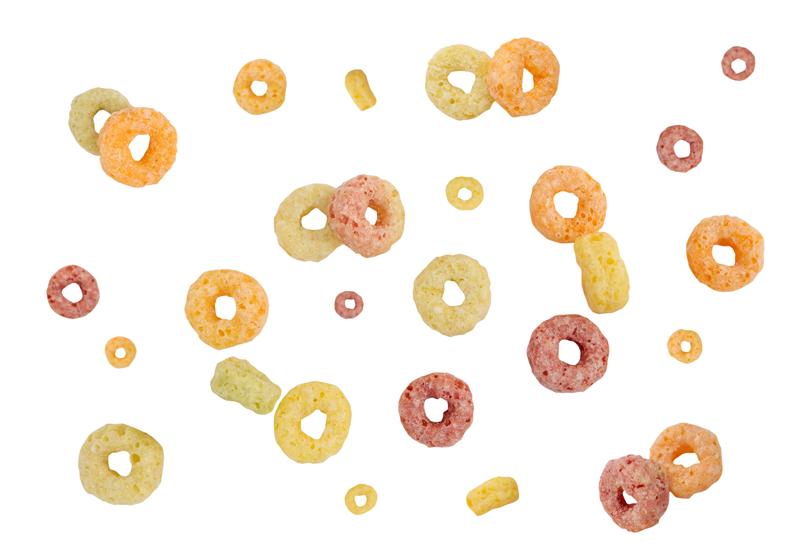
Ultra Processed foods 10 tricks to spot them
Reading the label is essential: just a few flavourings can make even a yoghurt a health hazard
by Michela Becchi
To simplify things as best we can, we could sum it all up in one rule: if a product can be replicated at home with everyday ingredients, no problem, otherwise it is good to get a wake-up call. We are almost certainly dealing with ultra-processed foods. And no, this is not “simply” junk food.
The new poison
The alarm about ultra processed foods has come from Anglo-Saxon countries, where the issue has become central to all national newspapers and industry sites in recent years. In the United Kingdom, in particular, not a day goes by without renewed emphasis on the many health risks (at least 32, according to the latest research), but the first hurdle in many cases is recognizing similar products. In May 2023, the New York Times published a quiz on the subject, and the answers are by no means obvious: sometimes, even a plain white yoghurt can become a potential danger to the body. Reading the label is essential: additives, colorings, flavourings (even “natural” ones, which may contain emulsifiers) are all elements that rightfully put a food in the ultra-
processed category.
The most recent study (published in the British Medical Journal) suggests that diets high in ultraprocessed foods may be harmful in several ways.
The analysis, which looked at nearly 10 million people, emphasised the need for measures to target and reduce exposure to such foods. The publication involved expert researchers from several institutions, including the Johns Hopkins Bloomberg School of Public Health in the U.S., the University of Sydney and the Sorbonne in France. We turned, then, to a practitioner, Carlos Monteiro, a researcher and professor emeritus at the University of São Paulo in Brazil, who together with a group of scientists devoted a careful study on the subject, published in the public health journal Public Health Nutrition. Here’s what we figured out with his help.
10 things to know
1. Ultra-processed foods are a mix of low-cost substances and additives
Designed to be enticing to consumers and maximise industry profits, ultra-processed foods are formulations of substances and additives, with little or no real food inside. They are edible, yes, but
54

they cannot be considered full-fledged foods.
2. If it contains aromas, it is ultra-processed
The Nova classification is a system created by the University of São Paulo in 2009 to group edible substances according to the extent and purpose of food processing. So-called Nova markers can identify ultra-processed foods by the presence of flavourings, colourings, emulsifiers, thickeners and other additives among the ingredients.
3. Can’t replicate it at home? Then it is ultraprocessed
A simpler and more straightforward system for recognizing ultra-processed foods is this: just ask yourself whether, theoretically, you could replicate the recipe at home with the ingredients available in your pantry. If the answer is no, it is most likely an ultra-processed food.
4. There is no safe consumption dose
The more ultra-processed food you ingest, the more health risks there are (the British Medical Journal speaks of 32 harmful effects, including heart disease, cancer, type 2 diabetes, obesity, impaired mental health and early death). Current research, however, does not allow for a safe
The most vulnerable are at risk
As far as food is concerned, information is necessary - indeed, essential - and a reformulation of products on the market with respect to health risks and their labels would be most urgent. When talking about ultra-processed foods, however, one should also keep in mind the social aspect (see box on page 17) that involves the lifestyles of millions of people. Most of these generally low-cost foods (because they are produced with inexpensive ingredients) are consumed mostly by the marginalised, economically disadvantaged and weak groups. Culturally weak as well. For example, it is interesting to analyse the study conducted by the Indian NGO People’s Human Rights Watch Committee last year that led to calls for urgent policy measures to make healthier products available in the market, as well as to introduce clear warnings about packaged foods that are bad for health. More than 90 percent of the respondents who said they routinely consumed ultra-processed foods had an average daily income of 400 rupees (about 4.5 euros) or less, and 40 percent of these were from the marginalised Musahar community, among the poorest there is. Most, then, were not even schooled. Those born on the “right” side of the world can choose for their health, but what about all those who do not have that choice?
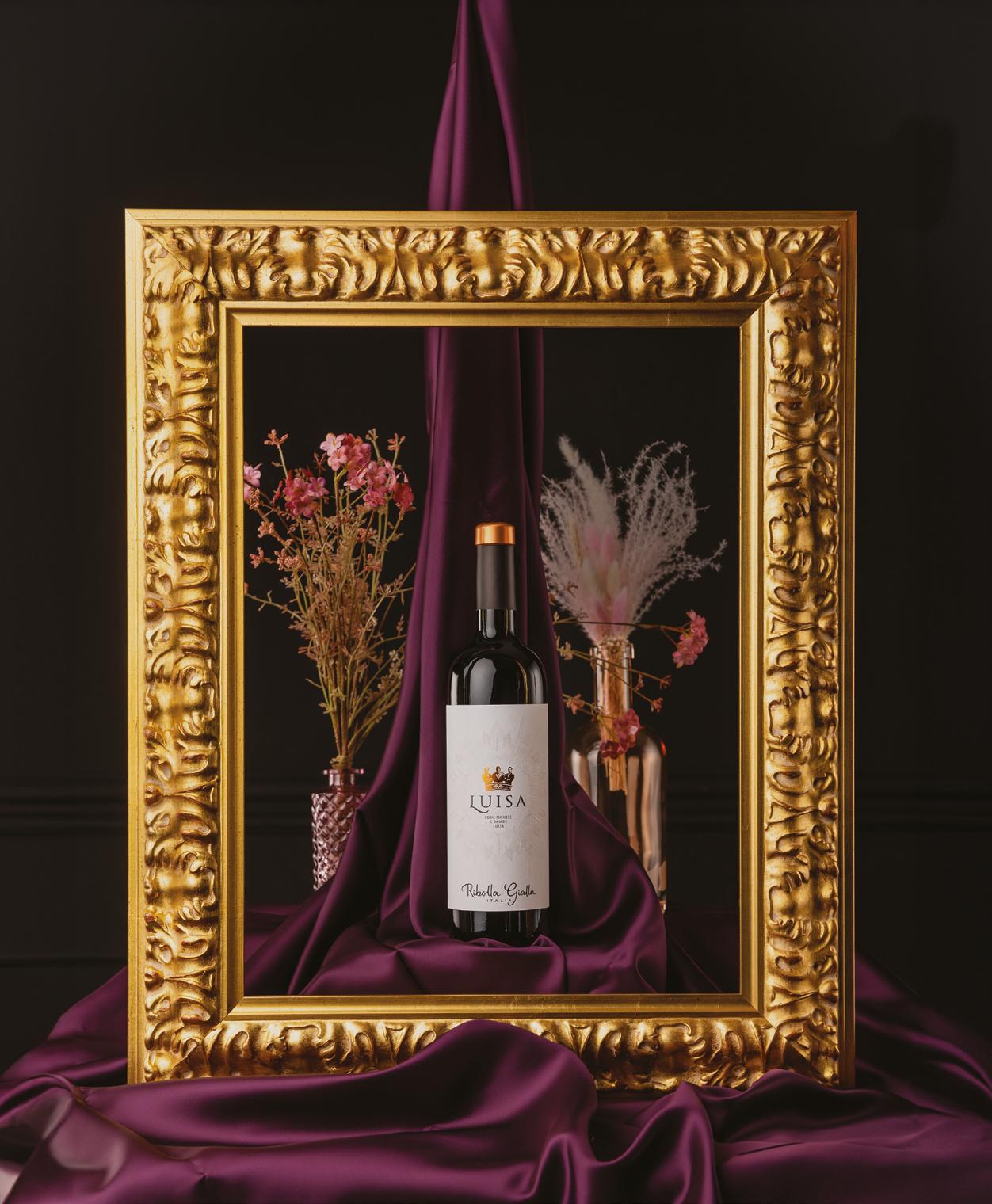
level of consumption: in short, there are no recommended doses below which there are no direct consequences. Although, according to Dr. Monteiro, moderation is always the key: one ultraprocessed food a week should tend not to bring major consequences.
5. Spirits are not ultra-processed, but distilled spirits come close
The Nova system does not consider alcoholic beverages. Following the principles used by this classification, however, wine and beer are conceptually similar to processed foods, whereas spirits are closer to ultra-processed.
6. How “processed foods” become ultra-processed
Processed foods are all those that undergo some form of alteration before being put on the market. Some of these, however, can also be ultra-processed depending on the case: a bread made with flour, water, yeast, and salt is a
processed food, but in the case of loaves of bread to which emulsifiers or dyes are added, then we can consider it an ultra-processed food. White yoghurt is a minimally processed food, but if whey, thickeners, and flavourings are found inside it, then it becomes ultra-processed.
7. Canned foods are not ultra-processed (and neither are many frozen foods)
There is often confusion on the subject, but the rule is always the same: if you can easily remake them at home, then you are on the safe side. Canned foods belong to the Nova 3 group, which is that of processed foods. So do most frozen foods such as ready-to-eat vegetables or fish fillets, different is the case with snacks, ice cream and other products with flavourings and all the other elements that make the product labelled as ultra-processed.
8. Vegetable drinks: depends on the case


Technically, a vegetable drink is simply made from oats, soybeans, or rice soaked or boiled and then blended and strained. Processes that automatically make them count as processed foods. Many products on the market, however, contain emulsifiers, soy protein isolate...which turn them into ultra-processed (watch the label).
9. All plant-based meat substitutes are ultraprocessed
Things might be different, but in practice most (if not all) fake burgers, various plant-based meat substitutes, are ultra-processed.
10. Ultra-processed foods are not just junk foods
The term junk food is rather broad and vague. Many ultra-processed foods are not among those generally considered bad, fatty, junk foods: for example, protein bars, energy drinks so beloved by athletes, many plant-based alternatives to meat are ultra-processed.
British scientists vs. ultra-processed foods
«Direct associations have been found between exposure to ultra-processed foods and 32 health parameters including mortality, cancers, and impaired mental, respiratory, cardiovascular, gastrointestinal and metabolic health,» is the conclusion of the British Medical Journal. «We have a good understanding of the mechanisms by which these foods cause harm,» says Chris van Tulleken of University College London, among the world’s leading experts on the subject. «In part, this is because of their poor nutritional profile, but also because of the way they are processed.» Ingredients include hydrolysed proteins such as those from soy and whey, gluten, casein, and even mechanically separated meat. And then corn syrup, fruit juice concentrates, maltodextrins, dextrose, soluble or insoluble fibre. «They are formulated in such a way as to push consumption,» van Tulleken explains, «and are aggressively marketed, usually to the most disadvantaged communities».


Recipes from emerging chefs
GLORIA CLAMA
by Clara Barra – photos by G. Michelini/LuckyDesign
Born in Tolmezzo (UD)
Age 46
Resident in Tolmezzo (UD)
LATEST DOWNLOADED ALBUM
Il ballo della vita by Måneskin
LAST BOOK YOU READ
Kräuterreich by Vitus Winkler
MOST LOVED INGREDIENT
Hay
LEAST LOVED INGREDIENT
Mushrooms (although I like to challenge myself and make something special using them)
THE DISH OF A LIFETIME
Hay gelato, reminds me of my grandmother
GRAND MAESTRO WORSHIPED
I respect all of them, if I really had to name one I would say Alessandro Gilmozzi
MOST ESTEEMED PEER
David Muñoz
RESTAURANT NAME >Indiniò
RESTAURANT CONTACTS
Raveo (UD) via Norsinia, 21/B 329 4626486 www.indinio.it
SEATS
24
RESTAURANTS BEFORE THIS ONE
It’s my first restaurant, before this I worked in a factory as a floor handler
MY IDEA OF CUISINE
It’s based on the passion I have for my local area, trying to put the flavours I find in nature into my dishes, according to the principles of foraging and sustainability
FAVOURITE RESTAURANT ABROAD
Every restaurant manages to surprise me
ONE WINE ABOVE ALL OTHERS
Artiûl 2016 Merlot Riserva Colli Orientali del Friuli DOC by Ronco Severo
HAD I NOT BEEN A CHEF…
I never really thought about that, I think I’ve found my path.
THE DISHES
Tartare di salmerino marinato alla melissa, gel di rosa Damascena, mela verde, maionese alle erbe e olio al levistico
SOUS CHEF
Massimiliano Galante
AGE 20
KITCHEN BRIGADE
Massimiliano Galante
Anes Odobasic
IN THE DINING ROOM
Mirco Brovedani
Ambra Gressani
SOMMELIER
Mirco Brovedani
61



most extensive collection of wine accessories for professionals on the market” www.pulltex.com
“The



>Tartare
of char marinated with lemon balm, Damask rose gel, green apple, herb mayonnaise and lovage oil
INGREDIENTS FOR 4
For the char
1 kg char
1 kg sugar
600 g salt
20 g lemon balm
20 g of parsley
For the Damask rose gel
500 ml water
5 g Damask rose buds
5 g agar agar
2 g sugar
For the apple 1 apple tarragon oil
For the herb mayonnaise
160 ml herb oil (grapeseed oil and sweet herbs)
80 g egg white lemon juice salt
For the char
Fillet the char without removing the skin. Mix the salt with the sugar and chopped herbs and marinate the fish in the mix for 2 hours. Remove the dry rub, remove the skin and bones, and chop into tartare.
For the Damask rose gel
Steep the buds in water, wait 5 minutes and strain. Add agar agar and bring to a boil, add sugar, let cool and whisk to obtain a gel. Place in a squeeze bottle and keep aside.
For the apple
Cut the apple into brunoise and marinate for 10 minutes in the tarragon oil.
For the herb mayonnaise
Using an immersion blender, blend the egg whites with the lemon juice and salt, then add the oil in a drizzle like for regular mayonnaise.
Plating
Place the char tartare in the centre of the plate, then garnish as desired with wild herbs, rose gel, and herb mayonnaise. When serving, pour a little lovage oil over the char.











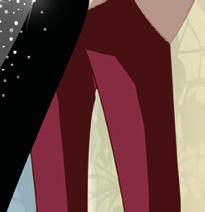

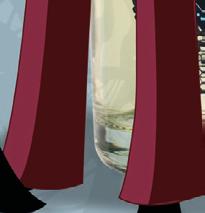



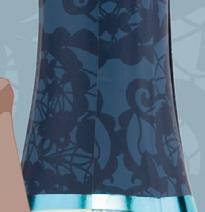



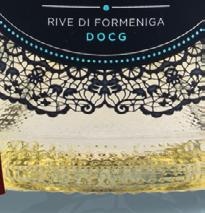





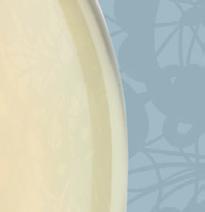
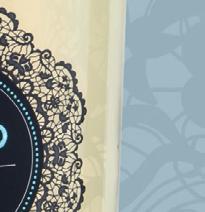
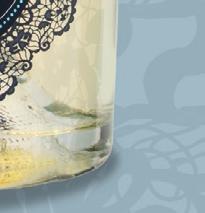


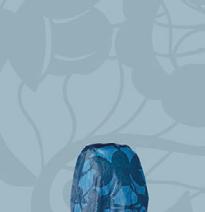

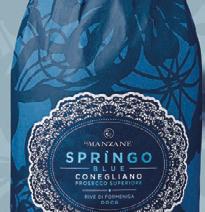















INGREDIENTS FOR 4
For the pasta dough
250 g “00” flour
135 g yellow yolks
30 ml water
8 g extra virgin olive oil
8 g salt
For the filling
200 ml cream
120 g caciotta cheese
6 g potato starch
5 g salt
For the wild garlic
500 g wild garlic, rinsed and blanched
100 g cubed butter
20 g salt
For the garnish wild garlic capers fermented mountain pine cone powder
>Ravioli,
For the dough
caciotta,
wild garlic and its capers
Knead all the ingredients in the stand mixer. Form a ball, wrap it in plastic wrap and let it rest in the refrigerator for at least 30 minutes. After this time, roll out the dough and form the ravioli with the caciotta filling.
For the filling
Place the cubed cheese and cream in the Bimby and bring the mixture to 75°C for 5 minutes, then add the potato starch and salt, then increase the temperature to 85°C and cook for another 5 minutes, let cool and place in a pastry bag.
For the wild garlic
Pour all ingredients into pacojet glass and place in a blast chiller, process at time of service.
Plating
Cook the ravioli in boiling salted water, place them in the dish and season with the wild garlic, capers and fermented pine cone powder.
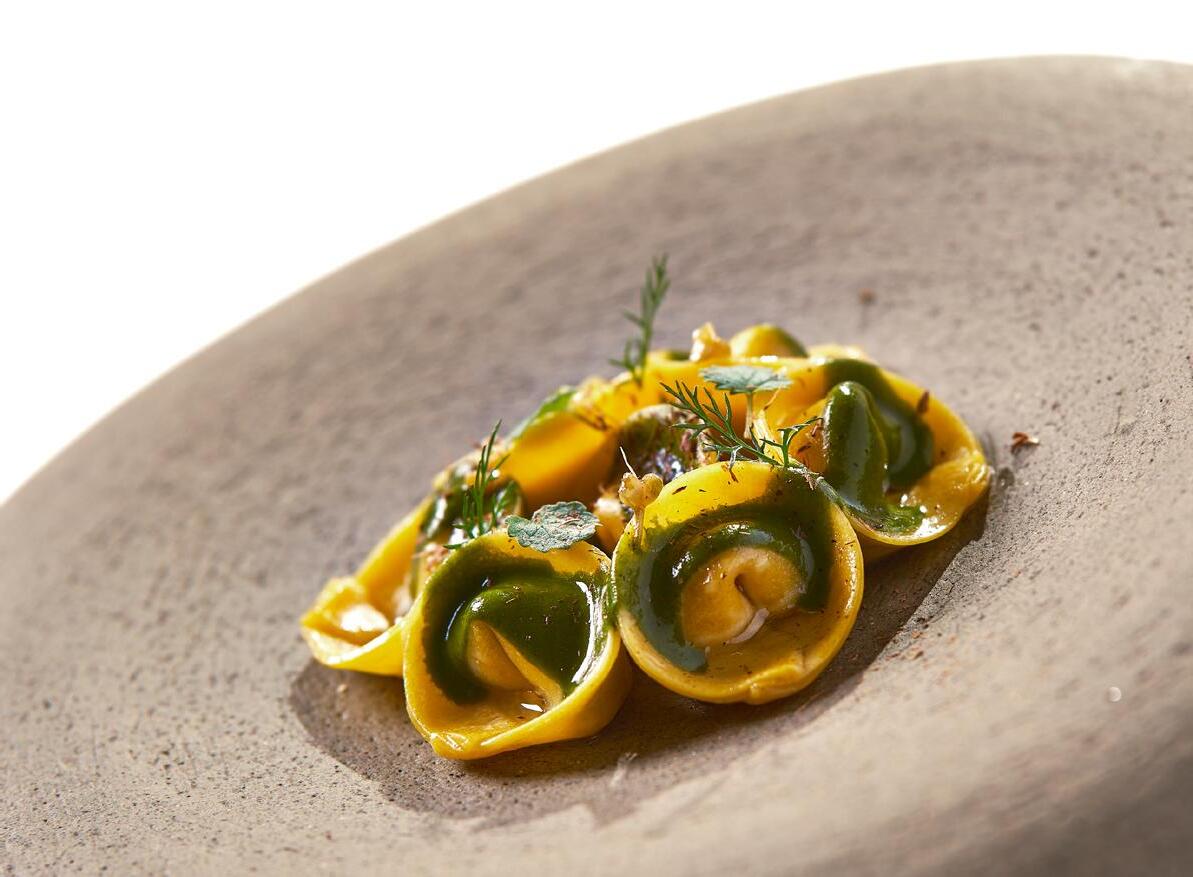
>Lacquered venison loin with hay and meadow curry, fermented cauliflower sauce, buttered cauliflower and creamed broccoli
INGREDIENTS FOR 4
For the venison
1 kg venison loin
Extra virgin olive oil salt
For the hay glaze
200 ml of hay syrup (hay macerated in sugar syrup)
20 g meadow curry powder (dried meadow and forest spices and herbs)
For the fermented cauliflower 1 cauliflower
50 ml apple balsamic vinegar
Resia garlic fermented 40 days salt
For the buttered cauliflower 1 cauliflower
500 g ghee (clarified butter) salt
For the broccoli cream 1 kg broccoli, blanched salt

For the venison
Cook the venison in a pan while maintaining a core temperature of 52°C.
For the hay lacquer
Steep the curry with the syrup and reduce to half, then strain..
For the fermented cauliflower
Cook cauliflower in Ocoo for 7 hours, blend with the rest of the ingredients, then put the mixture in a squeeze bottle.
For the buttered cauliflower
Cook cauliflower dipped in butter until golden brown and tender, then season with a pinch of salt.
For the broccoli cream
Blend the broccoli by adding a little water until creamy, adjust seasoning and place the mixture in a squeeze bottle.
Plating
Lay the cauliflower on the plate, add a pinch of salt, place a little of both sauces on the side, lay next to the venison and pour over some of curry and hay syrup.
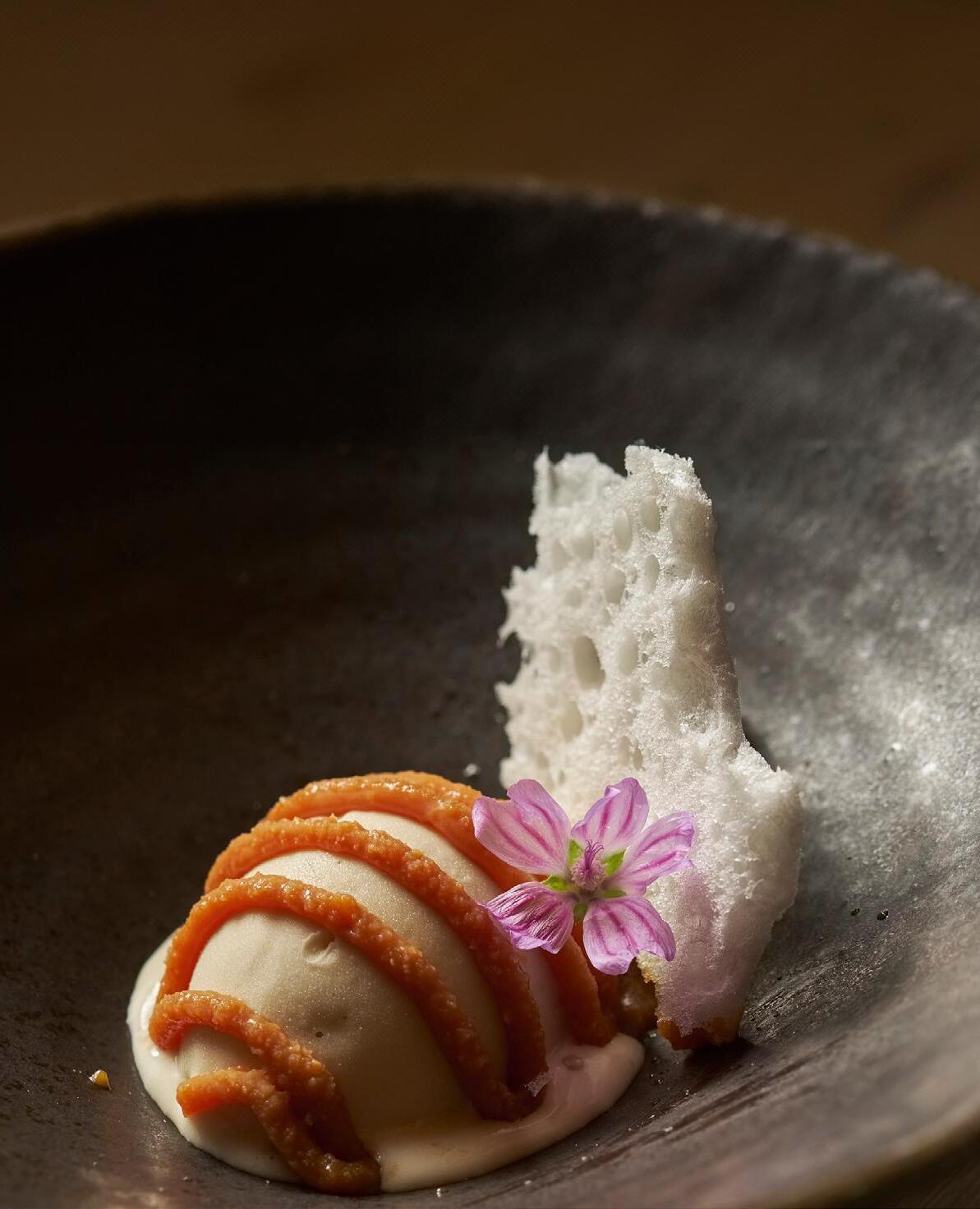
INGREDIENTS FOR 4
For the gelato
1300 g flavoured milk: 200 g of hay soaked in milk overnight
272 g sugar
260 g cream
100 g gelato base
62 g powdered milk
25 g glucose
25 g dextrose
For the dried milk foam
300 g whole milk
225 g glucose
For the whey toffee
2 l milk whey
200 g sugar
100 g butter o
>Latte e fieno
For the gelato
Heat the milk and add all the powders, bring to 85°C for 5 minutes then add the cream, pour the mixture into an ice cream maker and process until the ice cream is ready.
For the dried milk foam
Heat the milk and glucose to 80°C, whisk with a blender until it forms a foam, then pour it onto a silicone mat and let it dry at 70°C for 6/7 hours or until completely dried.
For the whey toffee
Make caramel by heating sugar, add whey and cook to desired consistency, toward the end add cold cubed butter.
Plating
Form a quenelle with the gelato and place it on the plate, add toffee and a wafer of dried milk.
travel

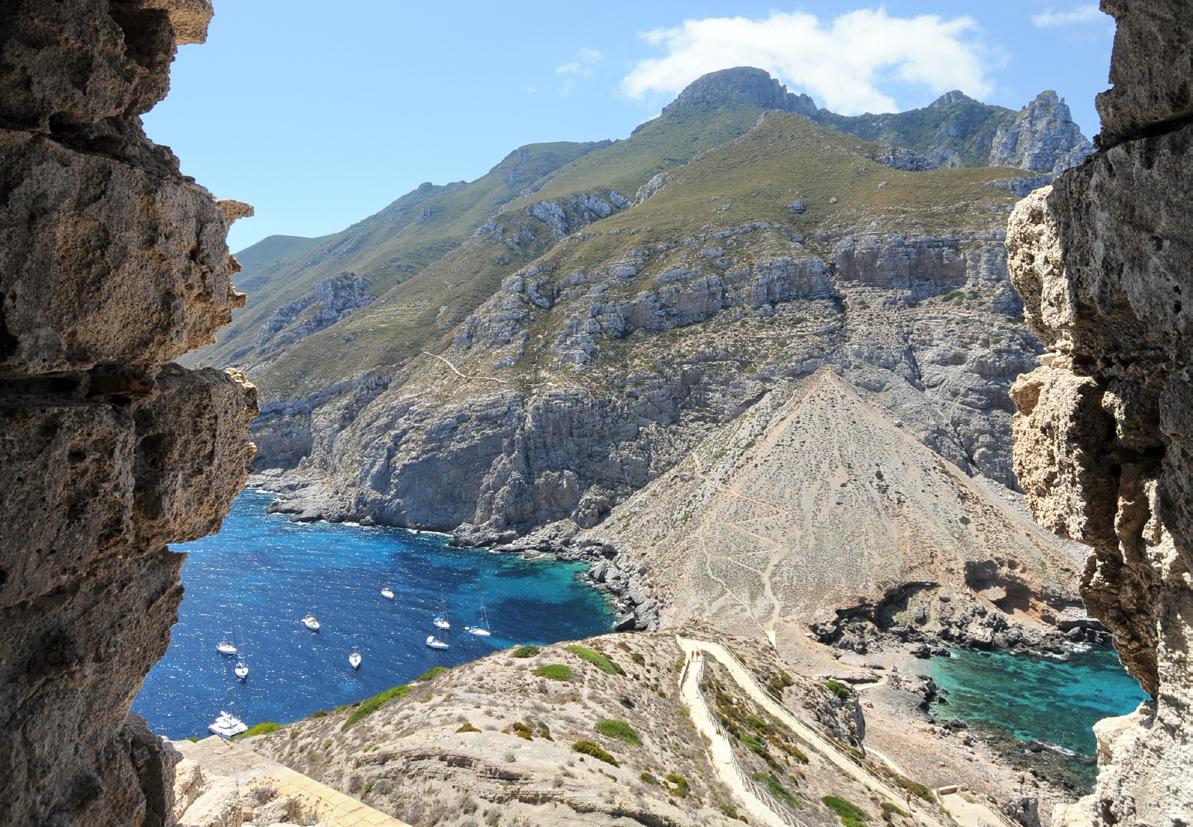

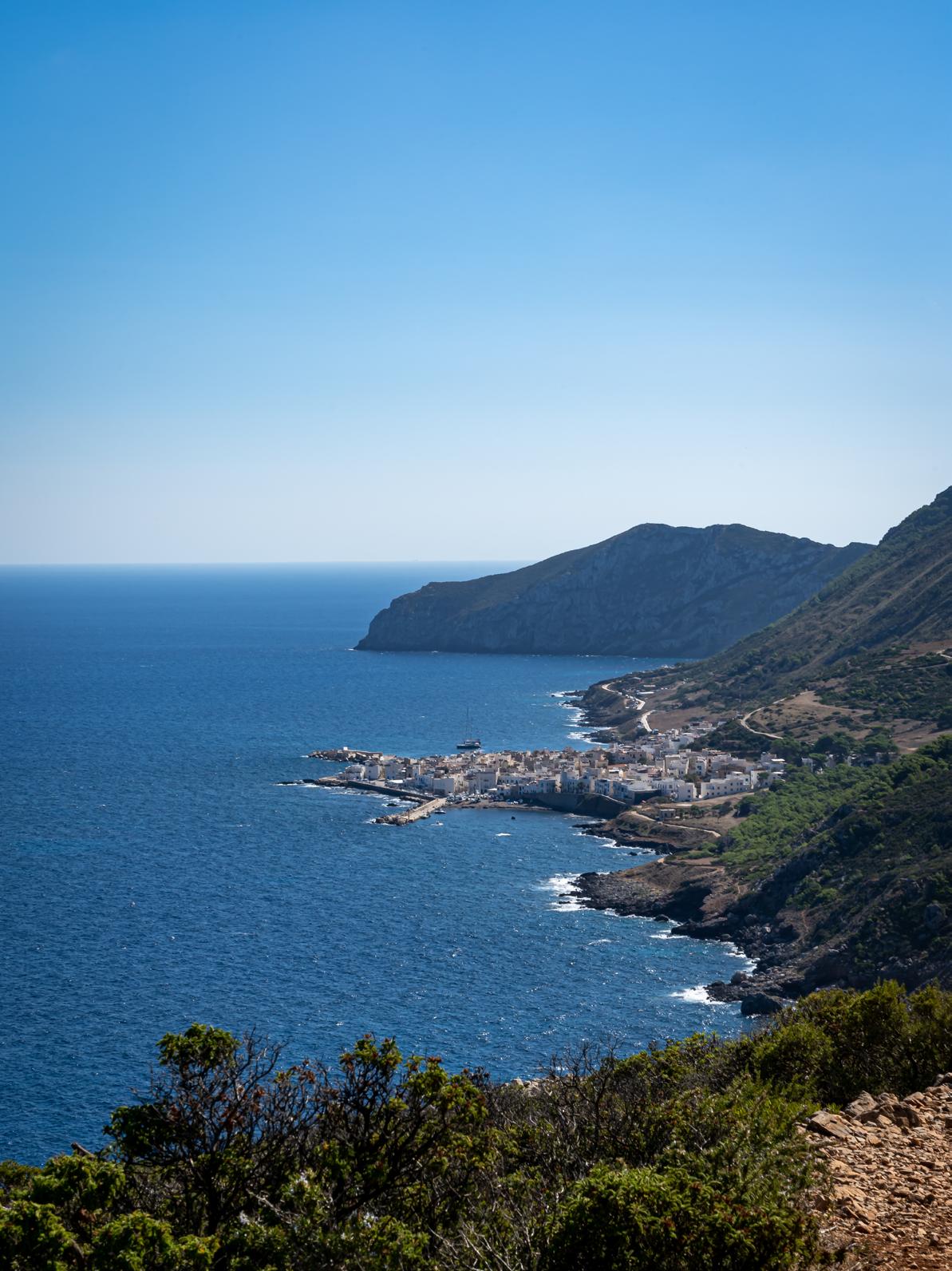
Marettimo The wild side of the Egadi Islands
Far from mass tourism, it’s the ideal f or a seaside and nature-rich vacation in the name of the thousand flavours of tuna
by Alessio Turazza
Secluded and wild, Marettimo has retained a reserved and elitist profile. The most distant of the Egadi islands, it features high limestone cliffs covered by Mediterranean scrub that plunge into a crystal-clear turquoise sea. The white houses with blue windows of the small seaside village are reminiscent of the Greek landscape of the Cyclades. The rocky coastline offers no landings and hides on the western side an infinity of beautiful caves and spectacular sheer cliffs. This beautiful part of Marettimo falls within the integral protection zone of the Egadi Islands Marine Protected Area and can only be visited by authorised local boats. Marettimo is a small paradise for those who like to live in contact with nature in a simple and spartan way, far from noisy tourism, unbridled luxury and worldliness. There is only one small residence on the island, and the rest of the hospitality is organised in rooms of various types in residents’ homes. Thanks to this far-sighted choice, the village has preserved its original appearance. The island’s residents have always devoted themselves to subsistence farming and fishing. It was a hard and isolated life, which at the beginning of the last century prompted many of the inhabitants to emigrate to the United States. Marettimians made their fortunes mainly along the coasts of San Francisco and Monterey thanks to their fishing skills. Until the 1960s, Marettimo also had a fleet of offshore fishing boats, but then the tuna fishing crisis, generational change and the development of tourism decreed the slow decommissioning of the large boats.
The gastronomy of Marettimo
Anche Although the Tonnara of Favignana has long ceased its activities and only a few small coastal fishing boats remain in Marettimo, tuna and its products continue to be the symbol of Egadi gastronomy. In addition to stores that sell tuna
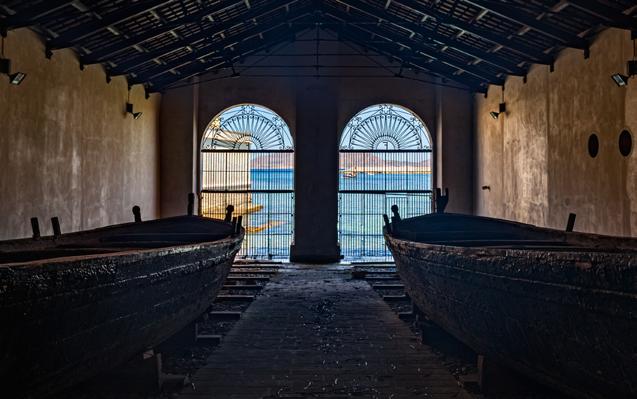
The Tonnara of Favignana. Inside the structure there is also the restaurant-wine bar Camparìa
products, Marettimo’s restaurants offer various tasting menus dedicated to tuna that are true journeys into local tradition. It is no coincidence that tuna is considered the “pig of the sea,” precisely because all its meat is used. The classic “tasting platter” consists of various specialties: from tartare to smoked tuna, from botargo to a long series of other preparations such as lattume.
Tuna products
The most valuable part of tuna is the Filet, which is made from the leaner, tastier meat of the sides of the fish. It is used to prepare carpaccio, tartare or for slices to be grilled. Another part that can be used for grilled cooking is the back, the leanest part of the tuna, which is tasty but has a drier texture. In contrast, the ventresca is highly sought after for its tenderness: it is obtained from the abdominal area and flanks of the fish and, thanks to the presence of a good percentage of fat, has very tasty meat. One of the best known products is bottarga, which is made from the salted,
Favignana and the Tonnara
Favignana, the largest of the Egadi islands and also the most famous and visited by tourists. In addition to the beautiful coves of Cala Azzurra, Cala Rossa, Cala Rotonda and Bue Marino, the island has traces of the ancient tuna fishing activity, managed for centuries by the Florio Family. Near the port you can visit Villa Florio, built by Ignazio Florio in 1874 to a design by Giuseppe Damiani Almeyda in neo-Gothic style. The most fascinating structure on the island is the Tonnara, built in the mid-19th century and operated by the Florio family from 1874, when it acquired fishing rights on the Egadi Sea. The Tonnara’s imposing buildings are a magnificent example of industrial archaeology and now house a museum dedicated to the history of tuna fishing. Another interesting example of the renovation of old architectural spaces of the tonnara is Camparìa: a restaurant-wine bar, which offers a menu of traditional Sicilian dishes with a focus on typical tuna products.

ADDRESSES
Ristorante Hiera
MarettiMo 0923 923017
Camparìa
Favignana
320 4630936
Sottosale
Favignana
320 8432916
329 7726127
Tenuta Calamoni Favignana 0923 861679
Villa Florio Favignana 0923 925443
Tonnara
Favignana
338 5365899
Levanzo, the most beautiful sea
The island of Levanzo, in addition to a turquoise and crystal clear sea, holds an archaeological site that testifies to human presence in Paleolithic and Neolithic times. The Genovese Cave was discovered in 1949 and preserves an extraordinary wealth of rock paintings and engravings of human and animal figures. The cave is located on the northwestern side of the island, at a height of about thirty metres above sea level. The walls of a large karst cavity house a magnificent example of rock art. The cave also represents evidence of the geological origins of the Egadi archipelago. Indeed, it should come as no surprise that the paintings and carvings depict mainly cattle and large mammals. In the Upper Paleolithic, the reliefs of Levanzo and Favignana were part of the Sicilian mainland. It is assumed that humans lived in the Levanzo cave and hunted in the grasslands of the flat area that connected the Levanzo promontory to Sicily. Only with the subsequent melting of the glaciers and the rise of the Mediterranean Sea was Levanzo surrounded by the sea.
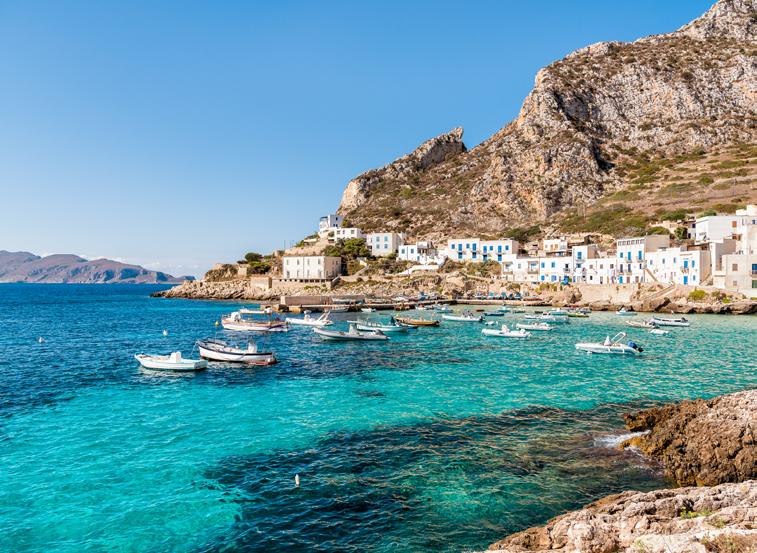
pressed and dried tuna roe. If the eggs are transformed into bottarga, with the same process the seminal sacs of male tuna become lattume or figatello: A delicacy with a pinkish colour and a very delicate taste, which can be enjoyed in slices or on pasta. The same processing as roe is also used to prepare tuna heart, which is eaten very thinly sliced with oil and lemon: however, its strong and intense flavour is not suitable for all palates. Ficazza, or tuna salami, is made from the leftovers of the most valuable parts. The preparation process is similar to traditional salami: the meats are minced, seasoned with salt and pepper and then packed in casings. After ageing for several weeks, the ficazza is ready for tasting. Like the heart, the salami also has a rather strong and persistent taste. Where there is a salami, then, there can be no shortage of sausage, which here is called casing. The preparation is similar to ficazza and it can be eaten raw or grilled. The most prized tuna sausage, however, is mosciame (or tuna ham), which actually looks a lot like a seafood bresaola: it comes from the meat of the tarantello (the part of the belly in the lower part of the animal’s abdomen) that is salted and then dried. The mosciame has a delicate taste and is also served with oil and lemon. The darker meat, obtained from the central bone of the tuna, is finally cut into small pieces and put in oil to create buzzonaglia: very good to use to make a seafood ragout, or to eat in salads together with cherry tomatoes, olives and capers.
A view of Levanzo, the small island with the most beautiful seabed and coastline in the Egadi Islands
73
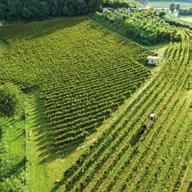
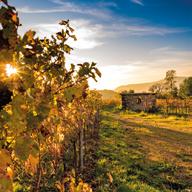






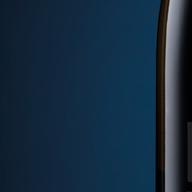

Un


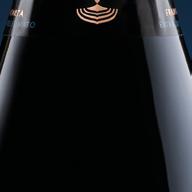
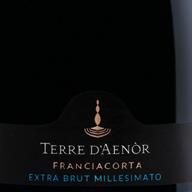
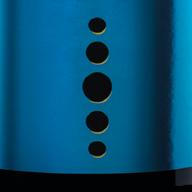





Un mood che senti subito tuo.
Un nuovo Franciacorta.

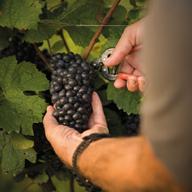











 mosaico di forme e colori vibranti.
mosaico di forme e colori vibranti.

Ristorante Hiera
Marettimo’s dining scene offers good traditional seafood dishes, but overall it is positioned within a somewhat standardised tourist offer. In the rather homogeneous panorama of the island, the Hiera restaurant stands out: it is the oldest accommodation establishment on the island and has managed to preserve an authentic family character. Under the cool pergola of the inner garden, Maria Sercia welcomes customers as if at the table at home. Her cuisine is simple, based on local produce, seasonal vegetables, and fish that arrives fresh from Marettimo fishermen. Dishes are reminiscent of the homemade flavours of yesteryear, but are made with care and passion. Don’t miss the mixed
A dish from the Hiera restaurant in Marettimo:
Etna in eruption with urchins and ricotta cheese on pasta with cuttlefish ink
Seaside viticulture
appetiser “Hiera’s Lighthouse,” the Caponata di Terra e di Mare, the fettuccine “Etna in eruzione” with squid ink, sea urchins and ricotta, the Paccheri with fava bean and seafood velouté, the spicy ammuddricate Cuttlefish with breadcrumbs, and Octopus Tentacles with island aromas. If there are lobsters, don’t miss the Marettimo Lobster Soup, the classic traditional dish born on fishermen’s boats.
If the Aeolian Islands, strong in an ancient winemaking tradition, continue to express very interesting wines (particularly in Salina and Lipari) we cannot say the same about the Egadi Islands. The settlement of the Phoenicians in Mozia and the first commercial ports of call along the coast gave rise to a winemaking tradition that developed mainly on the coast of Trapani and Marsala. Mountainous Marettimo has terrain poorly suited to vines, with extreme slopes and rocky soils. In Levanzo, on the other hand, in the centre of the island, is the ancient Masseria Florio. Built at the end of the 19th century, it had a large agricultural estate devoted to arable crops and vineyards, which unfortunately fell into disrepair with the decline of the family. Today traces of the old terracing remain, and who knows whether the Prada family, the new owners, might decide to restore the old vineyards. Even in Favignana viticulture had disappeared by then, and it is due to the Firriato winery to restore the tradition with new vineyards. Tenuta Calamoni is along the southern coast, between Punta Longa and Puntazza, a few metres from the sea. The five hectares of vineyards rest on calcarenite soils rich in marine fossils. Following the traditions of the area, grillo, catarratto, zibibbo and the red grapes nero d’Avola and perricone have been planted: bush-trained or espalier-trained and located within a context with an extreme microclimate, hot, dry and very windy. A viticulture of the sea that is reflected in the brackish and saline profile of the wines, connoted by a typically Mediterranean personality. Three labels are born on the Calamoni Estate: Favinia La Muciara is a blend of grillo, catarratto and zibibibbo; Favinia Passulé is a pure zibibbo; and Favinia Le Sciabiche is a red made from nero d’Avola and Perricone.
























 Massimiliano Cattozzi, head of Intesa Sanpaolo’s Agribusiness department.
Massimiliano Cattozzi, head of Intesa Sanpaolo’s Agribusiness department.













































































































































































 mosaico di forme e colori vibranti.
mosaico di forme e colori vibranti.
